What kind of tourism is in the Philippines?
The Philippines offers a wide variety of tourism, including eco-tourism, cultural and historical tourism, adventure tourism, food tourism, religious tourism, and health and wellness tourism, each providing unique and immersive experiences.
Table of Contents

Unique Aspects of Philippine Tourism
The Philippines, with its stunning natural beauty and rich cultural heritage, presents a unique tourist experience unlike any other. Known as the “Pearl of the Orient Seas,” this tropical paradise features an exceptional blend of Eastern and Western influences, shaped by a history of foreign colonization and its own indigenous traditions.
Diverse Landscapes
Boasting over 7,000 islands, the Philippines offers a wide range of landscapes. From pristine white-sand beaches and crystal-clear waters to verdant mountains and lush rainforests, there’s no shortage of natural wonders to explore.
Rich Cultural Heritage
Another unique aspect lies in the country’s vibrant culture. Its heritage is a captivating tapestry woven from the threads of Malay, Spanish, American, and indigenous influences. The blend of these influences is evident in the local architecture, art, language, and most especially, in their festivals, known locally as ‘fiestas.’
Natural Attractions
Cultural and historical tourism.
Cultural and historical tourism is an essential part of any trip to the Philippines. The country is rich in history, showcasing a diverse array of cultural influences and historical events that have shaped its unique identity.
Historic Cities and Landmarks
Steeped in history, cities like Manila , Cebu , and Vigan provide an enriching experience. They house several notable landmarks such as the walled city of Intramuros in Manila, the Basilica del Santo Niño in Cebu, and the preserved Spanish colonial houses in Vigan, a UNESC
O World Heritage Site.
Philippine Museums and Art Galleries
The Philippines is also home to various museums and art galleries that showcase the country’s rich cultural and artistic heritage. The National Museum in Manila, for instance, houses invaluable artefacts and works of art that speak volumes about the country’s history and culture.
Indigenous Tribes and Traditional Filipino Culture
The country’s indigenous tribes also play a significant role in the cultural fabric of the Philippines. Tribes like the Ifugao in the Cordilleras, the T’boli in Mindanao, and the Palaw’an in Palawan preserve and promote the country’s indigenous customs, traditions, and art forms.
Adventure Tourism
Diving and snorkeling spots.
The country is one of the world’s top destinations for diving and snorkeling, thanks to its rich marine biodiversity.
Hiking and Trekking Adventures
The archipelago also offers numerous hiking and trekking opportunities,with trails leading to spectacular views and encounters with local flora and fauna. One can conquer the country’s highest peak, Mount Apo , or experience the mesmerizing landscapes of the Banaue Rice Terraces.
Extreme Sports and Activities
For those seeking thrills beyond hiking and diving, the Philippines doesn’t disappoint. One can surf the impressive waves of Siargao, go whitewater rafting in Cagayan de Oro, or try skydiving in Pampanga.

Food Tourism
Food is an integral part of the travel experience, and the Philippines offers a unique culinary journey that caters to various palates.
Traditional Filipino Cuisine
Traditional Filipino cuisine is as diverse as the country’s geography and cultural history. Notable dishes include Adobo, a savory stew of meat marinated in vinegar, soy sauce, and garlic; Sinigang, a tangy tamarind soup; and Lechon, a whole roasted pig often served at festive occasions.
Food Markets and Street Food Culture
The country’s food markets and street food culture are an adventure in themselves. Markets like the Salcedo Community Market in Makati and Baguio City Public Market in the north offer a variety of local produce, freshly prepared meals, and regional specialties. Street food, with delicacies like balut (duck embryo), isaw (chicken intestines), and kwek-kwek (deep-fried quail eggs), is a must-try for the adventurous eater.
Culinary Classes and Food Tours
For those keen on learning the secrets of Filipino cuisine, culinary classes and food tours are available across the country. Companies like the Philippine Culinary Heritage Movement and Old Manila Walks offer immersive food experiences that teach you how to cook local dishes and understand the country’s culinary traditions.
Religious Tourism
The Philippines, being a predominantly Christian country, offers numerous religious sites and experiences that attract tourists and pilgrims alike.
Churches and Religious Landmarks
Several churches and religious landmarks, like the San Agustin Church in Manila, the Basilica del Santo Niño in Cebu, and the Paoay Church in Ilocos Norte, exhibit the country’s rich religious heritage and architectural splendor.
Religious Festivals and Pilgrimages
Religious festivals, or ‘fiestas,’ occur throughout the year and across the country. These include the Sinulog Festival in Cebu, the Ati-Atihan Festival in Kalibo, and the Pahiyas Festival in Lucban.
Eco-Tourism
The Philippines, with its wealth of natural resources, has embraced eco-tourism as a way to preserve its stunning landscapes while fostering sustainable tourism practices.
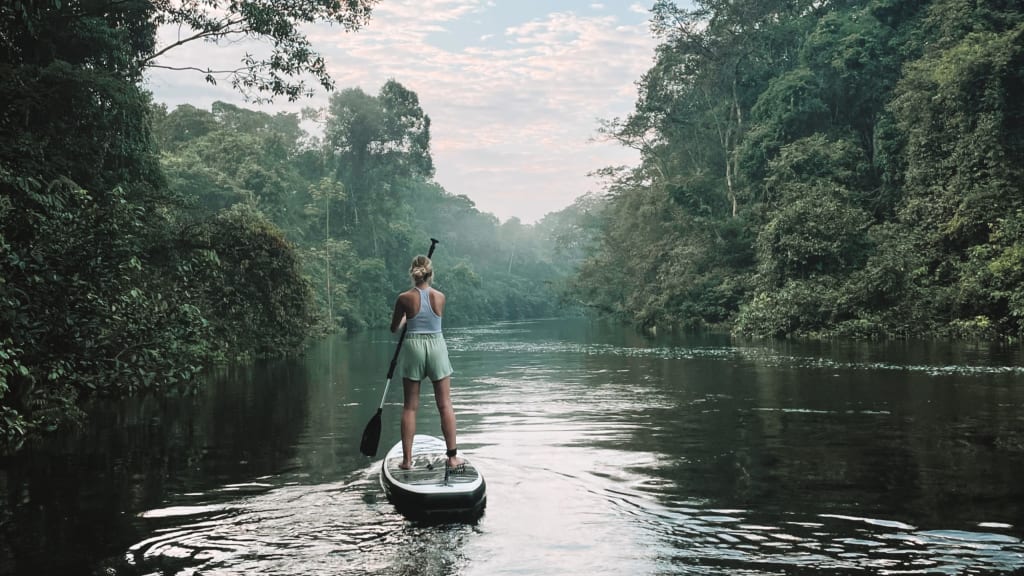
Sustainable Tourist Spots
Many eco-tourism sites in the country are working towards sustainability. The Tubbataha Reefs Natural Park , a UNESCO World Heritage Site, showcases the richness of the country’s marine biodiversity.
Eco-friendly Practices and Initiatives
There’s also a growing emphasis on eco-friendly practices and initiatives. In Boracay, a popular island destination that underwent a six-month rehabilitation, initiatives have been implemented to control tourist numbers and ensure the island’s sustainable future. Meanwhile, businesses across the country are also embracing green practices, from eco-friendly accommodations to restaurants promoting locally-sourced and organic food.
Health and Wellness Tourism
The Philippines is an emerging destination for health and wellness tourism.offering a range of services designed to soothe the body and mind.
Spa and Wellness Centers
The country offers various spa and wellness centers that combine modern wellness practices with traditional Filipino healing techniques. Top wellness destinations like The Farm at San Benito and Nurture Wellness Village offer a wide range of services, from therapeutic massages to holistic wellness programs, in settings that allow guests to commune with nature.
Yoga and Meditation Retreats
The Philippines is also home to numerous yoga and meditation retreats. Places such as Bahay Kalipay in Palawan . Mandala Spa and Resort Villas in Boracay offer yoga classes, meditation sessions. wellness workshops amidst serene natural environments, providing the perfect setting for relaxation and introspection.
Related Posts
Is tourism high in the philippines, what is the most visited place in the philippines, why is philippines rich in tourism, what are some benefits of tourism in the philippines.

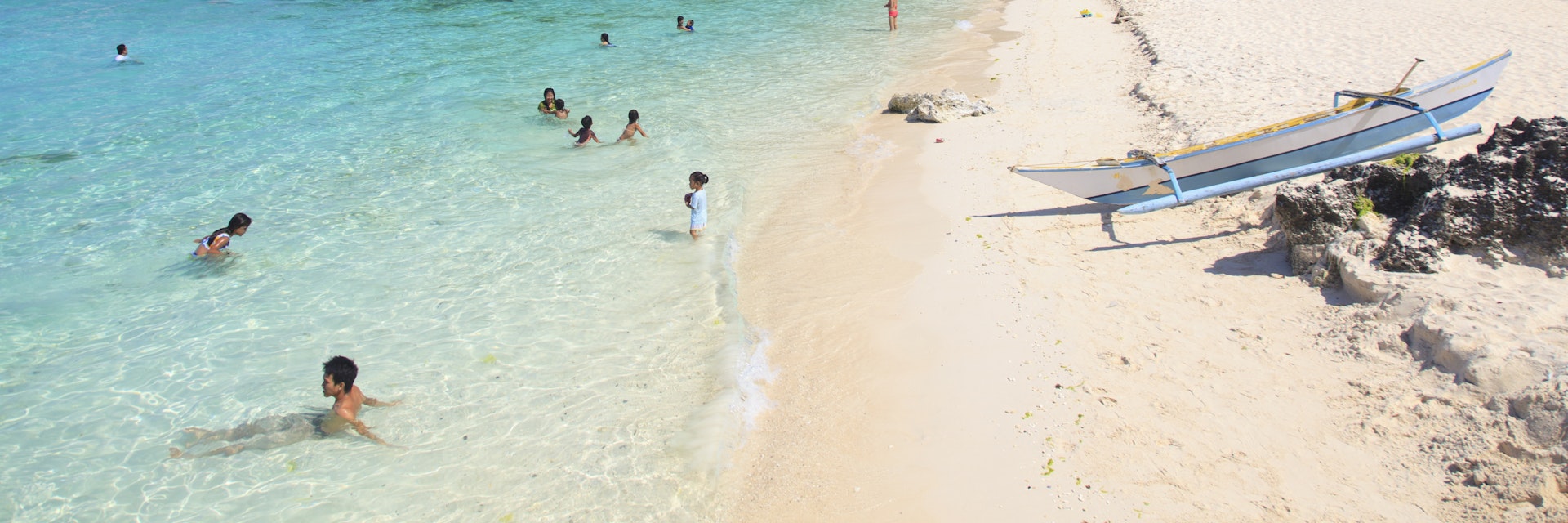
Getty Images
Philippines
The Philippines is defined by its emerald rice fields, teeming megacities, graffiti-splashed jeepneys, smoldering volcanoes, bug-eyed tarsiers, fuzzy water buffalo and smiling, happy-go-lucky people.
Best Time to Visit
Attractions, must-see attractions.
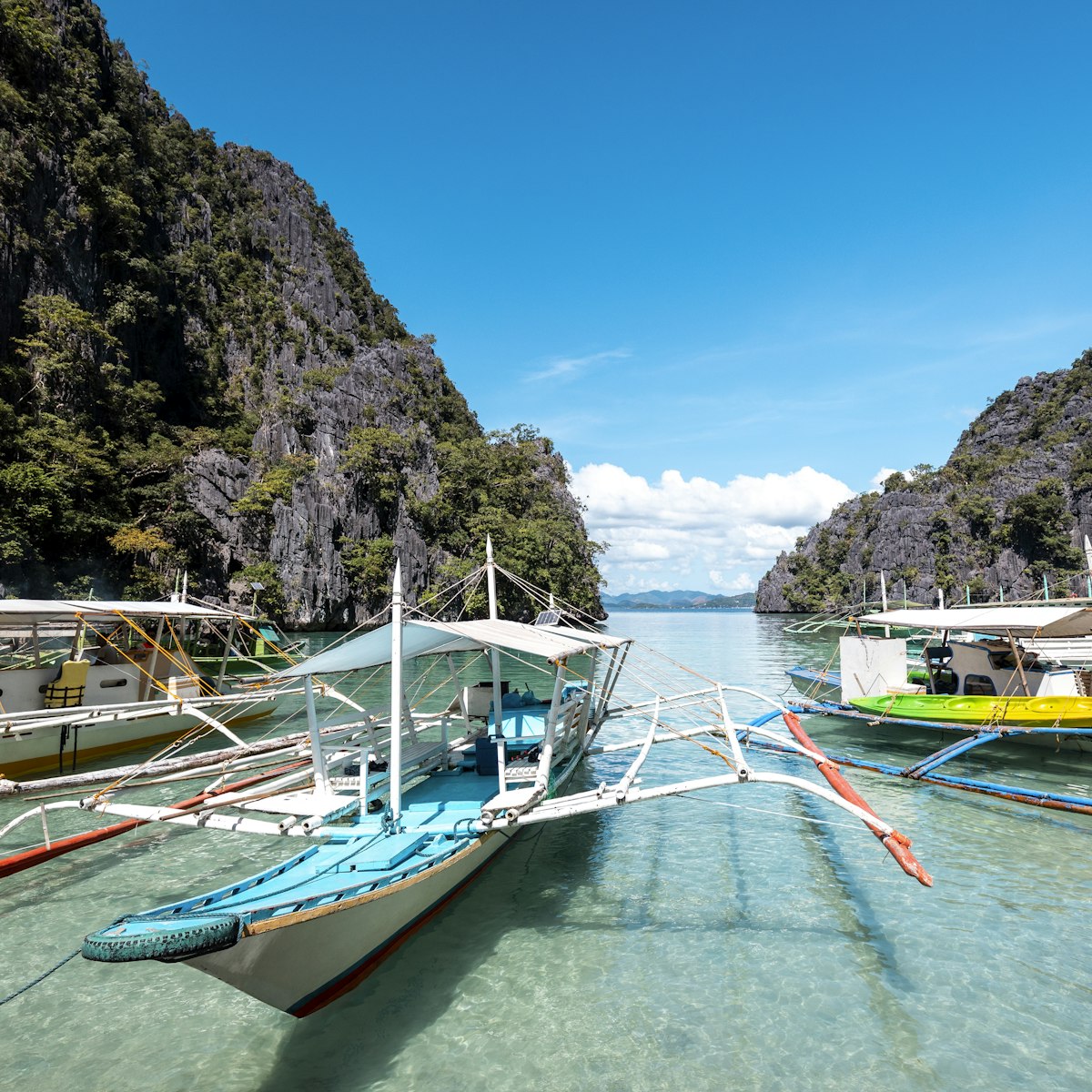
Coron Island
This island, only a 20-minute bangka ride from Coron town, has an imposing, mysterious skyline that wouldn’t be out of place in a King Kong film. Flying…
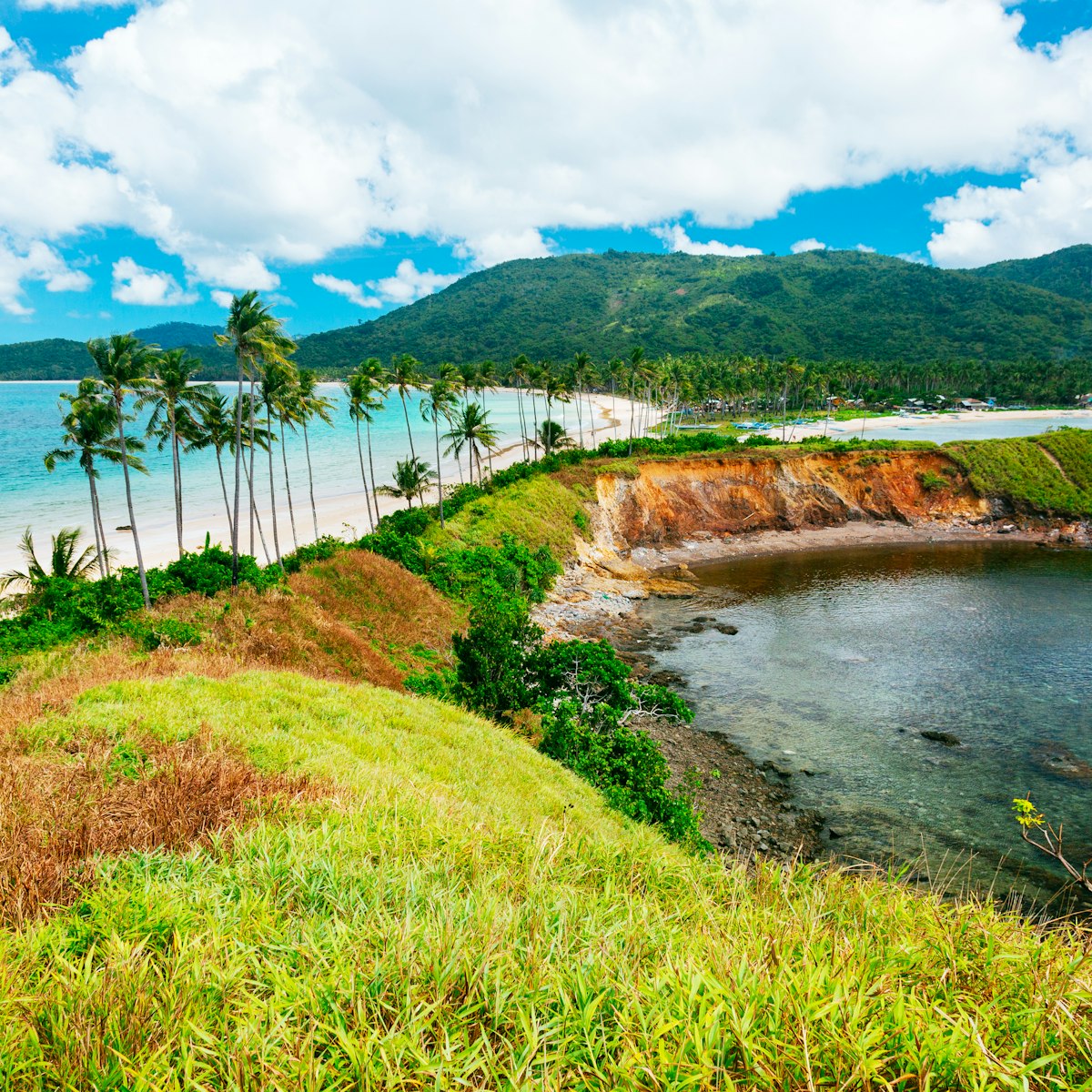
Nacpan Beach
For an easy day trip out of El Nido, head north by tricycle or motorbike to this incredible, golden-hued, 3km-long beach. Development has arrived in…
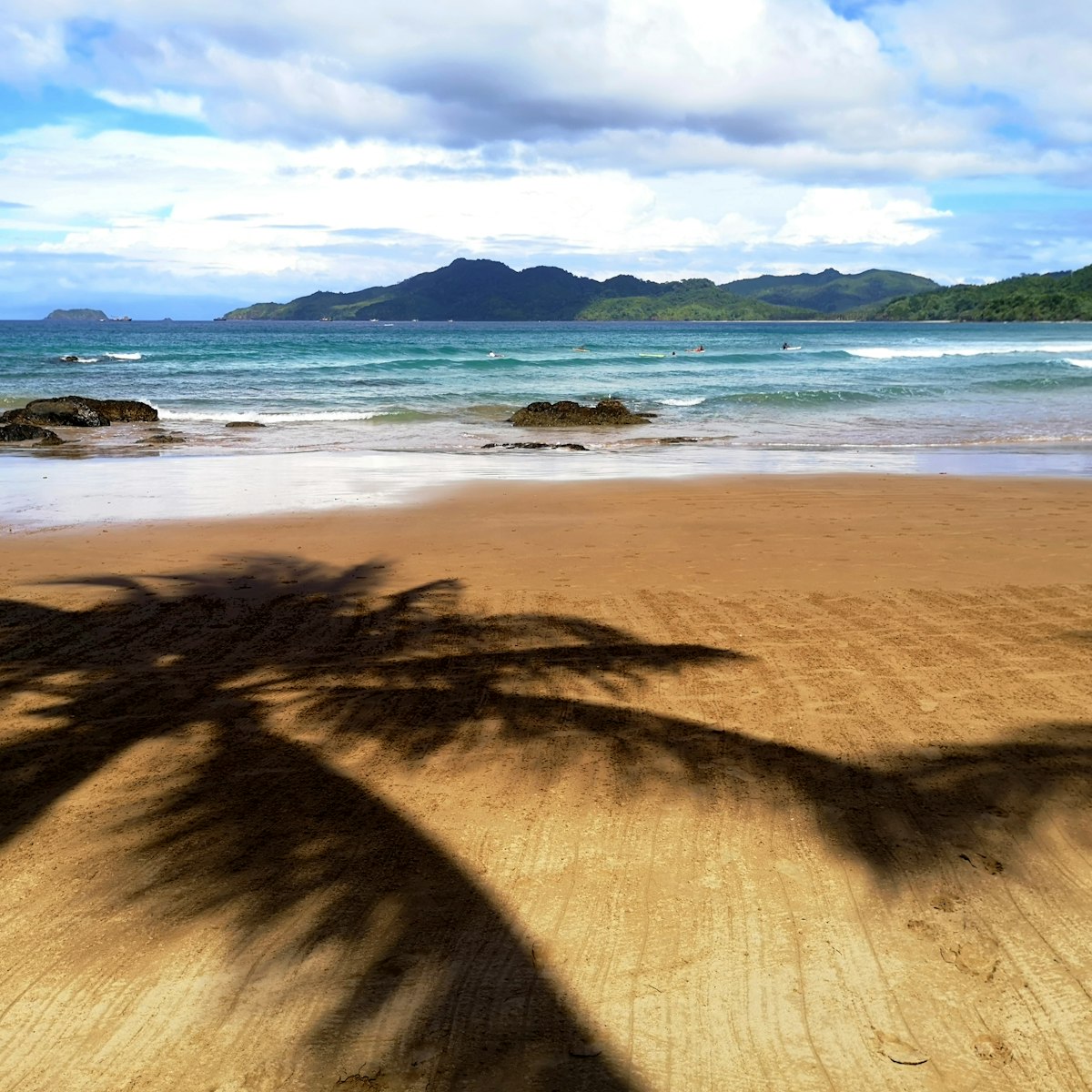
This incredibly beautiful, jungle-backed, stretch of golden sand toward the northern tip of mainland Palawan is the centre of El Nido's surfing community…
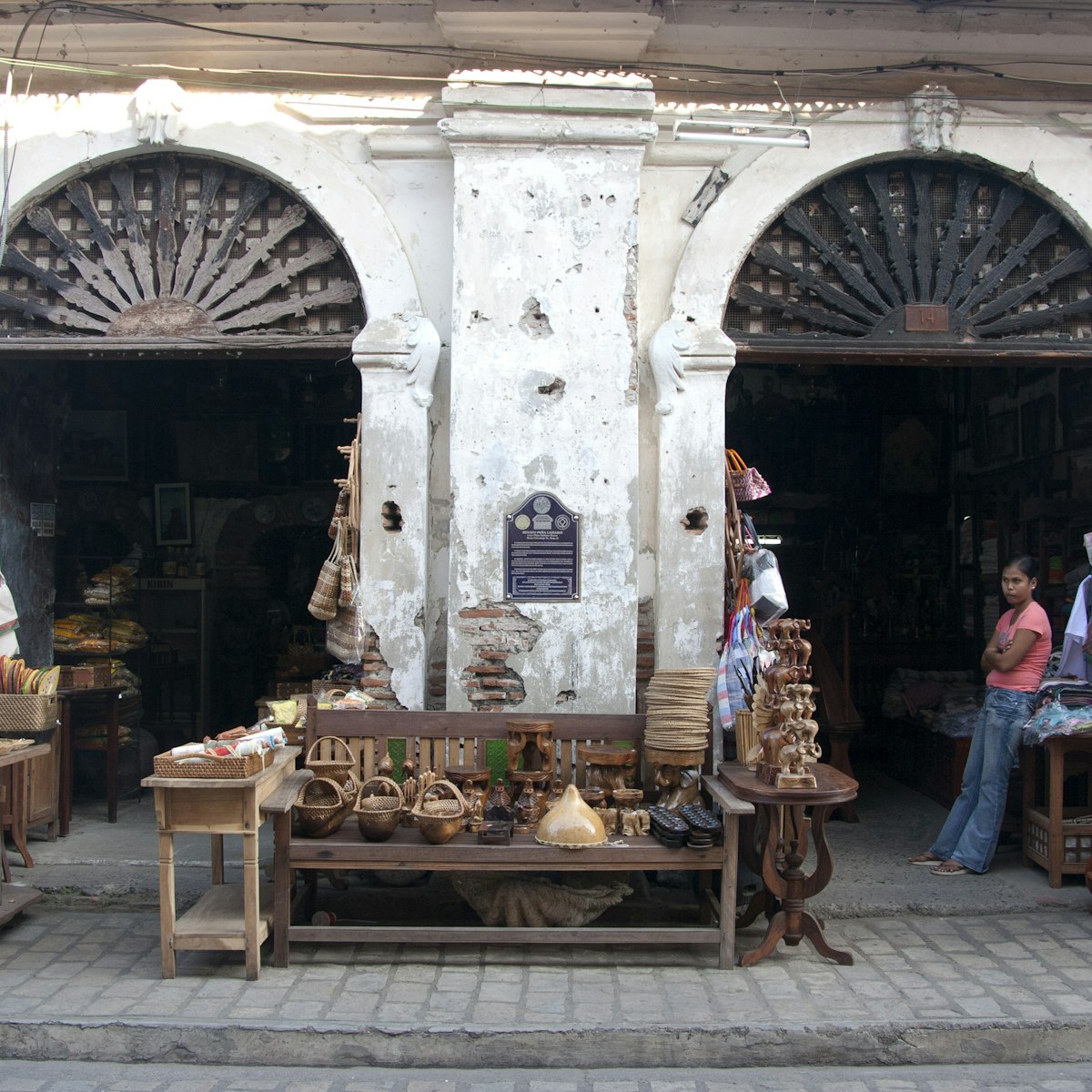
Mestizo District
The Mestizo District, or Kasanglayan ('where the Chinese live'), is a grid of streets hemmed in between Plaza Burgos and Liberation Blvd and bisected by…
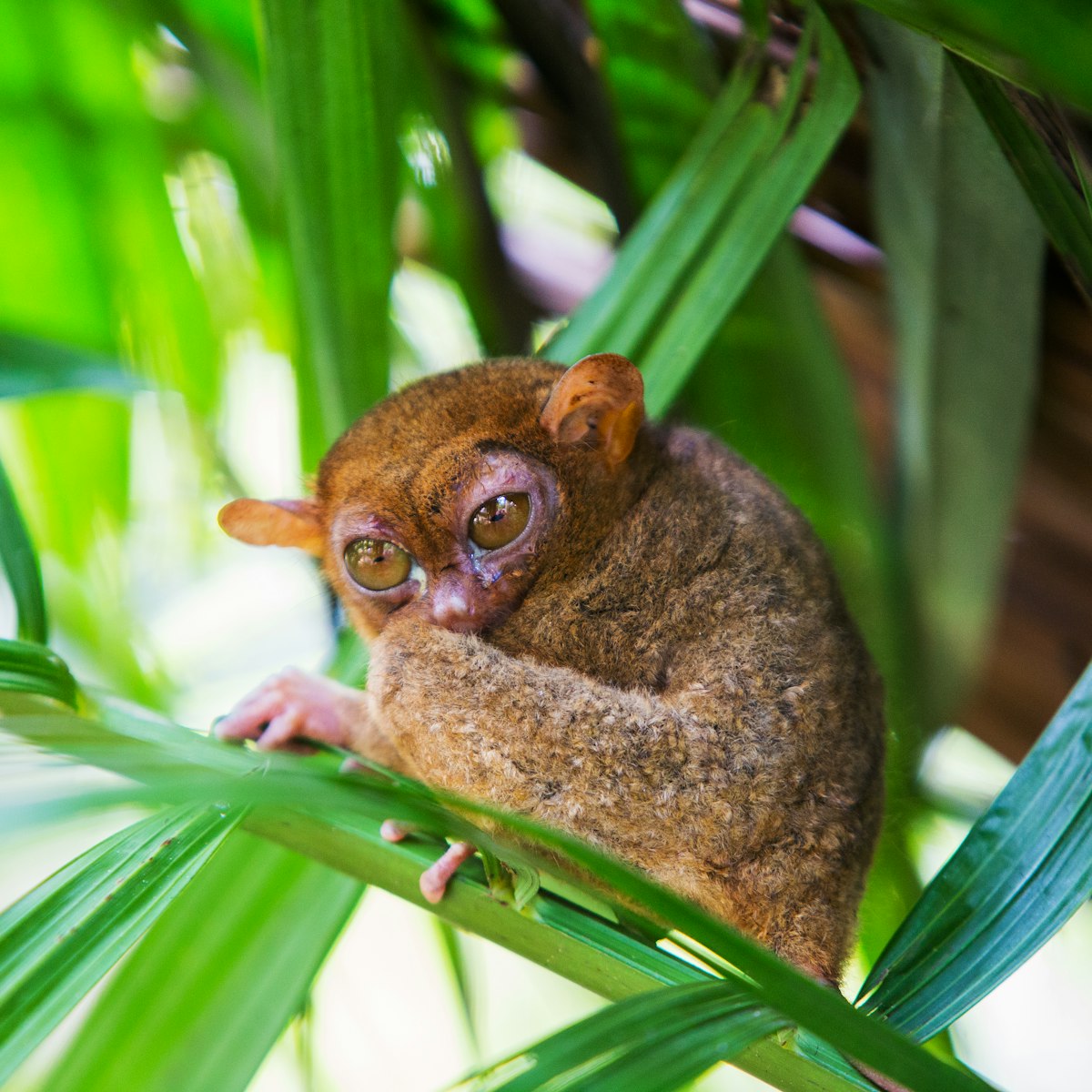
Philippine Tarsier Sanctuary
In Canapnapan, a barangay of Corella, you can see saucer-eyed tarsiers in the wild at the Philippine Tarsier Sanctuary. Over 100 of these territorial…
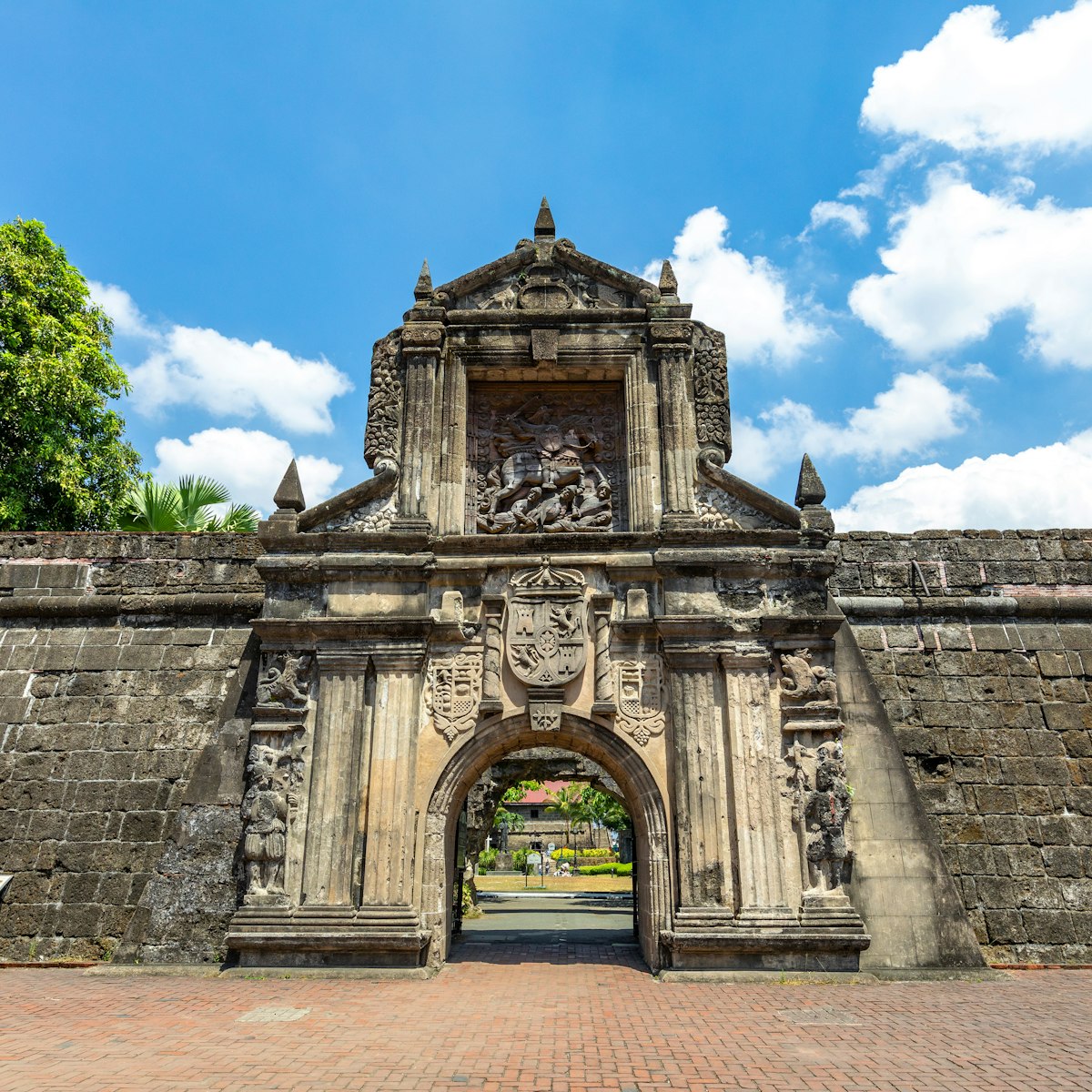
Fort Santiago
Guarding the entrance to the Pasig River is Intramuros' premier tourist attraction: Fort Santiago. Within the fort grounds is an oasis of lovely manicured…
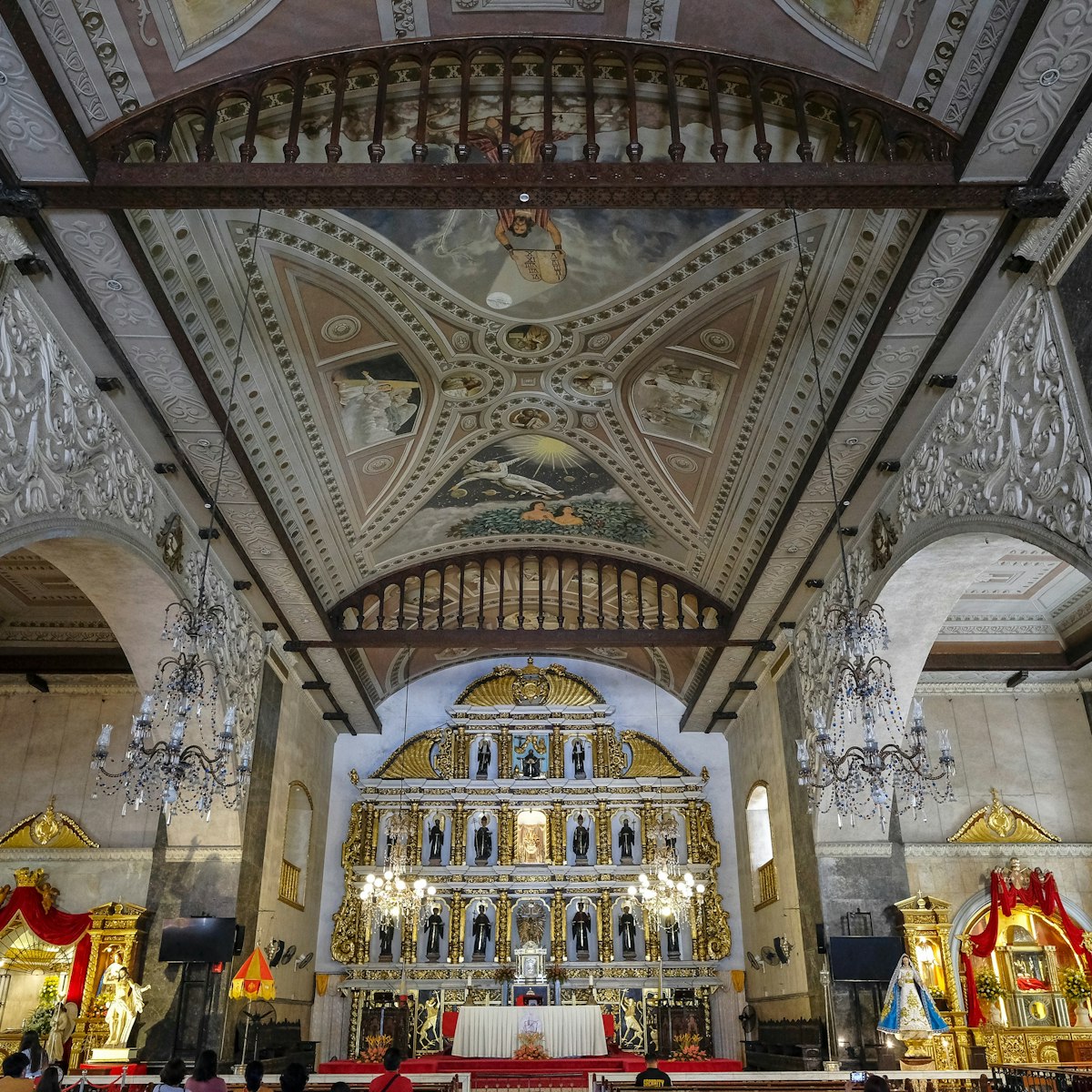
Basilica Minore del Santo Niño
Cebu's holiest church houses a revered Flemish statuette of the Christ child (Santo Niño) that dates to Magellan's time. The church is no stranger to…
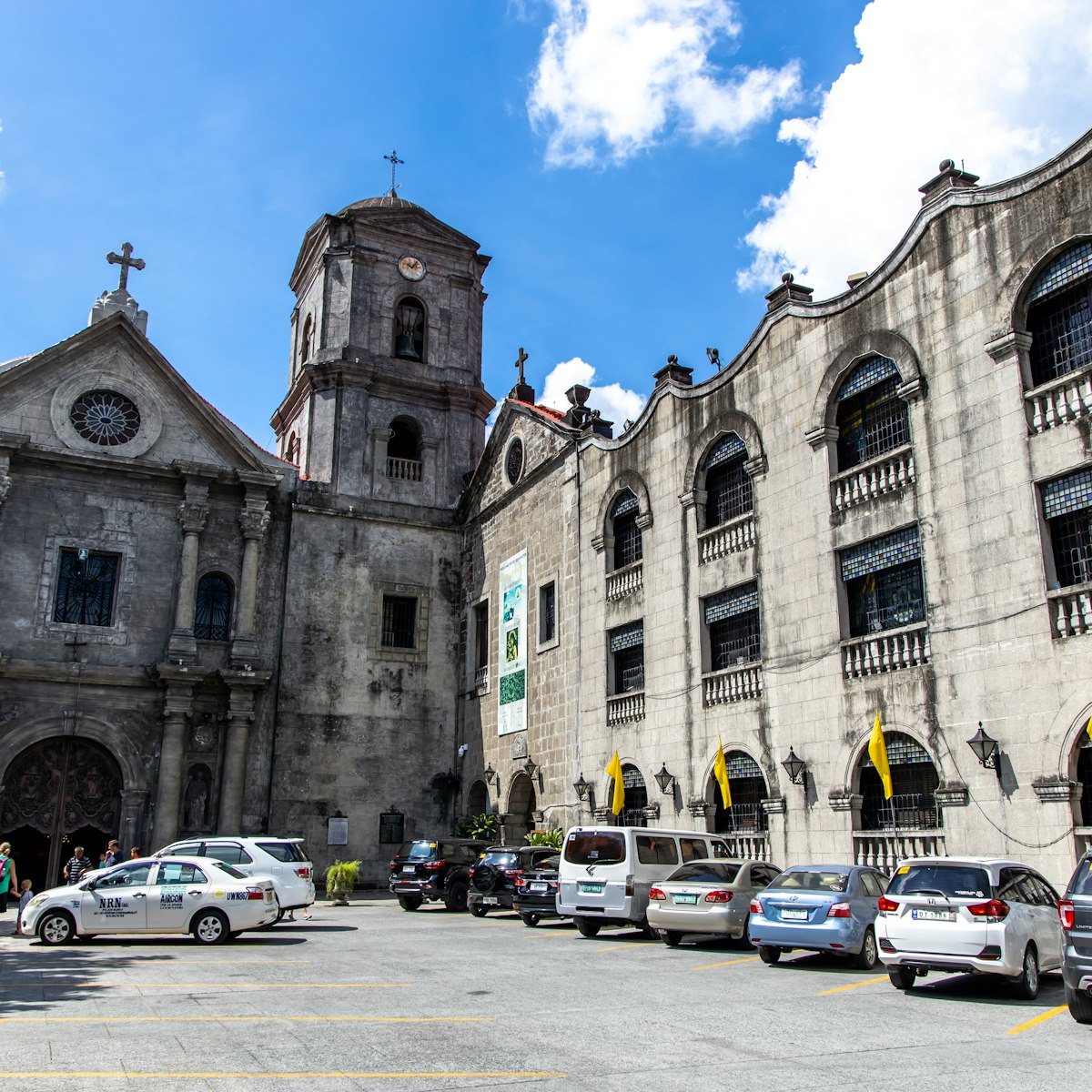
San Agustin Church
The San Agustin Church was the only building left intact after the destruction of Intramuros in WWII. Built between 1587 and 1606, it is the oldest church…
Latest stories from Philippines
Filter by interest:
- All Interests
- Adventure Travel
- Art & Culture
- Beaches, Coasts & Islands
- Food & Drink
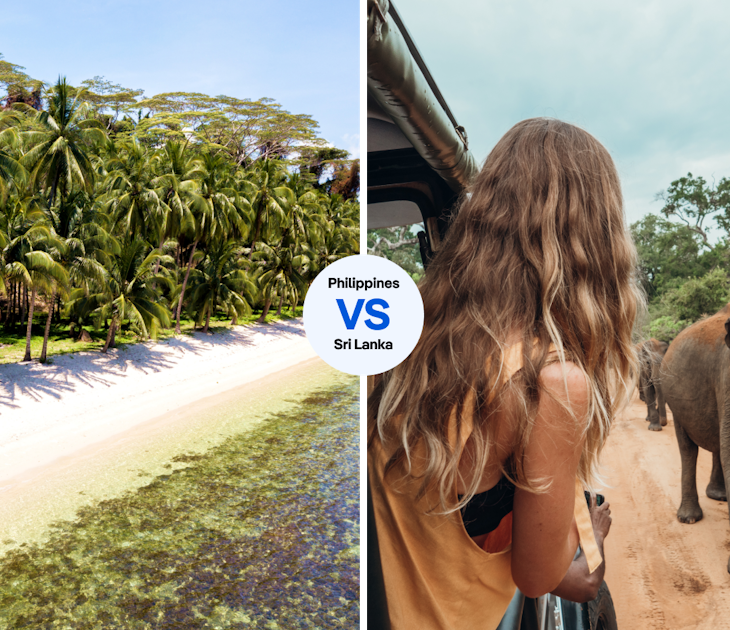
Feb 14, 2024 • 8 min read
We asked a pair of passionate writers to make the case for two of Asia’s most fabulous destinations.
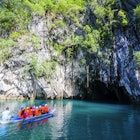
Apr 1, 2022 • 5 min read
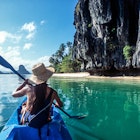
Jan 28, 2022 • 3 min read
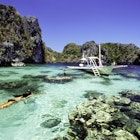
Apr 15, 2021 • 7 min read
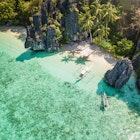
Feb 12, 2021 • 4 min read

Nov 5, 2020 • 2 min read
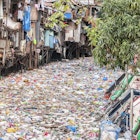
Jan 30, 2020 • 2 min read

Sep 10, 2019 • 7 min read
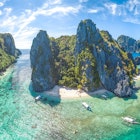
Aug 2, 2019 • 5 min read
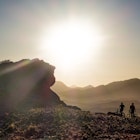
Jul 18, 2019 • 5 min read
in partnership with getyourguide
Book popular activities in Philippines
Philippines and beyond.
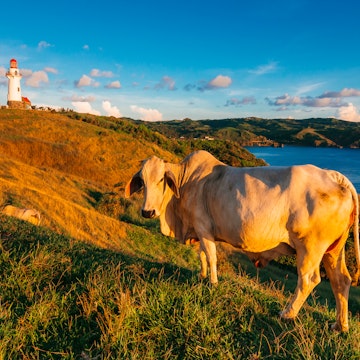
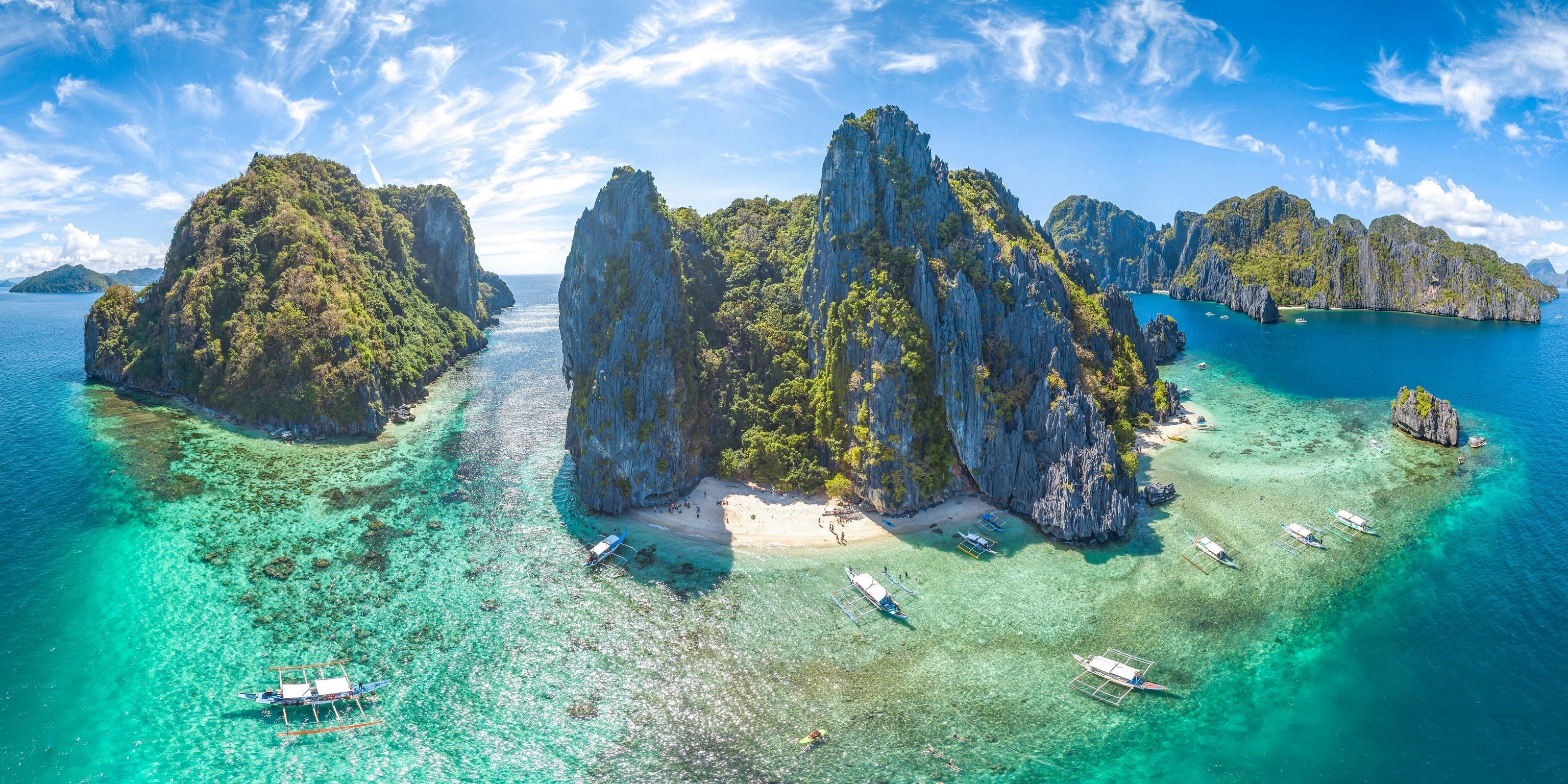
Know before you go: the Philippines
Whether you’re visiting a bustling city or chilling out on a beach, prepare for your trip to the Philippines with this eco-friendly guide.
Located in the Pacific Ocean near the equator, the Republic of the Philippines consists of around 7,640 islands — about 2,000 of which are inhabited — that form an archipelago. The country can be divided into three main areas: Luzon (the largest, northernmost island, which includes Manila); a group of islands called the Visayas (including the major islands Panay, Negros, Cebu, Bohol, Leyte, Samar, and Masbate); and Mindanao, the second-largest island in the Philippines, found at the southern end of the archipelago.
From bustling cities to stunning beaches and mountains, the Philippines has a lot to offer adventurous explorers. Here are a few tips, tricks, and resources for travelers looking to find fun in the Philippines.
CITIES TO VISIT
Manila Manila, known as the “Pearl of the Orient”, is the nation’s capital city. This bustling historic city is full of things to see and do — including museums, parks, theaters, shopping malls and a plethora of restaurants to choose from. The Philippines is quickly becoming a destination for foodies, and Manila is well known for its varied cuisine and street food markets, like the Legazpi Sunday Market, Quiapo Market, and the country’s very own Chinatown, Binondo.

Sustainable travel tip: Many street vendors sell fresh fruit drinks great for cooling down on hot days, so bring your own metal straw and reusable bottle to prevent unnecessary plastic waste.
Davao City Considered the largest city in the Philippines (by size) and capital city of the Davao region, Davao City is a great getaway. Popular destinations include Eden Nature Park (a mountain resort perfect for relaxation), Malagos Garden Resort (a 12-hectare nature theme park that features the first chocolate museum in the Philippines), and Jack’s Ridge (a dining destination with a spectacular view of the city). Mount Apo, the highest mountain in the Philippines and a mountaineer’s dream, is also in Davao City. Its highest point reaches an elevation of 2,954 meters (9,692 feet). Davao is also known as the home to the critically-endangered bird species the Philippine Eagle (also known as the monkey-eating eagle), which was named as the national bird of the Philippines.
Cebu City A perfect balance of island coast and cosmopolitan living, Cebu City is one of the Philippines’ top destinations among both foreign and domestic travelers. It’s also the country’s oldest city and one of the birthplaces of Christianity in the Philippines. Just outside the city’s borders, tourists can enjoy swimming with a variety of species off the coast of the island, or they can try more adventurous activities like canyoneering at Kawasan Falls.
Vigan Dating back to the Spanish colonial era, Vigan sits on the western coast of the island of Luzon, near Manila. Historic Vigan is a UNESCO World Heritage site and is full of unique architecture reflecting a fusion of Asian and European design, and cobblestone streets.

Sustainable travel tip: Bring along an eco-bag when you visit the small shops of Vigan to reduce the need for a plastic bag.
Since the Philippines has thousands of islands, visitors are never far from a beach. You might want to try one of these under-the-radar locations that are emerging as popular beach destinations that go above and beyond the Philippines’ most well-known beach, Boracay.
Panglao Island (Bohol) The main gateway to the province of Bohol, Panglao Island to the southwest is a 20-kilometer long limestone island known for its popular diving spots. You’ll also find many white-sand beaches like Alona, Tawala, Dumaluan, and Doljo, all accessed via the newly-built Panglao-Bohol International Airport.
Panglao houses some of Bohol’s premium accommodation establishments offering 5-star amenities and services. The island also serves as the jumping point for other water-based adventures, such as dolphin and whale watching at Pamilacan Island, and diving at Balicasag Island.

Sustainable travel tip: Look for sunscreens labeled “reef safe”, which are formulated without ingredients that can be toxic to coral reefs and marine life.
El Nido El Nido, part of Palawan Island, has white-sand beaches, limestone cliffs, coral reefs, and clear, fish-filled waters, so it’s a popular spot for swimming, diving, and kayaking. El Nido serves as a jumping-off point for island-hopping and exploring the secrets of the Bacuit Archipelago.

Camiguin Known as the Island Born of Fire, Camiguin is a pear-shaped island with 7 volcanoes that formed many of its unique attractions. The island is full of natural wonders, including lagoons and lakes; cold, hot and soda springs; pristine waterfalls; and white-sand beaches on par with the finest in the country.
Siargao If surfing is more your style, this lesser-known location, near the island of Mindanao, is renowned for its quality waves, cool island culture, beautiful reefs, blue waters, and stunning resorts.
Sustainable travel tip: Visiting lesser-known spots such as Siargao doesn't just mean fewer lines and better selfies, but a decreased impact on the environment.
WILDLIFE AND NATURAL BEAUTY
Calauit Island Calauit Island, known for the crystal-clear waters off its shores, offers eco-tourists the chance to swim with dugongs . These animals, which are related to manatees, are believed to have inspired legends about mermaids. Locals on Calauit Island lead conservation-minded tours and teach tourists about dugongs and how they can help ensure their continued survival.
Sustainable travel tip: To ensure the sustainability of the ocean ecosystems, please do not touch the corals. Local vendors have a wide selection of souvenirs.

Chocolate Hills On the island of Bohol, the famous Chocolate Hills look like something from another world as they seem to tumble out, one after another, for as far as the eye can see. The beautiful landscape is actually a natural formation that slowly took shape over eons. In the summer, when the 1,200+ peaked and rounded mounds aren’t covered in green vegetation, they’re said to look like — you guessed it — chocolate. The majestic Chocolate Hills has been designated as a National Geological Monument by the Philippines.

Ifugao Rice Terraces The Ifugao Rice Terraces are another example of the beautiful landscapes that can be found throughout the Philippines. The mountains of the Ifugao province have been cultivated for thousands of years with terraced fields where rice is farmed. Not only are the rice terraces beautiful to behold, but they’re also an example of industry working in harmony with nature.

NATIONAL PARKS
The Philippines is home to more than 30 national parks, including these top-rated ones: Calauit Safari Park, Puerto Princesa Subterranean River National Park, Aurora Memorial National Park, Biak-na-Bato National Park, Caramoan Peninsula National Park, Libmanan Caves National Park, Mounts Iglit–Baco National Park Fuyot Springs National Park and Minalungao National Park. The parks offer activities like zip lining, boating, camping, hiking, river cruising, wildlife spotting, snorkeling, and kayaking.

Sustainable travel tip: There are dedicated companies that specialize in eco-tourism , and resources, such as Simply Philippines , to help make sustainable adventure more accessible.
BEFORE YOU GO
Travel requirements Travelers from the U.S. will need a valid passport but do not need to secure a visa to visit the Philippines. The World Health Organization recommends the following vaccinations for traveling to the islands: hepatitis A, hepatitis B, typhoid, cholera, yellow fever, Japanese encephalitis, rabies, meningitis, polio, measles, mumps and rubella (MMR), T-DAP (tetanus, diphtheria and pertussis), chickenpox, shingles, pneumonia, and influenza.
When to go The high season for tourism is December to April. The Philippines is a tropical country, and the hotter, drier months (85 degrees F and up) are March through June. July through October brings the potential for typhoons; the “cooler” season runs from November to February, when it remains at around 78 degrees F. The further south you go, the more humid the weather gets, and rain showers are likely regardless of the season.
Sustainable travel tip: Don’t purchase travel-sized toiletries in plastic bottles. Instead, use refillable containers or look for packaging-free alternatives, like shampoo bars. You can also find multi-use products, like Castile soaps, that can be used for washing your hair, body, and even clothing.
What to pack Bring lightweight, comfortable clothing (it can be casual) and make sure to pack a swimsuit if you plan on heading to the beach or doing any boating or diving. You’ll want to have a pair of sunglasses as well as rain gear, and make sure to bring comfortable shoes like sneakers or sandals. A waterproof bag can be helpful for keeping electronics, like phones and cameras, dry. Sunscreen and a mosquito repellent that contains DEET are must-bring items.
Sustainable travel tip: It always helps to bring your own reusable bag or bag-for-life along with your backpack to prevent additional plastic waste.
Getting around Most people traveling to the Philippines from the U.S. will probably fly into Manila’s NAIA airport or the more recently opened Mactan-Cebu International Airport, which was named the Asia-Pacific Medium Airport of the Year in the CAPA 2018 Asia Aviation Awards for Excellence .
If you want to go to multiple islands, you can find flights that connect to smaller airports throughout the Philippines. Traveling by boat is also an option when getting to many of the islands in the region. If you’re in one of the major cities, “jeepneys” — small and colorful buses — are a popular way to get around.
Currency The Philippine Peso is the official currency of the Philippines. Each peso consists of 100 centavos. Bills and coins are used in the Philippines. It’s easy to exchange money at a shopping mall, and traveler’s checks are usually accepted for money exchange. ATMs are readily available in the major cities, but if you’re traveling to smaller islands or more remote areas, it’s a good idea to stock up on cash before your arrival. Credit cards are accepted in the bigger cities and more populated beach areas. Keep your small change for paying jeepney drivers.
Sustainable travel tip: Consider donating your leftover currency at the end of your trip to a local charity dedicated to cleaning beaches or preserving wildlife.
Language and culture Filipino and English are the official languages of the Philippines — but the Philippines is an ethnically diverse country (and was a Spanish colony for 300 years), so more than 150 languages are spoken in the region. Tagalog is a common dialect.
The dominant religion in the Philippines is Catholicism, and churches abound throughout the country. The older generations in the Philippines tend to be quite religious.

DOS AND DON’TS
You might want to purchase travel insurance before heading out on your Filipino adventure. Check with the U.S. Department of State for the latest information on any current travel advisories. As with travel to any foreign region, make sure to remain mindful of personal safety at all times.
It’s considered polite to use respectful terms like “Sir” or “Ma’am.” Familial words like Tito/Tita (Uncle/Aunt) for elders, Lolo/Lola (grandfather/grandmother), and Kuya/Ate (older brother/sister) can be used; the words “Po” and “Opo” are terms of respect. Don’t refer to older people by their first names.
Always be friendly and wave back at anyone who waves to you. Tipping is not mandatory but is appreciated. Don’t lose your temper or be confrontational; do not refuse food or hospitality when it’s offered to you. Don’t walk alone, particularly at night, and keep your belongings close to you at all times. Never insult the Philippines or Filipino people.
Related Topics
Introducing nat geo kids book bundle, you may also like.

Sustaining happiness: eco-friendly fun in the Philippines

Three new Asian destinations for trendsetting travelers
- Terms of Use
- Privacy Policy
- Your US State Privacy Rights
- Children's Online Privacy Policy
- Interest-Based Ads
- About Nielsen Measurement
- Do Not Sell or Share My Personal Information
- Nat Geo Home
- Attend a Live Event
- Book a Trip
- Inspire Your Kids
- Shop Nat Geo
- Visit the D.C. Museum
- Learn About Our Impact
- Support Our Mission
- Advertise With Us
- Customer Service
- Renew Subscription
- Manage Your Subscription
- Work at Nat Geo
- Sign Up for Our Newsletters
- Contribute to Protect the Planet
Copyright © 1996-2015 National Geographic Society Copyright © 2015-2024 National Geographic Partners, LLC. All rights reserved

- March 16, 2023
Tourism in the Philippines: Exploring Opportunities and Overcoming Challenges

Introduction
Travel and tourism in the Philippines is a vibrant and growing sector. The country has many attractions, including beautiful beaches, impressive mountains, and a rich cultural heritage. Every year, millions of tourists flock to the islands of the Philippines to explore its breathtaking beauty and indulge in its offerings. In 2019, foreign arrivals peaked at 8.3 million , indicating the country’s popularity as a tourist destination.
However, the tourism industry in the country suffered significant losses in previous years because of the pandemic. Nevertheless, the country is optimistic and expecting a revival and revitalization of its tourism economy. Continue reading to explore the nation’s thriving sector, its obstacles, and the potential it provides.
Why do tourists love to visit the Philippines?
The Philippines, an archipelagic nation spanning over 7,000 islands, offers an unparalleled and distinctive experience for travellers. With a vibrant culture, delectable cuisine, welcoming locals, and breathtaking natural scenery, the country boasts a diverse range of offerings to cater to all interests. Here are just a few you won’t want to miss out on!
Stunning Beaches
The Philippines is home to some of the most beautiful beaches in the world. From laid-back, crystal-clear waters to vibrant nightlife scenes and everything in between, you’re sure to find something that will suit your tastes. Notable attractions are the stunningly beautiful islands of Siargao, Boracay, and Palawan, all of which were ranked first, second, and third, respectively, on Condé Nast Traveller’s list of Asia’s best islands in 2018 .

Adventure & Nature
The Philippines is a nature-lovers paradise, possessing a variety of breathtaking landscapes and diverse ecosystems. The country’s rainforests are home to some of the world’s most exotic plants and animals, while its mountains offer exciting trekking opportunities. Adventure seekers can also enjoy white-water rafting in the Cordilleras or explore some of the country’s many volcanoes including the perfectly cone-shaped Mayon Volcano in the region of Bicol, which is a UNESCO Biosphere Reserve.

Cultural Experiences
The Philippines is a melting pot of cultures, and its vibrant heritage can be experienced through its cuisine, music, art, and festivals. The country also features some of the most beautiful colonial architecture in the world, notably Vigan, a UNESCO World Heritage City and one of Asia’s best-preserved planned Spanish colonial towns. Additionally, the local people are warm and welcoming, and travellers often find themselves connecting with the locals for a truly authentic experience.

Tourism and the Philippine Economy
The travel and tourism industry is one of the major contributors to the Philippine economy. In 2019, the industry contributed a record 12.7% of the country’s GDP, amounting to PhP 2.48 trillion, a 10.8% increase over 2018. It is one of the largest service industries in the country in terms of gross revenue and foreign exchange earnings. It also employs millions of Filipinos, with an estimated 5.7 million people employed in the sector as of 2019. This makes it an incredibly important source of income for many local communities across the nation.
However, the COVID-19 pandemic has negatively impacted the industry in the past few years. Thousands of livelihoods were severely affected and many jobs were lost. In fact, in 2021, the sector was only able to contribute 5.2% to the country’s GDP. Tourism employment in 2021 also took a nosedive at an estimated 4.90 million, which, while higher than the 4.68 million recorded in 2020, is still significantly lower than pre-COVID numbers.
Challenges of the Philippine Tourism Sector
Covid-19 anxieties.
As mentioned, the recent pandemic has brought unprecedented challenges to the Philippine tourism sector. The industry has been one of the hardest-hit sectors, with a significant decline in international and domestic arrivals. As a result, businesses have suffered due to restrictions on travel, social distancing requirements, and a decrease in tourist spending.
In Standard Insights’ most recent Consumer Report Philippines 2023 , which surveyed over 1,000 Filipino respondents in November 2022, more than half of the population stated health & safety-related issues (53.6%) were their biggest worry about travelling in 2023.

Interestingly, most Filipinos, specifically 76.6%, feel safe and secure travelling abroad despite the ongoing COVID-19 situation. Merely a minority of 6.2% expressed feeling insecure about international travel this year.

Airline Woes & Airfare Costs
Another major challenge facing the Philippine tourism sector is the limited number of air links between domestic and international destinations. For many years, the country has relied heavily on its domestic airlines to provide service to both local and foreign passengers. However, with a limited number of flights available, it can be difficult for tourists to visit multiple destinations within the same trip. The lack of direct routes from other countries also proves to be an obstacle for those hoping to travel to the Philippines for a holiday or business trip.
Adding to this challenge is the high cost of airfare that affects the Philippine tourism sector. The cost of oil prices has been rising steadily over the past few years, and the cost of airfare is one of the most affected areas due to this trend. Moreover, airfares in the Philippines tend to be higher than in other Asian countries due to taxes imposed by both local and international airlines as well as fuel costs that are often not included in ticket prices. This makes it difficult for budget travellers and those who are looking to save money on their trips.
Infrastructure
Another challenge facing the Philippine tourism sector is inadequate infrastructure and services such as hotels, transportation networks, and attractions available at tourist destinations across the country. Inadequate infrastructure often leads to overcrowding at major tourist spots during peak season and prevents visitors from enjoying all that each destination has to offer. Additionally, poor public transportation options make it difficult for travellers to explore beyond just their immediate area without having access to private transport such as cars or taxis.
Government Tourism Revival Efforts
The Philippine government has undertaken various measures to revive the tourism sector. In 2021, it launched the Tourism Response and Recovery Plan (TRRP) to help mitigate the impacts of COVID-19 on the industry and protect jobs, visitors, and communities by providing financial assistance for businesses and individuals in need. This allows support for the recovery of tourism enterprises and helps to rebuild confidence and growing demand in domestic and foreign markets. The plan also included an incentive program for domestic tourists, which was implemented in late 2021 and aimed to help revive local tourism by offering discounts on accommodations, food, and activities.
Moreover, starting in 2024, foreigners will be allowed to get tax refunds for purchases made in the Philippines as part of the government’s aim to attract more visitors. Value-added tax (VAT) , which is presently charged at a rate of 12% on goods consumed domestically, will eventually be refunded to international visitors on items they take out of the country.
Finally, the Philippines can be hopeful about the future of its tourism industry. In the previous year, the country welcomed 2.6 million visitors , surpassing its 2022 goal of 1.7 million arrivals. This achievement has encouraged the Department of Tourism (DOT) to set a new target of attracting 5 million foreign visitors in 2023, double the number from last year.
In recent years, the Philippine tourism industry has encountered a multitude of obstacles, particularly with health and safety concerns. In the aftermath of the pandemic, these issues continue to linger, with over half of the population expressing apprehension about travelling in 2023 due to the ongoing impact of COVID-19. Despite the challenges, the industry remains resilient and adaptable, implementing measures to ensure the safety and well-being of tourists and locals alike.
The government has also responded by launching various initiatives such as the Tourism Response and Recovery Plan to help revive the industry and promote domestic and international travel. By continuing to focus on strengthening infrastructure, encouraging domestic tourism, and offering attractive packages for foreign visitors, the Philippines is taking steps toward restoring its tourism sector to its former glory.
Unlock reliable market research in the Philippines with real and authentic consumer insights. Know the needs and preferences of the Filipino population to help you make well-informed decisions in this dynamic market landscape.

Sign Up For More Like This.
Sign up now to receive a curated selection of our latest consumer insights, survey results, articles, reports and exclusive benefits.
- Consumer Insights
- | Industry Reports
- | News & Research

The Future of Work in Malaysia
The work landscape in Malaysia is evolving, driven by technological advancements, shifting workplace cultures, changing demographics, and economic strategies. These shifts are further amplified by the impact of AI, the

Social Media in Japan: Thriving Trends and Digital Dominance
Explore the dynamic world of social media in Japan, and uncover unique trends, preferences, and habits of Japanese social media users.

Unveiling the Impact of Surging Inflation in the United Kingdom
Uncover the impact of rising inflation in the UK. Explore insights revealing perceptions and buying behavior amid the economic challenges.
Make informed, data-driven decisions quickly with reliable consumer insights.
We’re dusting off the Market Research industry.
- Quantitative Research
- Qualitative Research
- Brand Tracking
- Methodology
- Agency Benefits
- Respondents
- Case Studies
- Consumer Reports
- Consumer Choice
- Privacy Policy
- Terms and Conditions
Discover what consumers really think
Get notified of the insights in your country of interest

- Testimonials
- Meet the Team
- Work With Us
- Outlook Features
- Sign Up Today
- Travel Guides
- Middle East
Philippines Travel Guide

A proverbial paradise of tropical islands and shifting white sands, the Philippines is a destination perfectly suited for beach bums, adventure seekers and heliophiles .
PHILIPPINES
The Philippines has long been synonymous with the idea of paradise, conjuring postcard-perfect visions of white sands and crystal waters. Varying with the shifting tide, this island country is composed of some 7,100 islets sprawled across the surface of the Western Pacific – most inhabitants occupy just 11 of them.
The country can be divided into three areas: the most populous and northernmost island of Luzon, including the capital of Manila, the central Visayas islands, and Mindanao to the south. Unsurprising for an archipelagic nation, the Philippines boasts endless beaches with scenery to rival Jurassic Park – from the popular shores of Luzon to quiet surfer enclaves like the teardrop island of Siargao.
Located on the Pacific Ring of Fire, the islands’ volcanic foundations foster an astonishing diversity in terms of both landscapes and wildlife, from the verdant Chocolate Hills of Bohol to the teeming manmade metropolis of Manila. Although low-lying, the Philippines are far from flat, distinguished by the towering peak of Sacred Mount Apo and the jagged spine of the Sierra Madre in the North of Luzon. These densely forested mountain slopes are home to some of the Philippines’ many indigenous ethnic groups.
With biodiversity in abundance, the islands’ flora and fauna is a major draw for tourism, from mangrove tunnels to the centuries old cultivated Ifugao rice terraces. The Philippines boasts over 30 National Parks, including the highly regarded Puerto Princesa Subterranean River in sparsely populated Palawan. Varied wildlife encompasses the endemic Philippine Eagle, crab-eating macaques, and the bizarre wide-eyed Tarsier to name but a few. Out to sea, unparalleled scuba diving opportunities offer sightings from vast whale sharks to the pygmy seahorse.
Despite its natural splendour, to overlook the tangible culture and history of the Philippines would be a mistake. The heritage of these island people creates a culturally rich destination that encompasses histories both colonial and indigenous. Philippine paleographs and various archaeological sites, such as the mysterious ‘Fire Mummies’ found in the caves towards the north recall the island’s earliest history, while Baroque churches dotted about the archipelago are reminders of the Philippines’ dominating Catholic faith. Indeed, the colonising Hispanic influence lingers to this day throughout the islands – the nation itself taking its name from King Philip II, the Spanish Monarch who initiated three centuries of colonial rule.
Despite the Philippines’ 144 distinct ethno-linguistic groups, English is the most widely spoken language. With famous Filipino hospitality, the fusion of European and Asian influences creates a unique melting pot culture, but gastronomically speaking, local delicacies such as the ubiquitous sisig – a kind of grilled pork – are a direct route to the culinary heart of the island.
Future travellers, prepare to sit back and set your watch to island time.
Facts & figures
Population: 96,500,000
Capital: Manila
Language: Filipino, English
Currency: Philippine Peso
Time Zone: GMT +8, ET +13
TOURISM INSIGHTS: THE HOTEL AND RESTAURANT ASSOCIATION OF THE PHILIPPINES (HRAP)
Formed in 1951, the Hotel and Restaurant Association of the Philippines (HRAP) is the single voice consolidating the Philippines’ private hospitality sector. It was formed when hotel managers and restauranteurs found themselves beset by common issues, such as service charges, breakages and losses, and theft amongst employees. Heads came together to form a united stand, prompting the association’s birth on September 12th 1951. HRAP was subsequently registered with the Securities and Exchange Commission and officially assumed its legal personality. In August 2001, HRAP was reincorporated for another 50 years.
As a non-profit organisation, the Association is operated by members of hotel owners, restaurant managers, and CEOs from various private enterprises. Their goal is to contribute to the development, growth and promotion of the Philippines as an attractive tourist destination. As the President and Chairman of HRAP, Mr. Eugene Yap discusses the federation today and explains why more people should consider adding his home country to their bucket list.
From a handful of owners and managers in the 1950’s, HRAP has grown into a full-fledged national organisation representing the interests and concerns of the hotel and restaurant industry across the whole country.
Q&A WITH EUGENE YAP, PRESIDENT AND CHAIRMAN, HRAP
Can you talk us through the origins of HRAP and its initial vision?
Mr. Eugene Yap (EY): The tourism industry in the Philippines just after WWII was quite challenging, as everyone was busy recovering from the war. Amidst these rebuilding efforts in Manila, the heart of the Philippines, there were just four hotels that were operating at the time. The managers and owners sought to unite among themselves just the four, and along with some restaurants they banded together and formed the Hotel and Restaurant Association of the Philippines in 1951. So, we have been operating as early as the 1950’s. At that time, our tourists were mostly newspaper men and photojournalists, documenting the recovery and development of the islands. Manila was very much the centre, since there was not much development going on elsewhere.
HRAP was registered on September 12th 1951 and has survived even up to today. From a handful of owners and managers, HRAP has grown to a nationwide organisation representing many interests and concerns both at local and national level. We now deal with legislators, both national and international, and we join other associations around the world. We expect to expand into Europe probably in a couple of years.
What are your organisation’s current goals?
EY: We here in the HRAP hope to continue to take leading roles representing the Philippines’ private business tourism sector in the hotel and restaurant industry. Our membership comprises several sectors; we have the hotel, the restaurant, and suppliers are now part of it. We also have the education sector where we partner with colleges and universities because we believe that the education sector will produce the tourism leaders of the future. Unity and cooperation among industries is the key goal of the association. We encourage and foster high technical standards in business.
How do you market the Philippines as a destination?
EY: The Philippines is extremely out of the way for international travellers. We are situated in the far, far east – it’s not as simple as crossing a border or hopping on an airplane for half an hour. It takes much longer than that! So, we only promote our very best. This includes the unique topographical features in the Philippines, and the personalised travel packages that we can offer to highlight outdoor activities.
We are marketing ourselves as both a natural and urban destination. In terms of nature, we have the beaches, the resorts, hiking trails and wildlife reserves which are slowly opening up. For indoors, we have plenty of sports activities in the urban areas and restaurants, modern and classical. Accommodation still abounds in the urban areas, but when you talk about the Philippines, you are really talking about nature and the outdoors. This is where we centre our marketing efforts.
In the Philippines, it is the local government agency at the Department of Tourism that really guides the tourism industry. Right now, the tourism department is looking into a travel bubble strategy, even within the Philippines. So hopefully when the pandemic restrictions are lifted, we can develop bubble destinations among the cities here.
How do you promote off-season travel (i.e. during rainy season)?
EY: In the Philippines, it is like summer all-year round – there are only two to three months when we experience the rainy season. This is a huge advantage for us as a more consistent travel destination. So, what we do is modify our travel packages if the outdoors are not available. Since the Philippines is a very big archipelago, we market from the north to south, east to west, and modify travel plans to go to different parts of the country. The other way we promote it would be by hosting special events. Both the Department of Tourism and even the private sector sponsor events to invite international travellers. Right now, these organisations will be inviting local travellers also. Right now, we continue to maintain online bookings all year round because online is key as the window to the future.
Can you tell us how COVID-19 has affected the organisation, and the associated hotels and restaurants?
EY: In the Philippines, pre-covid in 2019, we had as many as eight million arrivals. For the Philippines, this is a good number, and we were hoping to increase it to nine million for 2020 but of course the pandemic hit. As a result, there have been challenges for everyone. Throughout 2020, a lot of agencies and restaurants reported that their revenue for the year had been halved or worse. What many of our members did, to save cost or to be practical and realistic, was suspend operations. For permanent closures, we are still unsure on the figures but at present it is few. Mostly, people are just waiting for the lifting of restrictions and so have undertaken temporary hibernation to reduce overhead.
Right now, hotels are mainly getting their business from returning overseas Filippino workers. As you know there is a big market for that, since the Philippines is one of the biggest exporters of human labour. Right now, people are returning home and before returning to their own homes they have to quarantine in the hotels – so the hotels and restaurants have been benefitting from this market since last year. Of course, the revenues are lower, but it’s still a welcome market for us. In the education sector, they have adopted online learning to find ways to synchronise their internships during this time.
Why, in your opinion, should someone visit the Philippines?
EY: It’s not only because I am from the Philippines, but I love the Philippines – it’s a beautiful country. Filipinos are known for our hospitality, we are friendly and warm, and the summer weather is practically all year. So even if you encounter a typhoon, you can just transfer to another area.
The natural wonders and the uniqueness of the Philippines is really second to none. We have Philippine festivals; we call them fiestas. It is tradition for every city to have a couple of citywide festivals every year, so you can see the numbers of provinces and municipalities that we have. Just thinking about that, you can imagine just how many festivities and celebrations we have just in the Philippines alone.
What are some of the country’s most unique landmarks?
EY: As a tropical area, we have many beaches that are entirely different from the beaches that you may find in Europe or North America. The beaches in the tropics make for an incredibly welcoming tourist destination, and our beaches and resorts are what we are most proud of.
We have underground rivers and then we have several new wildlife reserves. They are not as big compared to other countries but located in the northern and southern part of the islands where the land mass is more concentrated, so slowly wildlife is being introduced to tourism.
What trends are transforming the tourism industry in Philippines and how are you utilising them?
EY: We continue to look over developments in the Philippines and we encourage our members also to look beyond themselves to see how we can help out. We really have been learning a lot, and I think education is foremost – both in our destination and for the tourism workers that will eventually become leaders.
The urban areas here are fast catching up with the rest of the world – we have a lot of structures now that are catering to the international business traveller. It’s not only nature that people are looking for, since there are times when you may need to do business in an urban environment. If they come here, the Philippines is so far away that you may as well travel as a tourist during your free time. I think the urban landscape will continue to sprout up fast.
The most important is a shift from the international market to the local market. As mentioned, we have more than 100 million Filipinos in the local population here, so if just a small portion of this can travel it will make a huge impact for the improvements of the tourism industry. This will play a big part for hotel and restaurant marketing strategies.
Furthermore, we are now focussing on travellers’ demographics. Individuals used to mainly join group tours, so now we are also encouraging travellers such as couples and families to tour independently and not wait for other people. We continue to focus and promote online bookings, but personalisation above all is the most important. Travel agencies are as important as any sector, since they are in a position to personalise the traveller’s requirements. Tourists aren’t always well-versed, or they’re not seasoned travellers, so the travel agencies are essential as the first vehicle to the travel destination.
Are you optimistic about the future of the tourism industry in Philippines?
EY: In the Philippines we are so excited about reopening. As soon as we can lift our restrictions, everyone will go back to work and we are really gearing up for it. I manage one of the hotels here at HRAP, and we are refurbishing, refitting, and renovating a lot of things, so we are preparing. So, if you ask me are we optimistic – yes, we are!
We want to go back to pre-covid days. We’re looking forward to the future to lift the restrictions so that we can continue where we left off with tourism. I am proud to say that we are excited and we are ready. We must hope that the health situation will continue to improve around the world, so that we are raring to go.
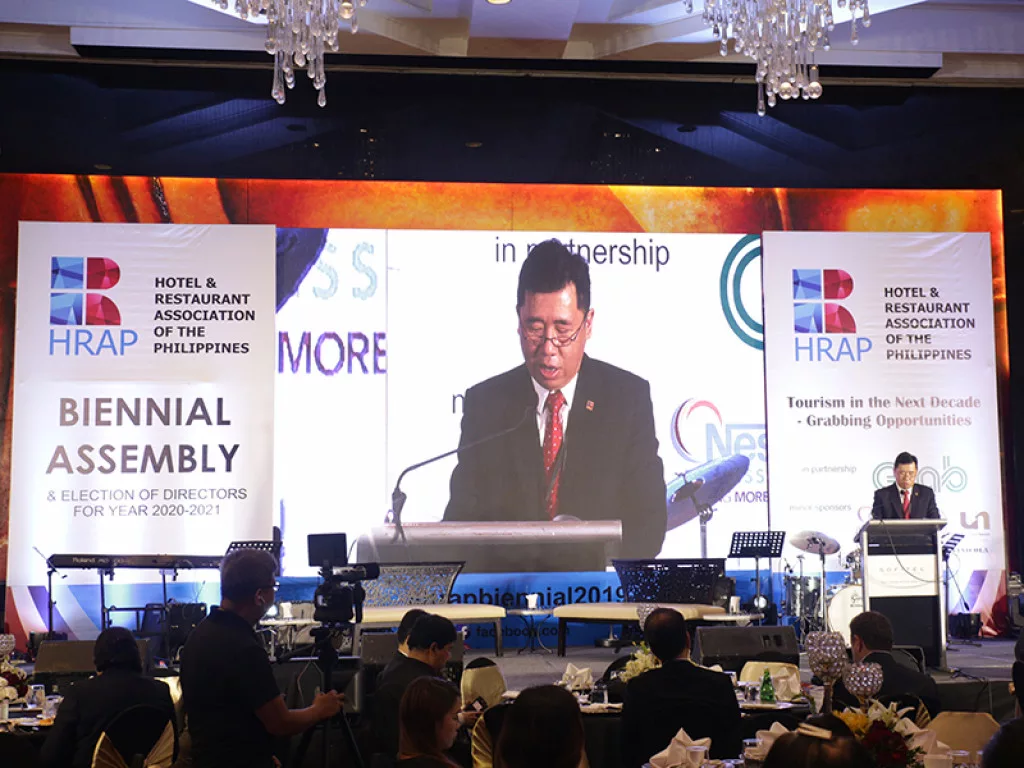
OUTLOOK RECOMMENDS
For Filippino fine dining…
Antonio’s – An illustrious gastronomical destination set in a colonial style mansion, Antonio’s is a hot ticket in the idyllic city of Tagaytay. The menu is intercontinental and offers tantalising set courses.
For a quirky dining experience…
Van Gogh is Bipolar – An eccentric hotspot in Quezon City at the heart of Manila’s culinary scene. Expect a shoes-off experience and eclectic decoration that is as unique as the dining. Reservations recommended.
Travel like a local…
Jeepney Tours – Take a tour of downtown Manila in the back of the Philippines’ most iconic mode of transport – the colourful Jeepney – a converted WWII truck. Bookings will re-open when restrictions permit.
Take a snorkel Safari…
snorkelventure
For capital comfort and convenience…
Belmont Manila – Boasting contemporary design, sophistication and simplicity, Manila’s Belmont Hotel is ideally suited for the business traveller. Currently closed to tourists exempt from ‘essential requirements’, when restrictions lift the Belmont offers world-class facilities in the strategic location of Newport City, just a short walk from the Ninoy Aquino International Airport Terminal 3.
Savoy Hotel Manila – Also located within Manila’s Newport City, the Savoy Manila gives you the space to experience and savour the taste of the Philippines. Spacious rooms with tasteful contemporary design are the ideal base to unwind after taking in the sights of Manila, including nearby shopping malls, spas and entertainment centres. The hotel will reopen to leisure travellers once restrictions permit.
For hedonistic island escapism…
El Nido Resorts – A serene collection of resorts on paradisiacal Palawan, spread across four miniature islets offering Filipino style thatched cottages and all the activities to best enjoy your tropical surroundings. Travel between the resorts using El Nido’s recently launched travel bubble.
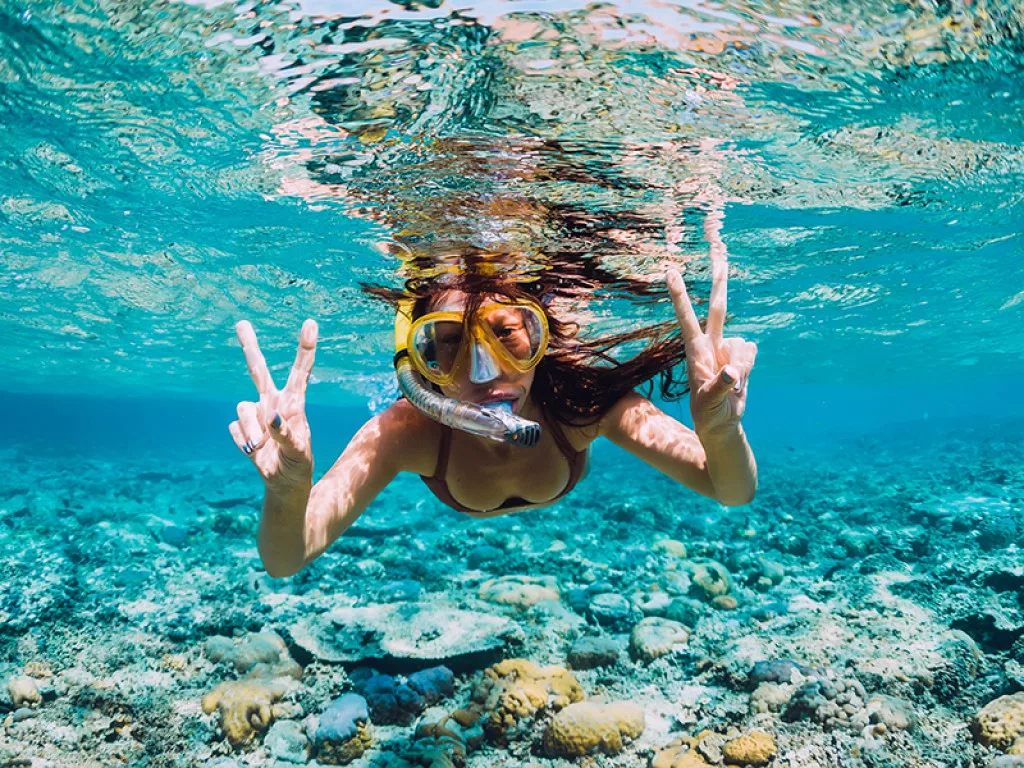
MANILA IN FOCUS
The ‘Pearl of the Orient’ has ballooned into a teeming metropolis. Previously the Western hub of trans-Pacific trade, the capital of the Philippines is an underrated historic city where ancient monuments rub shoulders with skyscrapers and shanty towns.
Manila is much more than a stopover destination or the gateway to your Philippines itinerary. Indeed, ‘Metro Manila’ as it is known, encompasses 17 separate cities.
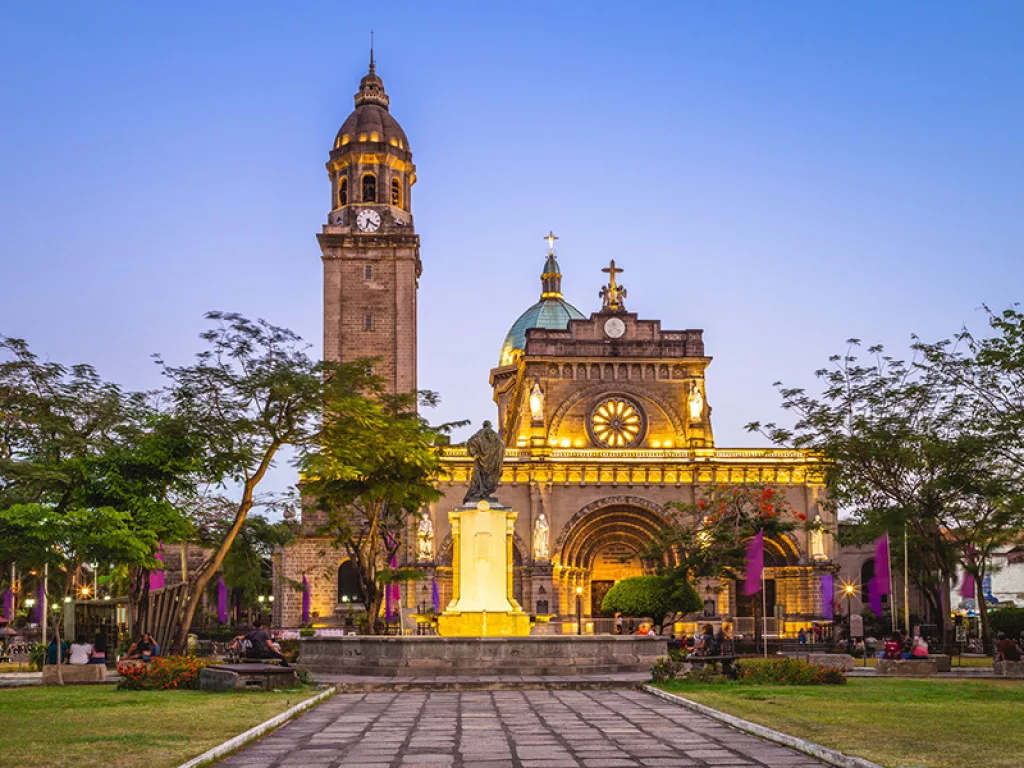
Visitors should start at one of the Philippines’ most important historical sites – Fort Santiago, the colonial seat of government during Spanish occupation which contains the iconic shrine of the National Hero. Found within Intramuros – the restored walled city of Manila – this area is rich with colonial heritage. Nearby, San Augustin Church is well worth a visit, as is the world’s oldest Chinatown in Binondo.
Harbour Square, the port on the capital’s west side, boasts tranquil views out to the South China Sea. Meanwhile, the 60-hectare wide Rizal Park offers peaceful escapism amidst the urban bustle.
The city’s food and drink scene is renowned, with an abundance of notable restaurants and a wealth of street food options to be found in the markets of Quiapo and the famous Tutuban Night Market. A lively capital, Manila’s nightlife is legendary, with districts such as contemporary Makati and Quezon City offering a wealth of clubs and cutting-edge bars ideal for those who prefer to carpe nocte .
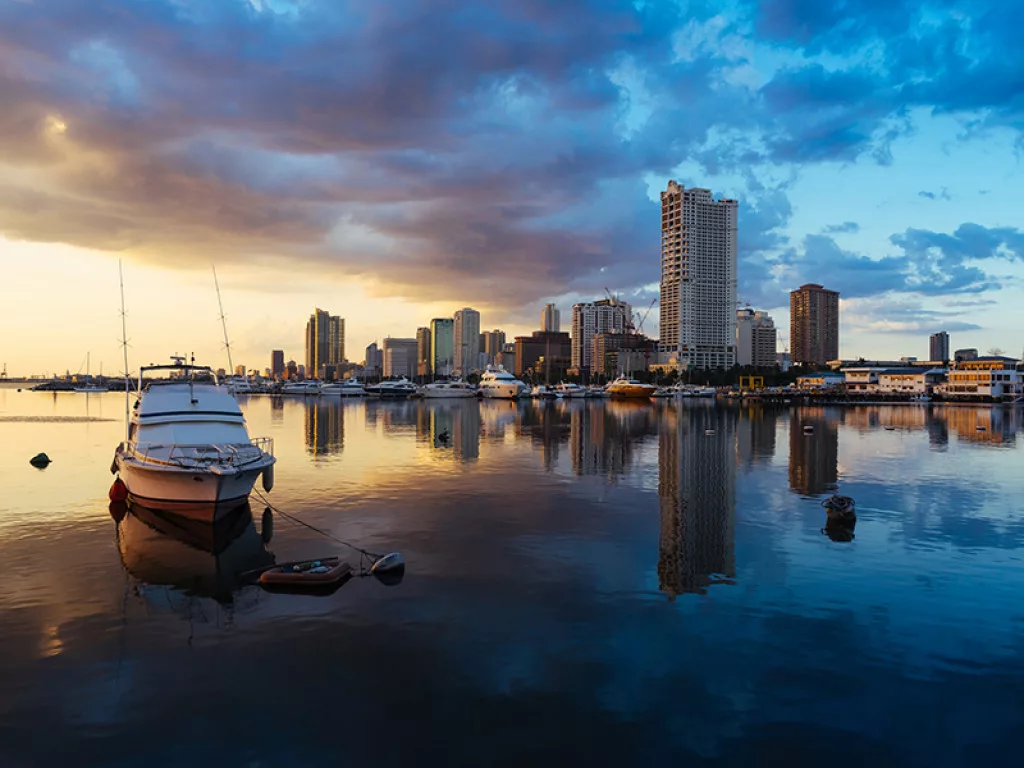
LANDMARK ATTRACTIONS
Chocolate Hills
So named due to their chocolate-like brown appearance during the dry season, the Chocolate Hills of Bohol are a geographical oddity that offer an impressive vista. Various local legends attest to the 1,000 or so natural conical domes, suggesting that they sprouted from the tears of a lovelorn giant. Nearby observation decks make for fantastic photo opportunities.
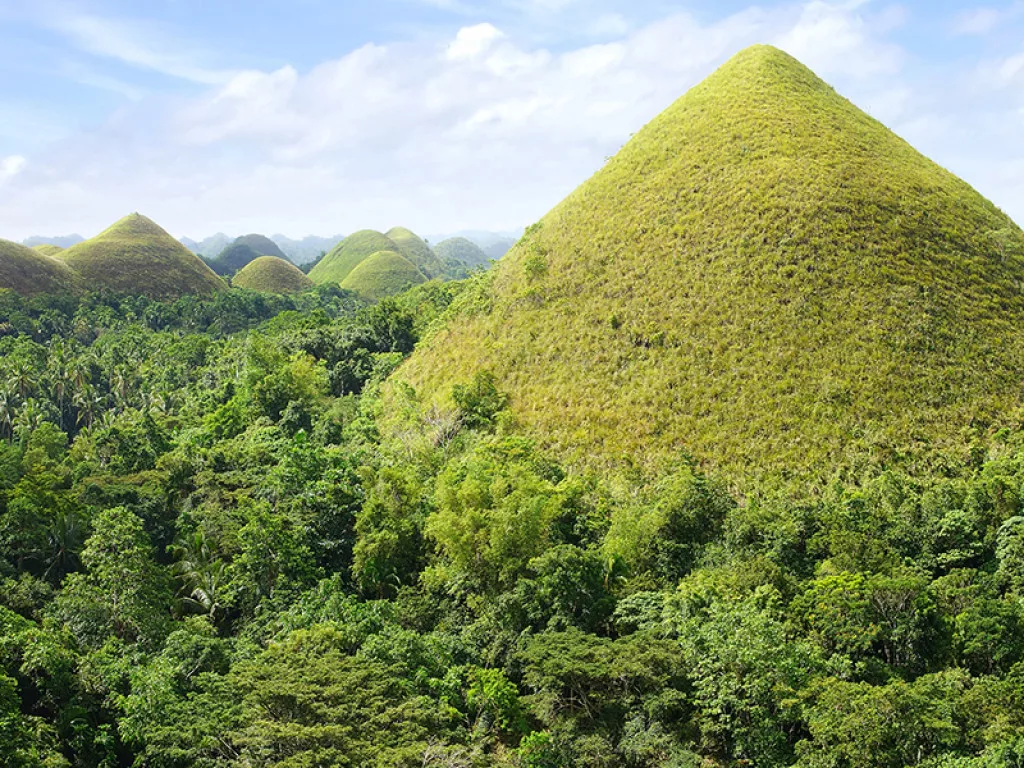
Widely perceived as the jewel in the archipelago’s crown, the UNESCO protected biosphere reserve of Palawan is a coral-fringed island whose verdant swathes of rainforest lend the province an Amazonian appearance. Paradaisacal El Nido in the north offers a good base for marine adventures in the Bacuit Archipelago while nearby Puertro Princesa boasts underground rivers that beg exploration.
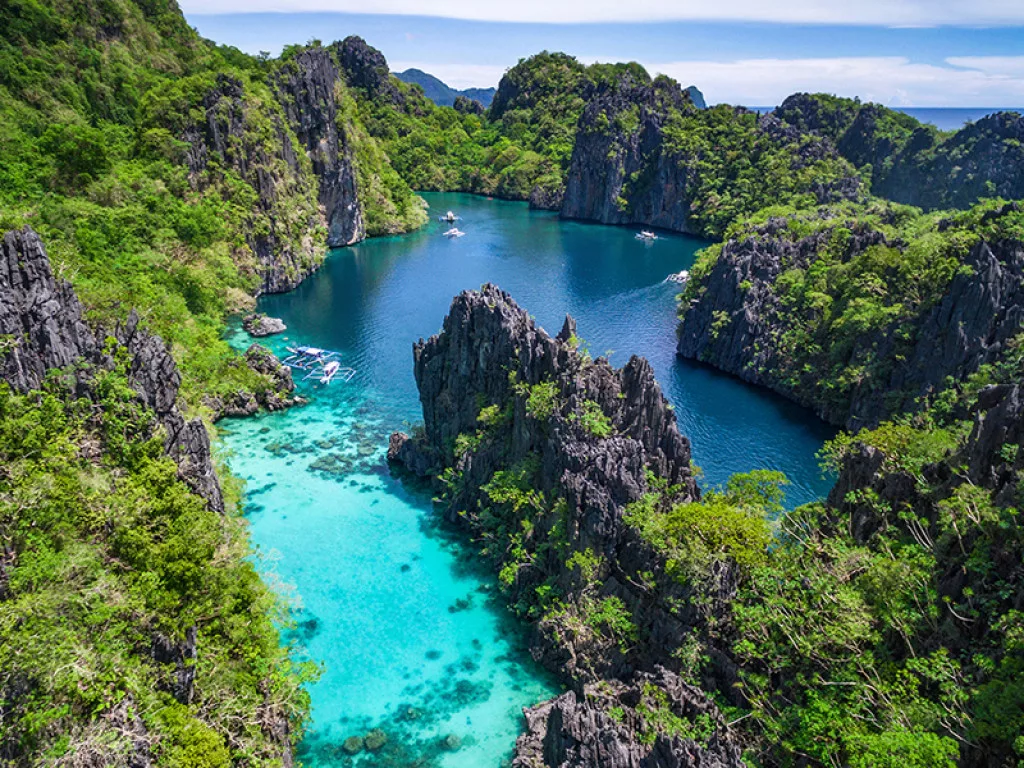
Ifugao Rice Terraces
Nestled at the foot of the Philippine Cordillera, these impressive rice terraces were carved by hand into the mountainside by the ancestors of the Ifugao tribe centuries ago. Known as the ‘Eighth Wonder of the World’, the terraces cover around 4,000 miles with a total length that is half of the world’s circumference.
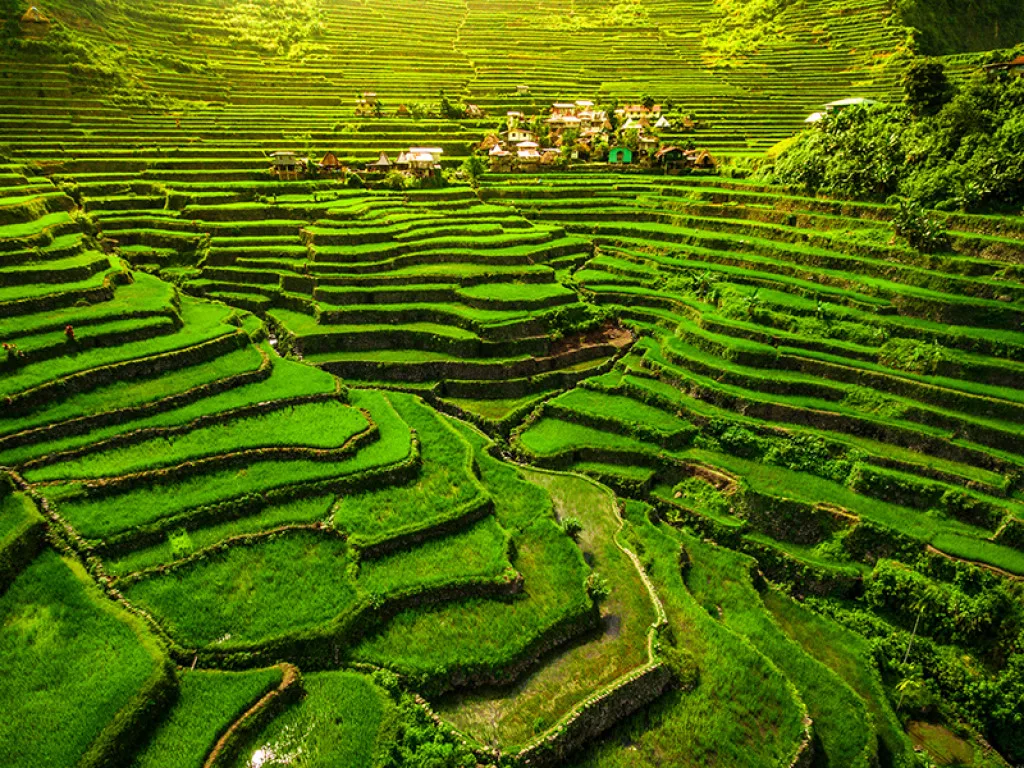
GETTING THERE AND AROUND
Most international travellers will arrive in the Philippines at Ninoy Aquino International Airport (MNL), located just seven kilometres from Manila. The majority of resort stays are reached primarily by boat or charter flight from Manila – but over-packers beware! It is worth remembering that luggage on charter flights is limited to 10 kilogrammes per person.
Public transport around Manila has a reputation for not being the most tourist friendly, but if you can, try and secure a ride in the brightly painted converted World War II trucks known as Jeepneys that are iconic to the islands. Asian ride-sharing service, Grab, is a good option for getting round the city, as is Manila’s Metro and Light Rail Transit which links most of the major tourist attractions.

More Asia Travel Guides

Bali Travel Guide
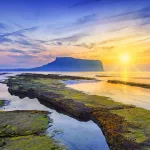
Jeju Island Travel Guide
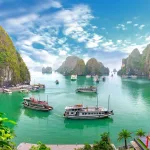
Vietnam Travel Guide
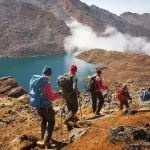
Nepal Travel Guide
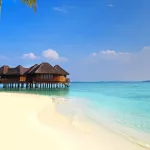
Maldives Travel Guide
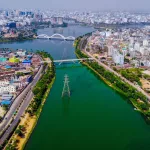
Bangladesh Travel Guide
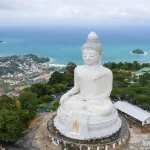
Phuket Travel Guide
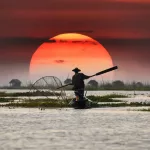
Myanmar Travel Guide
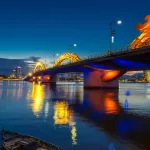
Danang Travel Guide
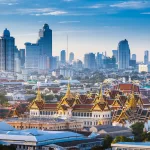
Thailand Travel Guide

Jordan Banks : Behind the Lens

Tootbus : Travel Business

Queensland Indigenous Womens Ranger Network

Under SXM : Creating Sustainable Underwater Experiences

Hidden Spots for Cherry Blossom Season : Round Up

Urbino : The Last Stop

Enrico Costantini : Behind the Lens

Lepogo Lodges : A Sustainable Safari Experience

Casa de Olivos : Sustainability Stories

Opulence on the Orient Express
Sign in to your account
Username or Email Address
Remember Me

19 Top-Rated Tourist Attractions & Things to Do in the Philippines
Written by Lana Law , Michael Law , and Anietra Hamper Updated Mar 21, 2024
The Philippines is a tropical paradise in the Pacific Ocean made up of more than 7,000 islands that offer a natural playground for your inner explorer. Collectively, its landscapes feature an array of natural wonders, from volcanoes and rice terraces to underwater rivers and limestone caves, along with beautiful beaches .
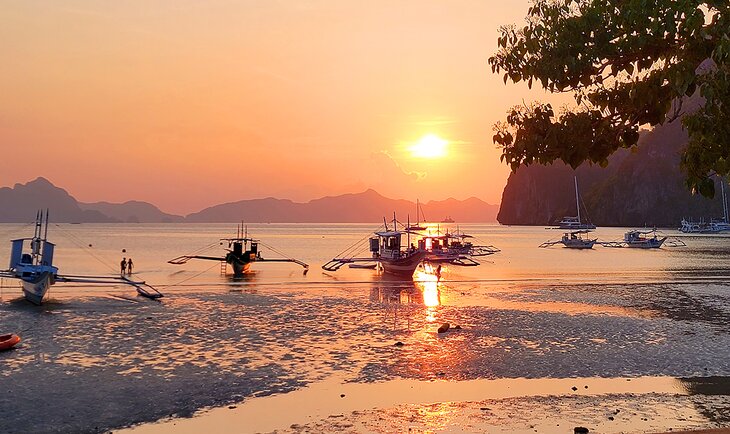
Individually, the islands each offer something unique, whether you are looking for the best place to dive and snorkel or prefer to take in the historical sights in cities like Manila or Vigan .
Since the country is so spread out, a trip to the Philippines requires careful planning and some internal flights. Some destinations, like the Chocolate Hills in Bohol or the Hanging Coffins in Sagada, are remote, but getting there is well worth the effort. It's also important to consider the best time of year to visit the Philippines. The rainy season runs from June to November.
Plan your travels with our list of the top tourist attractions and things to do in the Philippines.
1. White Beach, Boracay
2. relax on the stunning beaches of palawan, 3. chocolate hills, bohol, 4. underground river tour, puerto princesa, 5. hanging coffins, sagada, 6. diving in coron, 7. batad rice terraces, banaue, 8. mayon volcano, albay, 9. island hopping, 10. manila historical sightseeing tour, 11. ride in a jeepney, 12. historic tour of corregidor island, 13. bird-watching, 14. pagsanjan falls, laguna, 15. tour colonial vigan, 16. taal volcano, talisay, 17. jungle training, subic bay, 18. hanging bridge, sevilla, 19. sugba lagoon, siargao, best time to visit the philippines.
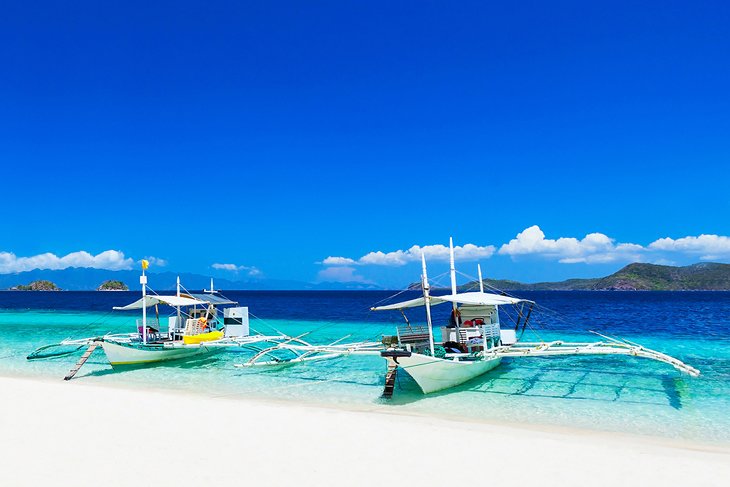
There is no shortage of pristine beaches in the Philippines, but if you are looking for a more active beach scene, one of the best places to visit is White Beach in Boracay . This is the most populous beach on the island but where you will find ample opportunities for boating and other water sports. It's also one of the most beautiful beaches in Asia .
Plenty of chairs and hammocks are beneath the palm trees, so you can relax and enjoy the pure white sand. You can even book a beachside massage. Snorkeling is a popular activity at White Beach, but if you do not want to put in so much work, take a banana boat ride or book a trip on a glass-bottom boat.
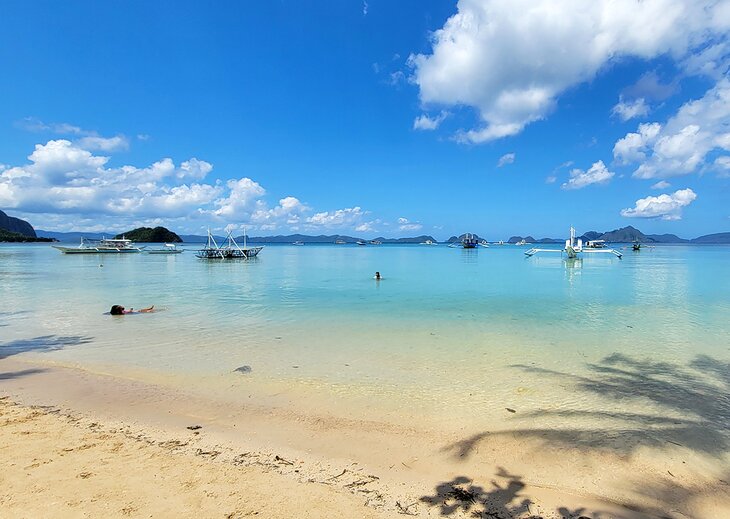
At the northern tip of the Island of Palawan are some of the most scenic beaches in the Philippines, unlike anything else you will find in the country. This is not just stunning soft sand and warm calm waters like you find in other areas of the Philippines. Add to this, limestone cliffs jutting up from the ocean, secrete coves that you can paddle into, and beautiful offshore islands. Some of the islands are also home to boutique luxury resorts.
The main town here is El Nido . A variety of boat trips offer day tours from El Nido to secluded beaches, sandbars, and bays. This is the most popular activity here and something that almost everyone signs up for when visiting. But you do not need to even leave El Nido, you can find this beautiful setting from the beaches around town.
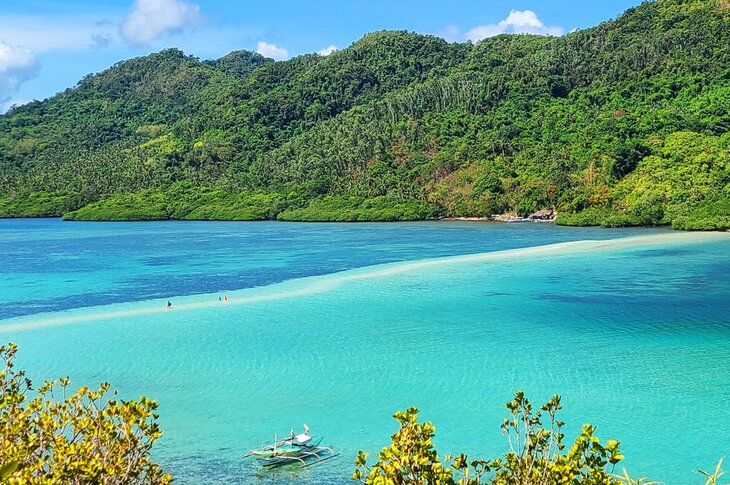
Northern Palawan is not overly developed. It has enough infrastructure to make things comfortable but it's not known for large resorts. If you are looking for luxury, it will be at small resorts and lodges. If you are looking for budget accommodation, you can find this as well in town but off the beach.
Palawan appeals to everyone from adventurous families to backpackers. A small airport in El Nido offers direct flights to Manila. The city of Puerto Princesa is also found on the island of Palawan, about a 5-hour drive from El Nido. If you want to see the Underground River in Puerto Princesa, you may want to fly into El Nido and out of Puerto Princesa or vice versa.
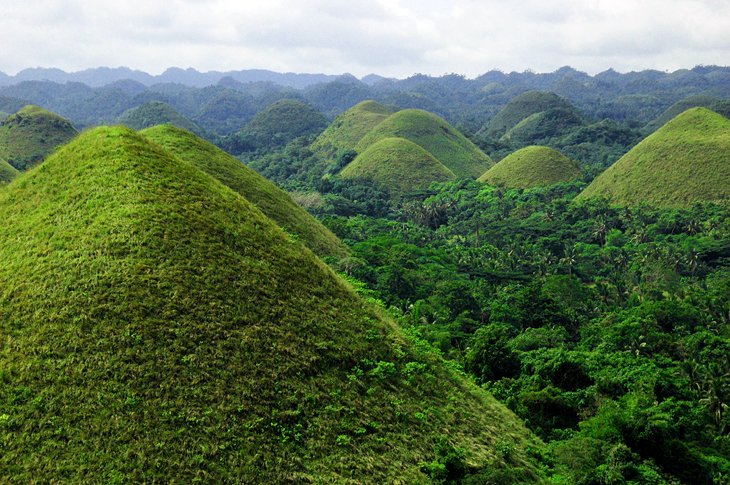
The geological wonder on the island of Bohol known as the Chocolate Hills is a unique natural phenomenon. This UNESCO World Heritage site is a protected area that features more than 1,200 small mountains that emerged above the ground over several centuries.
The area was once under the ocean, and these unique hills expand in every direction. They are green during much of the year, but during the dry season, they turn to a chocolate-brown color, thus the name, chocolate hills.
A convenient path leads to the top of a lookout area, which provides the best view. Be sure to observe the many delicate flowers along the walkway that are unique to this area.
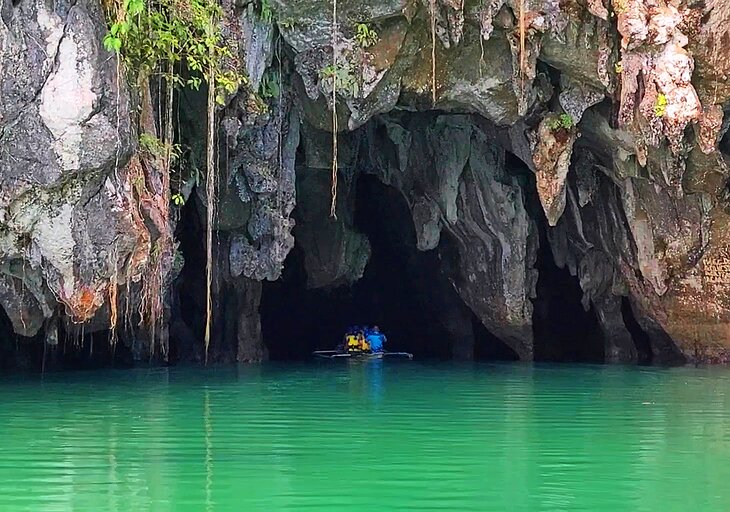
Taking a river tour of the Underground River near Puerto Princesa is one of the most awe-inspiring things to do in the Philippines. The underground river on Palawan Island is inside the Subterranean River National Park , a UNESCO World Heritage site.
The boat tours take you to experience the majestic five-mile river that runs below ground. The trip takes you through an intricate cave system surrounded by vertical limestone cliffs. You can see ancient stalagmite and stalactite formations, as well as bats flying overhead, as the coolness of the cave balances the tropical heat outside.
As you float through the dark caves on emerald water, your guide will identify points of interest and tropical wildlife that live along the river, which flows into the South China Sea .
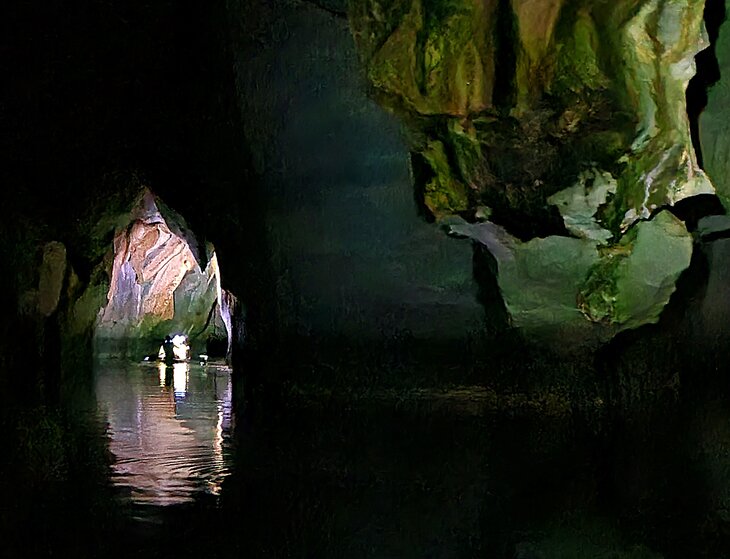
You can take a tour from Puerto Princesa, which is a long day due to the drive time involved. A better alternative is to stay in Sabang (which is about an hour and a half from Puerto Princesa) and hop on a tour boat right from there. This way you can see the cave in a morning or an afternoon. Sabang also has a beautiful beach and decent accommodation and is a nice place to spend a day or two whether or not you are visiting the cave.
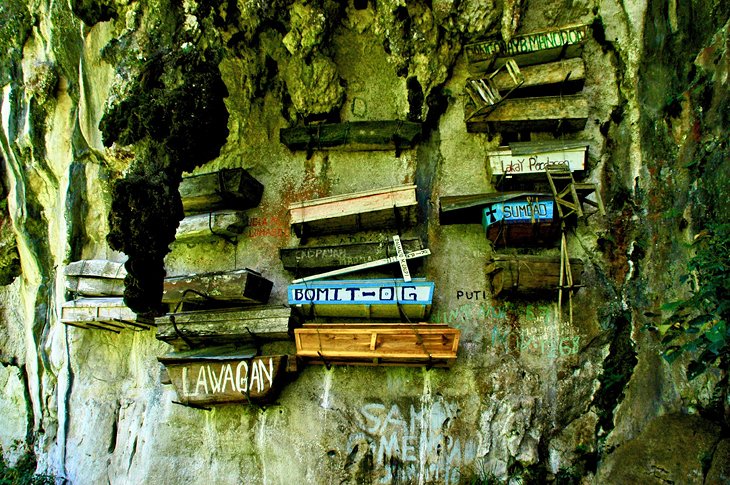
The hanging coffins in Sagada, located in the northern Cordillera Mountains , is one of the most unusual sights in the Philippines. The hanging coffins, some centuries old, are suspended from the cliffs of the Echo Valley . These ceremonial burials were reserved for the wealthy tribesmen.
Getting to the mountainous region requires some travel time. Although transportation to this area is now easier than it used to be, it still requires some physical endurance to hike the steep and narrow paths to the secluded coffins.
You will want sturdy shoes, and you may want to train before your trip to adapt more quickly to the high altitude. The reward is a sight you will never forget and well-earned bragging rights.
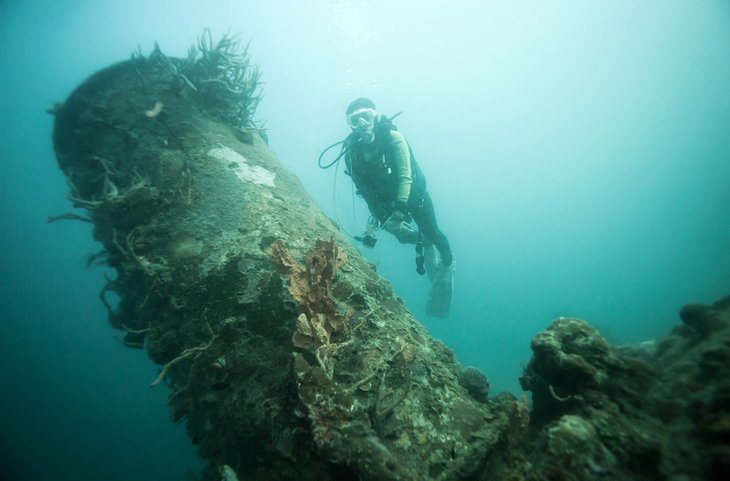
Coron Island in the Philippines, as well as other nearby islands, are popular diving locations in the country due to the abundance of coral reefs and shipwrecks.
The sunken ships to explore on Sangat Island in Coron are some of the best diving sites in the world. The wrecks are at varied depths that are suitable for both deep-water scuba divers and shallow-water snorkeling.
The shipwrecks, many from WWII , have become habitats for diverse fish species. The clear water makes for easy viewing of the shipwrecks and underwater wildlife. Many of the shipwrecks are from an attack on the Imperial Japanese Navy in 1944. Deep divers will want to view the Akitsushima Maru warship, Irako Maru , and the Kyokuzan Maru .
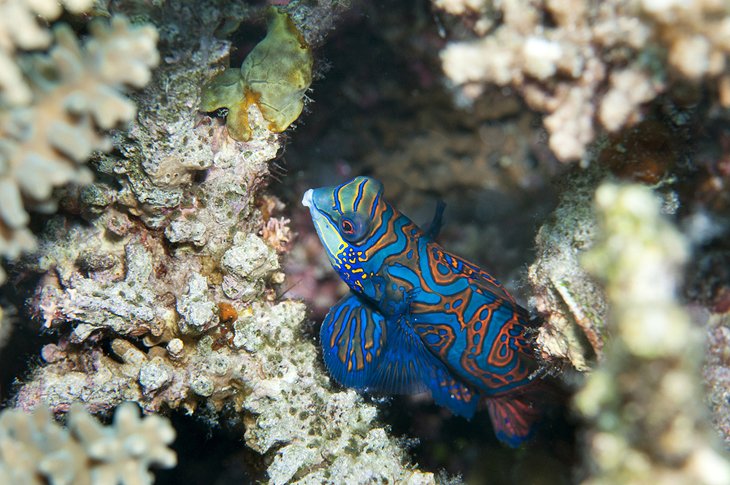
The Coral Garden is a specific site with particularly accessible coral and fish species. Snorkeling and diving tours to the Coral Garden often encompass stops at nearby shipwrecks.
If you are unsure where to snorkel to see some of the best coral, taking an organized trip to the Coral Garden is an easy introduction to the sport. Guides are able to point out sea turtles and fish and offer information about what kinds of coral you are viewing underwater.
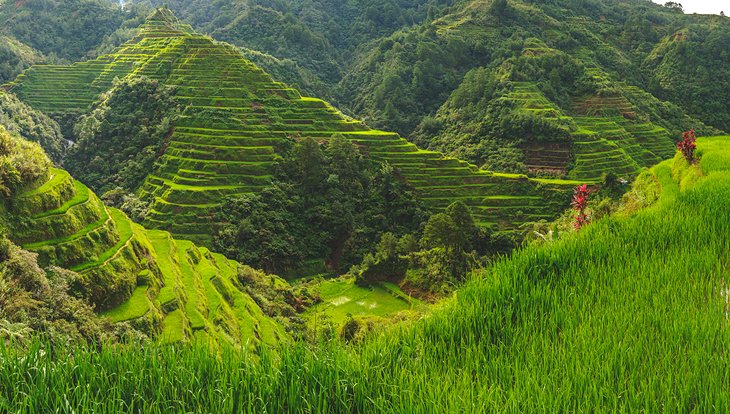
Viewing the Batad rice terraces at sunrise in Banaue is an unforgettable experience. This is especially recommended for landscape photographers who want to capture compelling images of Philippine agriculture. Some of these terraces are more than 2,000 years old and represent a common form of farming in the country.
The stacked terraces are carved by hand into the mountainside, creating vertical farming fields in a region void of flat land. Workers commonly plant rice and vegetables. You can walk some roads above the terraces that give you the best view by looking below. Early morning and dusk provide the best light to illuminate the electric green color of the fields.
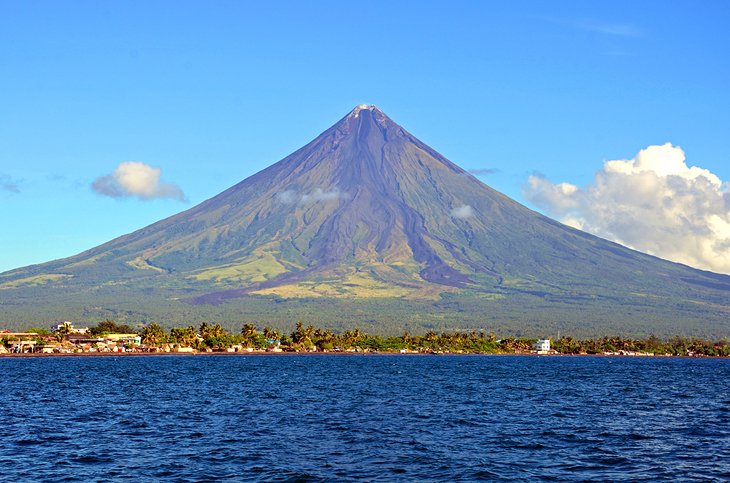
The Mayon Volcano in the Albay province on Luzon Island is a must-see in the Philippines. It is an active stratovolcano with an elevation of more than 2,400 meters. The Mayon volcano has a perfect cone peak.
Most visitors will want to enjoy the volcano by viewing it from the ground. Nature trails in the national park grounds surround the volcano, where you can also see wildlife like parakeets and other birds.
Extreme hikers can apply for a permit to climb the volcano, but it is a difficult trek through forest, and dangerous gases are emitted near the peak, so caution is advised. The ideal time to visit is March through May, outside of the rainy season. You can take an organized trip from Manila to get here.
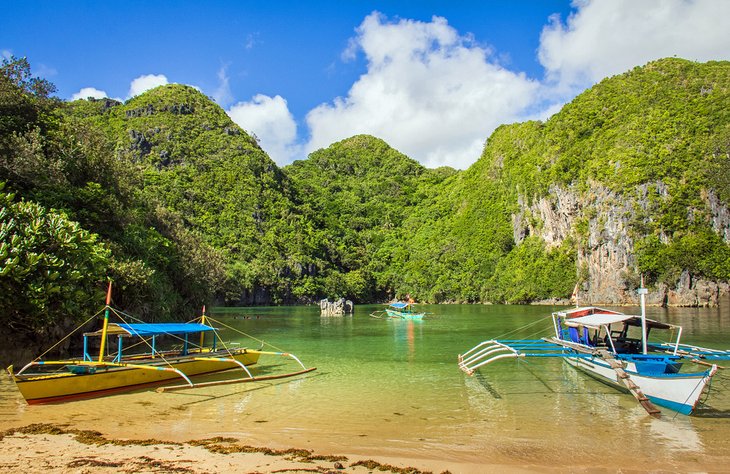
If you just cannot decide what to do or where to go in the Philippines, an island-hopping tour might offer just the right mix. You still have to whittle down choices, but an organized island-hopping tour allows you to see a collection of islands.
You can sample snorkeling, swimming, sightseeing, and dining on local food in multiple locations and eliminate the hassle of trying to plan it on your own. Many of the island hopping tours span several days. One of the most popular island-hopping tours is to the Caramoan Islands , which were made famous after being featured on the hit TV show Survivor.
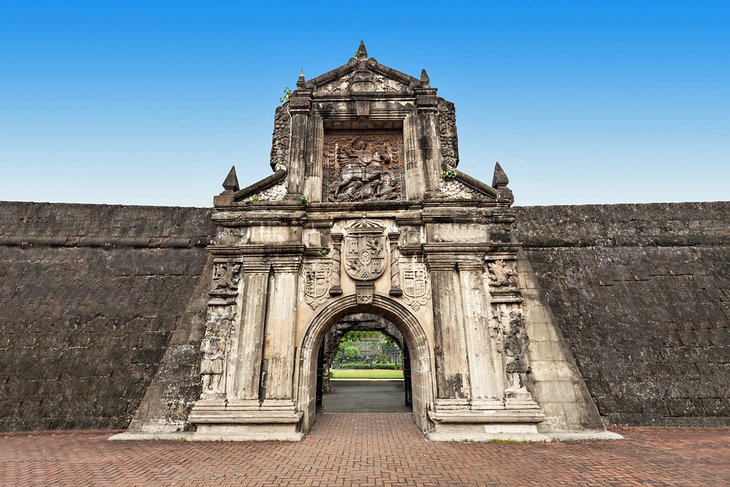
Manila is an exciting and vibrant city that is a thriving metropolis surrounded by centuries-old churches and colonial history. It is easy to walk around Manila on your own, or take a guided sightseeing tour of the oldest district, the Intramuros or walled city, where you'll find some of the most significant tourist attractions and important landmarks and monuments.
This will give you a better appreciation for Manila. You can see the famous San Agustin Church and monuments at Rizal Park and Fort Santiago , each bearing a significant influence on Manila that is best shared by a guide. Some tours are offered by coach, and others are available as walking or biking tours around the city.
After your tour, stop by one of the local restaurants for lunch and enjoy modern-day Manila as you watch the colorful jeepneys flying by on the streets.
- Read More: Top-Rated Tourist Attractions & Things to Do in Manila
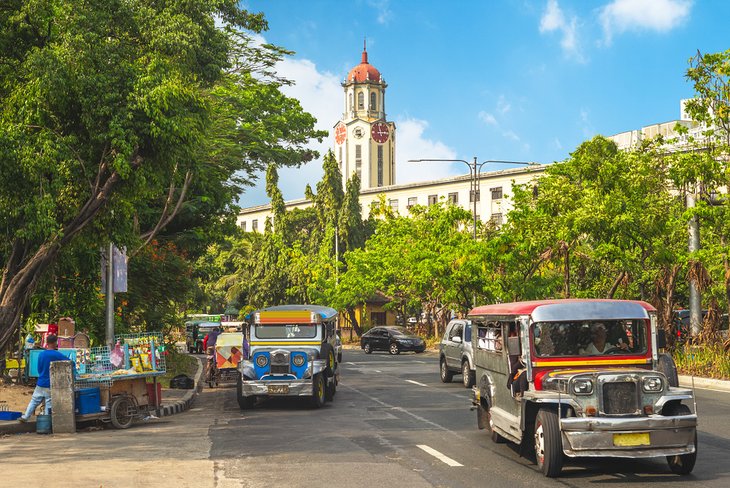
Taking a ride in a jeepney is a must-experience in the Philippines, even if you have no specific destination in mind. The jeepney is one of the main forms of transportation in the Philippines . They are vehicles originally made from post-World War II U.S. army jeeps that have been transformed into colorful and fun forms of transportation.
The jeepney has become synonymous with the Philippines; a national symbol of sorts. It is unique to the country. The decorations and colorful decor on the jeepneys are as chaotic as the traffic on the city streets in places like Manila. Taking a ride in one is a thrill, with the random stops to let people on and off and being truly immersed in the local culture as residents go about their daily lives. Try taking a jeepney to one of the tourist sites you plan to visit or to your dinner spot in the evening. It might just be the cheapest entertainment you find in the country, and it will definitely be one of the most memorable experiences.
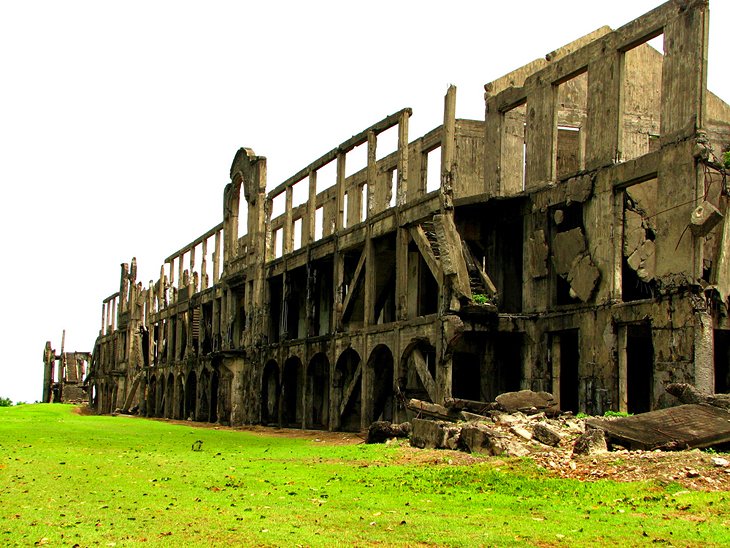
A tour of Corregidor Island is a must-see for history buffs visiting the Philippines. The island played a significant role in World War II and was the location of several battles. The relics left behind from these battles include secret tunnels and bunkers used as hideouts during the war, as well as weapons, barracks, and historical artifacts.
Be sure to take some time at the Pacific War Memorial on-site. Regular guided tours leave from Manila to a ferry that takes you to the island. This requires a full day to visit, but it is well worth the time if you have an interest in WWII history.
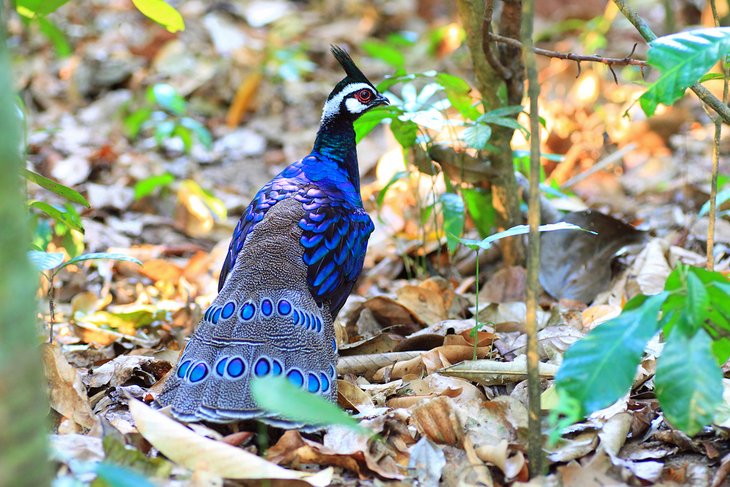
The stunning natural landscapes and ecosystems throughout the Philippines lend themselves to diverse habitats for birds, meaning the bird-watching opportunities are plentiful. Even if you are not an avid birder, it is worth taking a pair of binoculars on your trip to get a glimpse of some unique species that you likely will not encounter in other parts of the world.
With more than 7,000 islands and 94 national parks in the Philippines, it can be tough to narrow down where to start to look for some of the 600 species of birds that either live in or migrate through the country, like the brown-throated sunbird or the Palawan peacock-pheasant.
Some of the best places to start are the locations that cater to bird-watching like La Mesa Eco Park , which is popular among avid birders looking for barred rails, little egrets, osprey, and migratory birds that regularly rest in the park. The Negros and Panay Islands provided habitat for the endangered Walden's hornbill.
In the Luzon region, the Angat Watershed Reserve is a good spot to find many species along the trails and in the nearby Angat Rainforest and Ecological Park . Another spot where you see many migratory birds is in the Candaba Wetlands in Pampanga for species like purple herons.
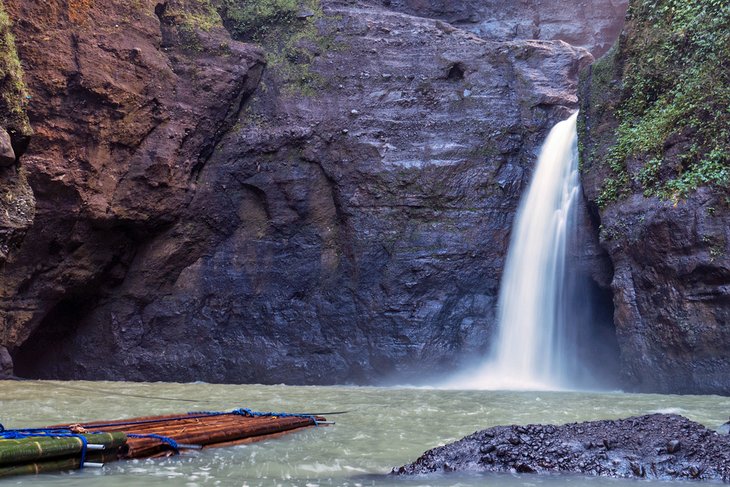
The only thing more exciting than admiring one of the most notable waterfalls in the Philippines is traversing it in a dugout canoe. The Pagsanjan Falls waterfall is part of the Pagsanjan Gorge National Park .
Your trip along the falls will take you upstream through tropical landscapes, where you will be able to swim in natural pools and pass through caves. Once you get used to the leisurely ride, prepare for the main event, as you head downstream at a fast pace through large rocks and churning water for what the locals call "shooting the rapids." It is an exhilarating outdoor adventure, and you can take day trips from Manila.
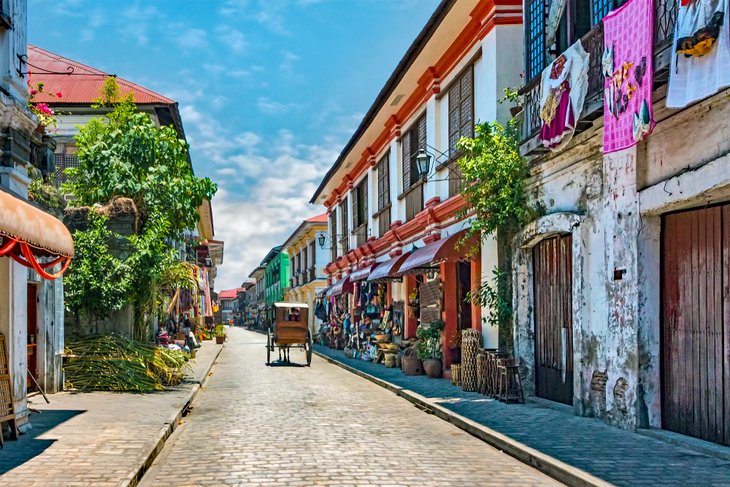
A fun place to visit with a terrific pre-colonial flair is the streets of Calle Crisologo of Vigan City, located in the Ilocos province. It stands out from other cities in the Philippines. The brick streets and traditional horse and carriage mode of transportation are reminiscent of the 16th-century trading hub that used to be for foreign traders coming through the area.
This is a fun city to spend a day or two on your trip. You can take an organized tour to learn about the city's history or stroll on your own to the small vendor shops and eateries along the main street. This is also a prime spot to find souvenirs, from bags to baskets and pottery, for a reasonable price.
Be advised that if you ask your calesa driver to take you to the best shopping area in the city, he or she might instead drop you off at a friend's shop in order to earn a kickback of your purchases. It's better to take a ride, then explore the city street shops on your own.

The Taal Volcano on the island of Luzon is one of the most active in the country. It is in the center of Taal Lake, so just getting to the crater is part of the adventure. The city of Talisay , where you will catch a boat to get to the crater, is less than an hour's drive from Manila. You will catch a boat to go across Taal Lake then hike to the rim of the crater.
There are a number of trails around the volcano. The Spanish Trail goes to the top of the volcano and has some of the most impressive views. The less popular Kenney Trail is a good option if you want to avoid potential crowds or if you think you might want to rest along the way.
This trail has quite a few shade trees. Due to the logistics involved in visiting Taal Volcano, you might want to consider an organized day tour.
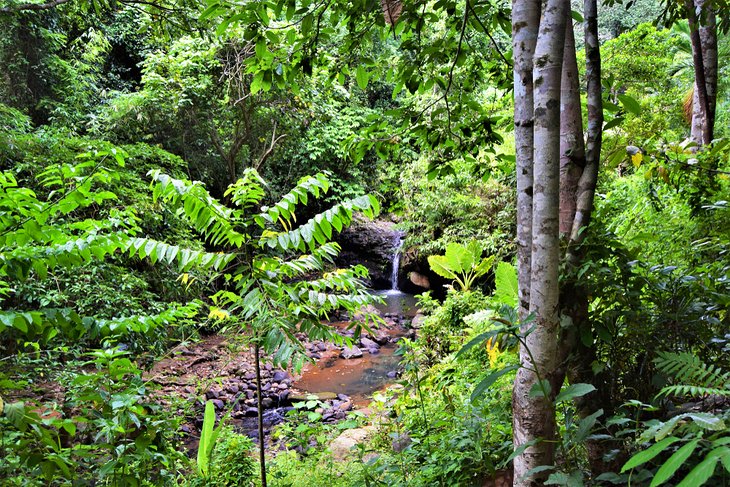
When the United States Navy had an active base on Subic Bay, their Navy Seals received training by indigenous Aetas on how to survive the jungle. Now, you can visit the former base on Subic Bay and even take Jungle Environmental Survival Training from the natives.
You can take a tour of the former Subic Bay Naval Base and tour the converted complex, which has a number of activities on-site. Subic Bay is located on the island of Luzon, so it is an easy day trip from Manila, or you can stay in the region.
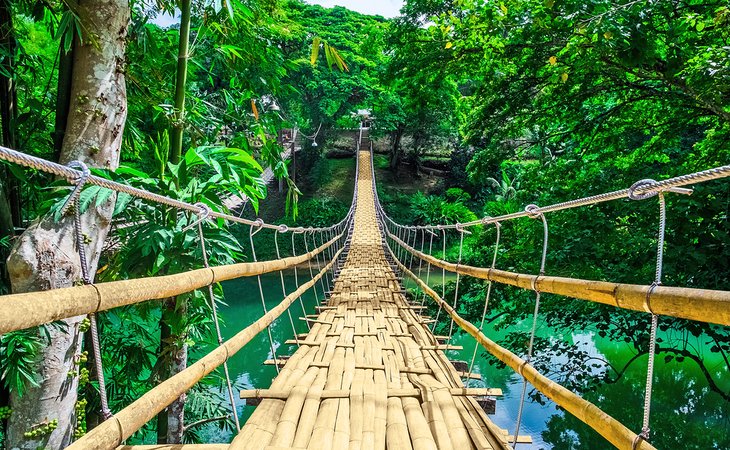
On the island of Bohol, a bridge made entirely of bamboo swings almost 40 meters in the air over the Loboc River . For those with a sense of adventure, or a desire to conquer a fear of heights, the hanging bridge walk will be a vacation experience you will never forget. The hanging bridge is in the town of Sevilla. It is easy to combine this experience with other excursions on Bohol Island.
Over the years, the bridge, which was originally made with woven bamboo, has received some safety reinforcements due to its popularity with tourists. Not to worry though, it still creeks and swings and gives you butterflies in your stomach as you look down at the rushing river below you.
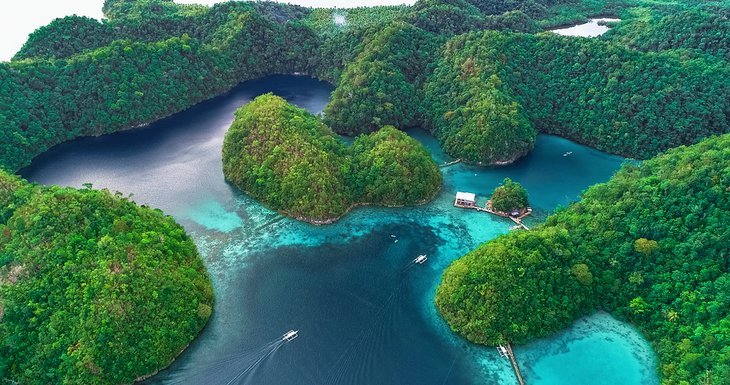
There are so many iconic lagoons in the Philippines that have movie-set quality tranquil blue waters below a towering cliffside, but one of the most spectacular is Sugba Lagoon on the island of Siargao. The lagoon is perfect for just basking in the natural, peaceful surroundings, but there are plenty of activities, too, if you want a more adventurous day.
You can book a day-trip package to the Sugba Lagoon from a nearby city like Del Carmen or General Luna, but you can also go on your own. You must take a boat to the lagoon. If you have the nerves and are not afraid of heights, you can try cliff jumping from the designated area above the lagoon. You can also rent a paddleboard or kayak, and take a more peaceful tour of the lagoon at your own pace.
The best time to go to the Philippines is during the dry season , which is between November and April , when you will have optimal weather conditions and the best opportunities for outdoor experiences throughout the country. This time of year has the least amount of rainfall, which means more favorable beach days , fewer chances of weather-impacted flight delays, and easier accessibility to remote regions and smaller islands.
The dry season is also the high tourist season and the most popular time to visit so you will have increased tourist activity and higher prices for airfare and lodging. During this popular time, the months of December, January and February are the coolest months to visit before the sweltering Asian heat kicks in starting in March. Keep in mind that high temperatures and humidity surge in April and May.

philippines.travel
This webpage was generated by the domain owner using Sedo Domain Parking . Disclaimer: Sedo maintains no relationship with third party advertisers. Reference to any specific service or trade mark is not controlled by Sedo nor does it constitute or imply its association, endorsement or recommendation.
REPUBLIC OF THE PHILIPPINES
Department of tourism.
PST: 8:36:19
Media Release
The Department of Tourism (DOT) endeavors to ensure the tourism resiliency of the country’s prime destination, El Nido, Palawan, through the full implementation of the Sustainable Tourism Development Project (STDP) this year.
CORON, PALAWAN -- The Department of Tourism (DOT) expresses support for Coron’s sustainable tourism development to draw more visitors and hasten tourism recovery.
PUERTO PRINCESA CITY, PALAWAN -- Department of Tourism (DOT) Secretary Bernadette Romulo-Puyat supports the decision of Puerto Princesa City (PPC) executives to reopen its attractions to more domestic tourists with minimum health and safety standards in place.
The Department of Tourism (DOT) starting today, March 1, opens the application for the World Travel and Tourism Council (WTTC) Safe Travels Stamp to all DOT-accredited accommodation establishments (AEs) and tourism destinations that are open to local tourists.
The Department of Tourism (DOT) celebrates the inclusion of Boracay's world-famous White Beach at the 12th spot and El Nido, Palawan's Nacpan Beach at 18th of the TripAdvisor Travelers' Choice 2021 Best of the Best Awards Top 25 Beaches - Asia category.
The Department of Tourism (DOT) is for the safe reopening of tourist destinations as this allows us to restart our economy and help our tourism workers regain their jobs. The Department therefore welcomes the approval of uniform travel protocols for all local government units (LGUs) by the Inter-Agency Task Force on the Management of Emerging Infectious Diseases (IATF-MEID) to facilitate travel movement and promote local tourism.
DUMAGUETE CITY -- The Department of Tourism (DOT) commits to assist yet another provincial destination as the local executives of Negros Oriental heralds reopening its sites to more domestic tourists.
SAN JUAN, SIQUIJOR -- Department of Tourism (DOT) Secretary Bernadette Romulo-Puyat yesterday (24 February) traveled to Siquijor, as part of the ongoing efforts to assist in the safe reopening of tourist destinations in the new normal.
The Department of Tourism (DOT) expressed support for the Department of the Interior and Local Government (DILG)’s ongoing streamlining of travel procedures and requirements imposed by local government units (LGUs).
The Department of Tourism (DOT) commends the local government of El Nido for the tight entry protocols enforced to guarantee the health and safety of guests, workers and host communities in the tourist destination.
The Department of Tourism (DOT), in collaboration with the Provincial Government of Bohol, announced its online travel fair, Balik sa Bohol: Bohol Online Sale, which will run from February 21 to March 14, 2021. The island-wide travel sale will offer discounts of up to 70% off on accommodations, dining, and tour services.
Department of Tourism (DOT) Secretary Bernadette Romulo-Puyat announced today (February 17) the formal reopening of the historic walled city of Intramuros in the new normal.
Relaxed health protocols that are standard across tourism destinations and personalized packages will encourage more Filipinos to travel locally.
The Department of Tourism (DOT), after repeated warnings against tourists who falsify their COVID tests to enter Boracay, has filed charges against the six (6) Manila-based errant tourists who were nabbed in January 2021 for Falsification of Public Documents. Marc Judicpa of the DOT Region VI-Boracay Field and Compliance Monitoring Office (BFCMO) filed the complaint.
The Department of Tourism (DOT) expressed optimism for tourism’s speedy recovery with the decision of the Inter-Agency Task Force on the Management of Emerging Infectious Diseases (IATF-MEID) to reclassify industries for the continued reopening of the economy.
LAGUNA -- The Department of Tourism (DOT) elevates cultural tourism and ecotourism in the new normal as these will heighten domestic travel in the province amidst the pandemic.
The Department of Tourism - National Capital Region (DOT-NCR) is returning with the first installment of its Leadership Excellence Series (LES) featuring a 3600 virtual learning experience. The hybrid training program inspired by the world-renowned TEDTalks will be brought to life from the traditional webinar format through 3D and greenscreen technology and is happening at the Okada Manila on February 11, 2021, from 2:00 P.M.- 4:00 P.M via Zoom and simulcast over DOT-NCR’s social media channels @TourismMNL on Facebook and Twitter, and Tourism MNL on Youtube.
The Department of Tourism (DOT) lauds COVID Task Force Chief, Secretary Carlito Galvez for granting the DOT’s request to include tourism frontline service personnel in the Priority Group of the country’s vaccination program against the coronavirus disease.
The Department of Tourism (DOT) announced today that Baguio hotels can resume receiving domestic tourists even under General Community Quarantine (GCQ). This, after the Inter-Agency Task Force on the Management of Emerging Infectious Diseases (IATF-MEID) passed Resolution No. 98 dated 04 February 2021, which granted the request of Baguio City to resume hotel operations in consideration of the huge number of confirmed bookings for the month of February.
The Department of Tourism (DOT) lauds recent developments to ensure Southeast Asia’s competitiveness as a single tourism destination and to bolster the recovery of tourism in the wake of the coronavirus pandemic.
Department of Tourism (DOT) Secretary Bernadette Romulo-Puyat and Department of Labor and Employment (DOLE) Secretary Silvestre H. Bello III on Tuesday (February 03) signed the DOT-DOLE Joint Memorandum Circular (JMC) No. 2021-001 (Amended Implementing Guidelines on Providing Financial Assistance and Cash-For-Work Program for Displaced Workers in the Tourism Sector) which amends the former JMC to further expand the coverage of beneficiaries to include Local Government-Licensed Tourism Support Service (TSS) enterprises, providers and associations of providers.
In light of the recent case of six (6) tourists entering Boracay with fake RT-PCR test results, three (3) of whom were revealed to be positive for COVID-19, the Department of Tourism (DOT) appeals to travelers to stop forging and faking travel documents, else face fines and proper criminal charges from the local government units (LGU), which may include the penalty of imprisonment.
The Department of Tourism (DOT) reminds travelers that for most areas, especially for Boracay Island, a negative Reverse Transcription Polymerase Chain Reaction (RT-PCR) test result is still a requirement before entry.
SAN PABLO, LAGUNA -- The development of green corridors play an important role in maintaining regional biodiversity, improving environmental quality, offering economic resilience opportunities, protecting heritage and culture, and supporting the jumpstart of the economy to restart tourism activities in the new normal.
SAN PABLO, LAGUNA -- The Department of Tourism (DOT) pledges to continuously promote Laguna as a fun, safe, and sustainable tourist destination with the help of the local government units (LGUs) and the private sector in the province.
The Department of Tourism (DOT) welcomes the new protocols for arriving passengers contained in the Inter-Agency Task Force on the Management of Emerging Infectious Diseases (IATF-MEID) Resolution No. 97 dated 28 January 2021, following the body’s decision to lift the travel ban on passengers coming from countries with reported cases of the new Covid variant.
The DOT Cordillera Administrative Region (DOT-CAR) is currently investigating the reported party at a DOT-accredited accommodation establishment in Baguio City. A Notice to Explain has already been issued to the establishment.
Manila - The Department of Tourism (DOT) officially welcomed on Monday (25 January) Joy Nostalg Hotel & Suites Manila and Grand Hyatt Hotel as the first two recipients of the World Travel and Tourism Council (WTTC) Safe Travels Stamp issued through the DOT.
BACOLOD CITY - After the successful reopening of Boracay Island to local tourists in October 2020, the Department of Tourism (DOT) is now in talks with local government officials and tourism stakeholders of Negros Occidental to explore the reopening of the province to more domestic tourists.
The Department of Tourism (DOT) is saddened by the news of the management decision to temporarily close the operations starting February 1, 2021 of Makati Shangri-la Hotel.
The Department of Tourism (DOT) in partnership with the Slow Food Negros Community, Negros Museum, and Provincial Government of Negros Occidental, on Tuesday (January 19), launched an 82-page cookbook entitled “Negrense Heritage Cooking”.
The Department of Tourism (DOT), in its Resolution dated 14 January 2021, finds the City Garden Grand Hotel (CGGH) in Makati City liable for the offense of gross and evident bad faith in dealing with clients/fraudulent solicitation of business or making any false, deceptive, or misleading claims or statements for the purpose of soliciting business from clients under Section 13.2 (c) of DOT Memorandum Circular No. 2018-03.
The Department of Tourism (DOT) celebrates anew with the world as White Beach, Boracay and El Nido, Palawan place 2nd and 9th, respectively, in Condé Nast’s Traveler's 25 Best Island Beaches in the World: 2020 Readers' Choice Awards list.
The Department of Tourism (DOT) reiterates that there are only fifteen (15) accredited accommodation establishments (AEs) in Metro Manila that operate as staycation hotels as of 05 January 2021
The Department of Tourism (DOT) throws its full support for the implementation of more stringent entry protocols in view of the confirmed new COVID-19 variant.
Department of Tourism (DOT) Secretary Bernadette Romulo-Puyat has cautioned DOT-accredited hotels currently used as quarantine hotels to refrain from accepting guests for staycation purposes.
MANILA, Philippines – In a bid to further expand access to affordable RT-PCR (Real-Time Reverse Transcription Polymerase Chain Reaction) test in time for New Year domestic travels, the Department of Tourism (DOT) through the Tourism Promotions Board (TPB) Philippines, inks a Memorandum of Agreement with the Philippine Children's Medical Center (PCMC) on December 28, 2020.
The Department of Tourism (DOT) has launched the Balikan Ang Pilipinas campaign to encourage Balikbayans to travel to the Philippines this season and visit the country's sites and destinations with their loved ones.
The Department of Tourism (DOT) throws its unequivocal support to the decision of President Rodrigo Duterte to temporarily suspend all flights from the United Kingdom (UK) starting Thursday, December 24, 2020 until December 31, 2020.
Baguio City – Department of Tourism (DOT) Secretary Bernadette Romulo-Puyat announced that about 27,000 qualified displaced tourism workers in the Cordillera Administrative Region (CAR) have been endorsed by the DOT to receive the P5,000.00 cash assistance under the DOT-DOLE Joint Memorandum Circular No. 2020-001.
The Department of Tourism (DOT) has slated two engagement meetings with local tourism stakeholders on the World Travel and Tourism Council (WTTC)'s Safe Travels Stamp and its step-by-step application procedure and requirements next week, December 21.
The Department of Tourism (DOT) sets forth to satisfy holiday cravings for Filipino cuisine through its fourth installment of the KAIN NA! Food and Travel Festival happening from December 17 to 20, 2020.
To usher in the Domestic Tourism Campaign in this holiday season, the Department of Tourism (DOT) and the Tourism Promotions Board (TPB) Philippines, launched “Pasko Na!”, an Audio Video Presentation (AVP) promoting traditional Filipino Christmas practices through Ryan Cayabyab’s original composition that spreads positivity and holiday cheer while aptly reminding of health and safety protocols.
The Department of Tourism (DOT) lauds local government units (LGUs) for their efforts in reopening safe tourist destinations all over the country in answer to the increasing interest in travel and tour activities.
The Department of Tourism (DOT) has collaborated with the Philippine Center for Environmental Protection and Sustainable Development, Inc. (PCEPSDI) in holding a webinar training program for the hospitality sector to reduce single-use plastics while keeping in mind health and safety protocols.
The Department of Tourism (DOT) through its partner, the Makati Medical Center Foundation Inc. (MakatiMed Foundation) received strong support for its pandemic response and security initiatives in local tourism destinations in light of the current coronavirus disease (COVID-19) pandemic.
The Department of Tourism (DOT), through the Tourism Promotions Board (TPB), takes a step further in promoting Manila’s cultural heritage sites, collaborating with The Manila Heritage Trail and Manila Heritage Alliance to bring a free virtual concert titled “Hinahanap-Hanap Kita Manila” bannering the music of iconic band Hotdog to performed by various OPM artists.
Mabini, Batangas -- Department of Tourism (DOT) Secretary Bernadette Romulo-Puyat on Wednesday (Dec. 9), expressed support for the continued development of dive tourism in Anilao, otherwise known as the birthplace of scuba diving in the Philippines.
The Department of Tourism (DOT) has already launched an investigation into the matter, and after due notice and hearing, will mete the proper administrative sanctions to the resort.
The Department of Tourism (DOT) condemns yet another reckless social gathering organized at a tourism establishment, this time at the Blue Coral Beach Resorts Inc. in Barangay Laiya, San Juan, Batangas on Monday, December 7.
The Department of Tourism (DOT), as the co-vice chair of the Boracay Inter-Agency Task Force (BIATF), condemns the tourists from Luzon who counterfeited COVID-19 test results upon entry in the island on Monday (Dec. 7).
The Department of Tourism (DOT) reaches out to tourism workers who were affected by the closure of establishments or those which scaled down operations, to immediately avail of the expanded financial assistance as part of the Bayanihan to Recover as One Act interventions to address the pandemic’s impact on Philippine tourism.
MANILA— The Department of Tourism (DOT) welcomes the decision of the Inter-Agency Task Force on the Management of Emerging Infectious Diseases (IATF-EID) through the ratification of IATF Resolution No. 87 on December 03, 2020, to allow some types of indoor business meetings in areas under General Community Quarantine (GCQ).
BORACAY - Department of Tourism (DOT) Secretary Bernadette Romulo Puyat in today’s Boracay Inter-Agency Task Force (BIATF) Meeting in the island, hammered in the importance of strictly enforcing health and safety protocols to raise visitor confidence. “We cannot stress fully enough the importance of showing our seriousness in carrying out our protocols and guidelines. Our local leadership is key in bringing forward our improved image. Furthermore, it is our wish to make more affordable RT-PCR tests to encourage more visits.”
MANILA (December 1, 2020) -- The Department of Tourism (DOT), in collaboration with Guide to the Philippines and the Asian Institute of Management (AIM)-Dr. Andrew L. Tan Center launched a follow-up survey on Philippine Travelers' sentiments in the new normal.
The Department of Tourism supports Coron, Palawan’s decision to ease its travel restrictions starting December 1, 2020, allowing local tourists from ages 15 to 65 years old to enter the island under a test-before-travel policy.
The Philippines’ dive sites and Intramuros once again bagged accolades at the 27th World Travel Awards. The award-giving body recognized the Philippines as the World's Leading Dive Destination and Intramuros as the World's Leading Tourist Attraction in 2020.
Now that the Philippines has reopened several tourist destinations after many months of closure, it’s time to show the country how to smile again. The DOT’s latest video, following the “Noypi” tribute to medical frontliners, brings us back to familiar, yet slightly different territory: tourism in the new normal.
The Department of Tourism (DOT) welcomes the ratification of the Inter-Agency Task Force on the Emerging Infectious Diseases (IATF-EID) Resolution No. 85 which includes the provision on allowing balikbayans’ entry to the Philippines.
The Department of Tourism (DOT), as co-vice chair of the Boracay Inter-Agency Task Force (BIATF) slams the irresponsible mass gathering at the Casa de Arte, Sitio Cagban, Barangay Manoc-Mano in Boracay recently.
The Department of Tourism (DOT) touts cultural tourism in Baguio as it remains optimistic that initiatives such as the Ibagíw Festival will sustain the treasured traditions and art forms of the city.
ILOCOS SUR – Tourism Secretary Bernadette Romulo-Puyat was among the first guests of Ilocos Sur as the province reopened to visitors, this time including tourists from Metro Manila.
The Department of Tourism (DOT) welcomes and supports the reopening of another premiere destination- Siargao Island.
The Department of Tourism (DOT) is grateful to the Philippine Red Cross (PRC) under the leadership of Senator Richard J. Gordon for the initiative to reduce the Reverse Transcription -Polymerase Chain Reaction (RT-PCR) testing price to PHP 3,300.
The Department of Tourism (DOT) commends the City Government of Baguio, Baguio Arts and Crafts Collective, Inc., UP Baguio, DOT-CAR and the city government for the successful launch of Ibagiw 2020. The third edition of the month-long creative festival kicked off with a grand opening on November 6, 2020 at the Baguio Convention Center and was also livestreamed on Facebook.
More than 7,200 hotels, resorts and other accommodation establishments (AEs) have been authorized by the Department of Tourism (DOT) to operate under different quarantine classifications and cater to different types of travelers, depending on their location and purpose.
MANILA – Banking on tourism as a key economic driver, the Department of Tourism (DOT) and Nissan Philippines have embarked on a road trip geared towards promoting safe and responsible land traveling to boost domestic tourism.
To upgrade tourism education and skills training in the country, the Department of Tourism (DOT) has closed ranks with the Department of Education (DepEd), Commission on Higher Education (CHED), Technical Education and Skills Development Authority (TESDA), and the Tourism Industry Board Foundation, Inc. (TIBFI).
The Department of Tourism (DOT) welcomes President Rodrigo Roa Duterte’s signing of Executive Order (EO) 118, today, November 4, directing the Department of Health (DOH), in coordination with the Department of Trade and Industry (DTI), to ensure the accessibility and affordability of COVID-19 tests and test kits for all.
The 27th World Travel Awards recognized the Philippines as Asia's leading beach destination and Asia’s leading dive destination in 2020. The award-giving body also declared the Philippine Department of Tourism as this year’s leading tourist board in Asia, besting 11 nominated countries.
The Department of Tourism (DOT) invites foodies to embark on "Food Trips" with the second leg of its virtual KAIN NA! Food and Travel Festival 2020 from November 3 to 6, 2020.
Department of Tourism (DOT) Secretary Bernadette Romulo-Puyat and Department of Labor and Employment (DOLE) Secretary Silvestre H. Bello III on Friday (October 30) signed the DOT-DOLE Joint Memorandum Circular (JMC) No. 2020-001, which contains specific guidelines for the provision of cash assistance and cash-for-work program for tourism workers that were displaced due to the ongoing pandemic.
Manila, Philippines - The Department of Tourism (DOT) and the Tourism Promotions Board (TPB) Philippines launched Travel Philippines, the country’s official travel companion, today, 30 October 2020. The app provides users access to the latest travel advisories and safety guidelines in various destinations that have reopened to tourism. The easy-to-use platform allows users to create itineraries for their future trips, find up-to-date information on their favorite tourist attractions, and securely store digital copies of travel documents.
The Department of Tourism (DOT) celebrates the news that two of our prime destinations – Palawan and Boracay, have made it to Big 7 Travel’s list of the 50 Most Beautiful Places in the World (https://bigseventravel.com/2020/10/50-most-beautiful-places-in-the-world/), ranking 8th and 18th, respectively.
MANILA – The well-received online learning event dubbed the “Leadership Excellence Series (LES) 2020” is returning once again this October as it targets to rebuild consumer confidence and redefine standards for the Filipino brand of service.
Department of Tourism (DOT) Secretary Bernadette Romulo-Puyat urged micro, small and medium enterprises (MSMEs) to avail of the CARES for Tourism Rehabilitation and Vitalization of Enterprises and Livelihood (CARES for TRAVEL) Program to help them sustain their businesses and keep their workers amid the on-going pandemic.
Department of Tourism (DOT) Secretary Bernadette Romulo-Puyat appeals for a price cap on the real-time Reverse Transcription-Polymerase Chain Reaction (RT-PCR) and Antigen tests for COVID-19 to enhance tourism revival, as the Inter-Agency Task Force on the Management of Emerging Infectious Diseases (IATF-EID) relaxes travel restrictions in areas under General Community Quarantine (GCQ).
The Department of Tourism (DOT) welcomes the decision of the Municipal Government of El Nido to ease its travel restrictions starting October 30, allowing tourists to enter the island under a test-before-travel policy.
The Board of Trustees of the Philippine Retirement Agency (PRA), an attached agency of the Department of Tourism (DOT), has directed the PRA to suspend the issuance of the Special Retirees Residence Visa (SRRV) pending the review and amendments of the policies on age and visa deposit requirements.
Tourism Secretary Bernadette Romulo-Puyat announced today that the DOT has been given the authority, by the Inter-Agency Task Force for the Management of Emerging Infectious Diseases (IATF-EID), to determine the allowable operational capacity (up to 100%) for hotels, including staycation hotels, in areas classified under a modified community quarantine (MGCQ) and general community quarantine (GCQ).
ILOCOS NORTE – Department of Tourism (DOT) Secretary Bernadette Romulo-Puyat announced that the Ridge and Reef Corridor heralds another milestone in the country’s bid to spur domestic tourism recovery.
The DOT welcomes the news that the province of Ilocos Sur will open to Luzon residents on November 15 once all systems and health and safety measures are in place.
BAGUIO CITY – The Department of Tourism (DOT) welcomes the decision of the local government unit (LGU) of Baguio City to open its doors to guests from Luzon, particularly the National Capital Region (NCR) and Regions 2 and 3, starting on October 22, 2020, noting that the anticipated influx of tourists will generate tourism activities that will spur a swifter recovery of the industry.
The Department of Tourism (DOT) welcomes the amended guidelines from the Inter-Agency Task Force on the Management of Emerging Infectious Diseases (IATF-EIMD) regarding the more liberal interzonal and intrazonal movement of persons traveling between destinations under general community quarantine (GCQ) and modified general community quarantine (MGCQ).
Tourism Secretary Bernadette Romulo-Puyat issued a reminder to “staycation hotels,” to adhere to the guidelines and protocols set by the Department of Tourism (DOT) and ensure a memorable and safe staycation of guests taking a break from months of quarantine.
The Department of Tourism (DOT) calls on divers to dust off their masks, fins, snorkels, regulators, and other gear as popular dive sites in Batangas prepare to welcome tourists.
Bring your own gear and use a defog solution for your mask.
The Department of Tourism (DOT) and the Small Business Corporation (SB Corp) today (October 12) signed a Memorandum of Agreement (MOA) to finalize the CARES for Tourism Rehabilitation and Vitalization of Enterprises and Livelihood ( TRAVEL) program that will extend loan assistance to micro, small, and medium enterprises (MSMEs) from the tourism industry.
The Department of Tourism (DOT) will provide a total of Php 1.6 million funding to Boracay to cover the cost of reverse transcription polymerase chain reaction (RT-PCR) testing for the island’s tourism workers, as it expects more local tourist arrivals in the coming months.
Ilocos Norte, which is famous for a variety of attractions, including panoramic ocean views, a breathtaking wind farm, baroque architecture, and sand dunes adventure, is reopening its doors to more tourists from the rest of Luzon on October 15.
Cebu and Visayas Islands have been named Top Island in Asia, leading three other Philippine islands in the top ten of the Conde Naste Traveler's (CNT) 2020 Readers' Choice Awards.
Department of Tourism (DOT) Secretary Bernadette Romulo-Puyat welcomes the adoption of the Antigen Testing as a way to determine if Baguio City's visitors are COVID-19 free.
The Commission on Audit (COA) Renders an “Unqualified Opinion” over the Department of Tourism's Financial Statements as of December 31, 2019.
BORACAY — The reopening of Boracay, the Philippines’ top destination, to new market sources signals the safe and gradual revival of the country’s tourism industry amid the pandemic, Tourism Secretary Bernadette Romulo-Puyat said Thursday (Oct. 1).
Tourism enterprises can now apply online for accreditation with the Department of Tourism (DOT) with the launch of its Online Accreditation System.
The Department of Tourism (DOT) has issued strict guidelines for “staycations” as part of the government efforts to re-start the economy through tourism.
On behalf of the Philippines Department of Tourism, let me warmly wish everyone a happy and meaningful World Tourism Day. This year’s theme, “Tourism and Rural Development,” is particularly relevant to our country as many of our rural areas depend on tourism but have been adversely affected by the pandemic.
PANGLAO, Bohol – Even in the most unusual ways, the travel business has to continue to keep tourism alive.
Boracay Island will further open its doors to more local tourists on October 1, thus signaling the continued resurgence of domestic tourism nationwide.
BAGUIO CITY –Department of Tourism (DOT) Secretary Bernadette Romulo-Puyat is back in the Summer Capital of the Philippines to officially launch the city’s first online visitor management system today (September 22).
The World Travel and Tourism Council (WTTC) has given the Department of Tourism (DOT) a SafeTravels Stamp in recognition of its adoption of “health and hygiene global standardized protocols” that will ensure safe travel during the COVID-19 pandemic.
Domestic tourism will be the main concentration of the Department of Tourism (DOT) in rebuilding trust and confidence in the travel market for next year.
The Department of Tourism (DOT) disclosed on Thursday (Sept. 17) some details of the loan program for tourism MSMEs that is being finalized with the Small Business Corporation (SB Corp) of the Department of Trade and Industry (DTI).
MANILA - A virtual ceremonial toast with customized wooden chalices marked the official start of the four-day KAIN NA! Food and Travel Festival 2020 on Tuesday (Sept. 15) with chocolate, coffee and tea taking the spotlight.
More than 10,000 jobs in the business process outsourcing (BPO) industry would be made available to displaced tourism workers nationwide this month.
Lifeguards will not be the only ones on patrol when the beaches and resorts reopen for business under the tourism industry’s “new normal.” Safety marshalls will also be on site to ensure physical distancing.
MANILA -- The Philippines, through the Department of Tourism (DOT), successfully hosted the virtual edition of the 3rd International Conference on the Association of Southeast Asian Nations Mutual Recognition Arrangement on Tourism Professionals (ASEAN MRA-TP) that is expected to largely influence the Department’s Tourism Response and Recovery Plan (TRRP), particularly its human resource component.
The Department of Tourism's food and travel festival, Kain Na!, is back and is prepared to serve exciting culinary tourism delights that everyone can enjoy online and in the comfort of their homes from September 15-18.
It’s official—the Philippine International Dive Expo (PHIDEX) is back for its 2nd edition through a digital platform from October 9 to 11, 2020.
The Department of Tourism (DOT), consistent with the President’s direction, has been engaging with the local governments, other national government agencies and local tourism stakeholders for the gradual reopening of the sector while underscoring the strict compliance of health and safety protocols.
TOKYO – The Philippines received the award as the Best Overseas Diving Area in the Marine Diving Awards 2020 held recently in Tokyo.
The Department of Tourism (DOT) celebrates the mention of multiple Philippine dive sites in the Lonely Planet's article entitled *quot;6 national parks around the world with surprisingly spectacular diving".
BAGUIO CITY – The Department of Tourism (DOT) threw its full support behind the Ridge to Reef Corridor Plan, one of the key strategies being explored to ensure Baguio City's gradual and safe reopening to tourists from nearby provinces within the year.
The Department of Tourism (DOT) expresses its deep gratitude to the Bicameral Conference Committee for approving the allocation of 10 billion pesos for the tourism industry under the Bayanihan To Recover As One or the Bayanihan 2 Bill. The recognition of the tourism sector by the Senate and House of Representatives, in the Bayanihan Act 2 measures, ensures the survival of our MSMEs since 99.9 percent of the 144,640 establishments in accommodation and food service activities are considered micro, small and medium, according to 2018 data from the Philippine Statistics Authority (PSA).
Online shoppers can now enjoy varied Philippine flavors, quality–sealed fresh and processed food selections, and other essentials all under one platform which provides a seamless shopping experience for the customer.
Panglao, BOHOL – Tourism Secretary Bernadette Romulo–Puyat assured the officials and tourism players of Bohol on Friday that reopening the island province to tourism would not be pursued at the expense of public health and safety.
The Department of Tourism (DOT) is pulling out all the stops to ensure that health and safety measures are in place in the country's tourist destinations and to reassure all stakeholders of government support as the industry prepares to slowly reopen.
It's a new world out there and we have to think out of the box if we want to go back to business as usual.
The Department of Tourism (DOT) expresses optimism for the recovery of the tourism industry, following the Senate approval of the Senate Bill 1564 or the Bayanihan To Recover As One Act on its third and final reading Tuesday (July 28)..
Boracay Island is now open to young and senior tourists from the Western Visayas region.
Meetings, conventions and exhibitions can be held only in areas under the modified general community quarantine (MGCQ) and only at 50 percent capacity, according to the guidelines set by the Department of Tourism (DOT).
The Department of Tourism (DOT) will team up with the Food and Agriculture Organization (FAO) to promote farm tourism and help the country's tourism industry recover from the COVID–19 pandemic.
Tourism Secretary Bernadette Romulo–Puyat has given the directive for schools to continue online English as a Second Language (ESL) programs to maintain the country's position as a leading ESL destination.
The Department of Tourism (DOT) today celebrates the hailing of Palawan as it reclaims the Best Island in the World title by renowned travel publication, Travel + Leisure.
Tourism Secretary Bernadette Romulo–Puyat said that more restaurants in Metro Manila are seeking accreditation with the Department of Tourism (DOT).
Dairy, fresh fruits, vegetables and other daily essentials will soon be delivered to your doorsteps by GrabExpress from 40 small farmers and MSMEs participating under the Department of Tourism's (DOT) Philippine Harvest online trade fair.
EL NIDO, PALAWAN -- Eyeing tourism recovery in the reopening of more destinations, Tourism Secretary Bernadette Romulo-Puyat today checked the readiness of one of the Philippines' favorite destinations – Palawan.
Tourism Secretary Bernadette Romulo-Puyat and Trade and Industry Secretary Ramon M. Lopez led the inspection of selected hotels and restaurants in the Ortigas Center on Wednesday (July 1) to check compliance with health and safety protocols under Metro Manila's General Community Quarantine (GCQ) guidelines.
The Department of Tourism (DOT) said that it anticipates the reopening of the tourism industry in concurrence with the local government units (LGU), with the easing of travel restrictions, as more places around the country transition to a modified general community quarantine (MGCQ).
Domestic travel will lead the recovery of the country's tourism industry with Filipino travelers expecting to go to destinations closer to home and spending less amid lingering health concerns caused by the COVID-19 pandemic.
Tourism Secretary Bernadette Romulo-Puyat hailed on Friday the reactivation of the Tourist Police units, saying it would hasten the tourism industry’s recovery from the COVID-19 pandemic.
The tourism industry will recover well from three months of quarantine and restore the jobs lost by millions of Filipinos dependent on the industry.
The Department of Tourism (DOT) celebrates the inclusion of Hidden Beach in El Nido, Palawan in Condé Nast Traveller's (CNT) "The 30 Best Beaches in the World" feature. The list was made in light of the pandemic, stating that "…while the world waits to find out when we can travel again, now is the time to think about a future summer holiday visiting one of the world's best beaches."
The tourism industry increased its contribution to the country's economy to almost 13 percent of the gross domestic product (GDP) last year, according to government statistics.
In line with the Department of Tourism's (DOT) priority effort to roll out its new health and safety standards as well as the Inter-Agency Task Force on the management of Emerging Infectious Disease (IATF-EID) restrictions among tourism stakeholders nationwide, the Local Government Unit (LGU) of San Juan, La Union recently conducted spot inspections among tourism stakeholders in its popular beach and surfing area and clamped down on enterprises that have violated national and local government issuances during the period of quarantine.
The Boracay Interagency Task Force (BIATF) decries the entry of a group of travelers to Boracay last June 12 that stayed up to June 14 when the island was not officially open for tourism.
The Department of Tourism (DOT) welcomes the Inter-Agency Task Force on Emerging Infectious Diseases' (IATF-EID) approval of the Department of Trade and Industry's (DTI) recommendation to allow the partial dine-in operations of restaurants in localities under General Community Quarantine (GCQ).
"The partnership of the public and private sector to ensure the safety and sustainability of tourism should be a model for other island destinations in the country," Tourism Secretary Bernadette Romulo-Puyat said during the Boracay Inter-Agency Task Force BIATF meeting in Boracay on June 11, 2020.
While travel restrictions are still in place, for both domestic and foreign travel, the Philippine Department of Tourism (DOT) has been maintaining its presence online with its most recent digital campaign, “Wake Up in the Philippines” and its microsite philippines.travel/safeph for relevant updates on tourism-related sectors in the Philippines.
The Department of Tourism (DOT) has issued the New Normal Health and Safety Guidelines for Tourist Land Transport Services covering transport operators/owners, passengers, vehicles, and drivers.
The Inter–Agency Task Force for the Management of Emerging Infectious Diseases (IATF–EID) further stressed the importance of the Department of Tourism (DOT) Certificate of Authority to operate for accommodation establishments (AEs) going back to business during the Enhanced Community Quarantine (ECQ), Modified Enhanced Community Quarantine (MECQ), and General Community Quarantine (GCQ) periods.
The Department of Tourism (DOT) has released Memorandum Circular No 2020-004 or the "New Normal Health and Safety Guidelines for DOT–Accredited Restaurants" that will cover the areas of Management; Configuration and Set–up; Employees; Customers; Service and other Procedure; Delivery; and Sanitation, Disinfection, Safety Measure, and others.
The Department of Tourism welcomes the latest tourism–related distinction received by the country, having been recently named as one of the "Rising Stars in Travel" by Forbes.com, the website of the respected American business and financial news publication.
The joint recommendations of the Department of Tourism (DOT) and Department of Trade and Industry (DTI) on health and safety protocols for restaurant dine–in operations were approved by the Inter–Agency Task Force on Emerging Infectious Diseases (IATF–EID).
With the hampered travel movement brought about by the COVID–19 pandemic situation, work and play are inevitably done online. The evolving crisis and in anticipation of other challenges, the Department of Tourism (DOT) and its attached agencies are making sure that Philippine tourism remains competitive, adapts well and takes advantage of the digital revolution.
Department of Tourism (DOT) Secretary Bernadette Romulo–Puyat reminds tourism stakeholders, particularly hotel and resort entrepreneurs to secure a DOT Certificate of Authority to Operate before going back to business under the Modified General Community Quarantine (MGCQ).
The Philippine Department of Tourism (DOT) maintained its commitment to the Filipino Brand of Service and Hospitality, as exhibited by the agency's successful initiatives to assist a total of 36,947 stranded foreign and domestic tourists, since land, air, and sea travel restrictions were placed by the government as a precautionary measure to stop the spread of the disease.
We must make the transition to digital and online for our industry to survive.
The DOT welcomes the gradual re-opening of tourism operations in light of the varied community quarantine levels across the country, hoping to pave the eventual recovery of the Philippines' tourism industry.
The Department of Tourism (DOT) remains optimistic that the Philippines will regain the tourists' trust in the country as a safe and viable tourism destination sooner, and hasten recovery of the country's tourism industry.
The Department of Tourism (DOT) welcomes the encouraging developments towards reopening of tourist destinations and ensured that the tourism sector is ready to provide service under the post-lockdown "New Normal" scenario.
At least 84 domestic tourists stranded in Eastern Visayas since last March finally returned home with the assistance of the Department of Tourism (DOT) in joint efforts with other agencies and local government units (LGUs).
The Department of Tourism (DOT) has released the Health and Safety Guidelines Governing the Operations of Accommodation Establishments under the New Normal, indicating quite a number of significant changes in the country's frontline tourist services.
Tourism Secretary Bernadette Romulo-Puyat expressed confidence that an imaginative Filipino gastronomy will remain a strong pillar of the country’s tourism industry under the new normal.
How will the Coronavirus Disease 2019 (COVID-19) pandemic crisis impact and reshape tourism, sustainability and conservation programs at the country' heritage sites under the new normal?
The Department of Tourism (DOT) commits to sustain the Filipino brand of hospitality and service to stranded tourists amid the government-enforced community quarantine brought about by the Covid-19 pandemic.
With Metro Manila now placed under modified enhanced community quarantine and the majority of the other places in the country under general community quarantine or GCQ, the DOT, together with the Inter–Agency Taskforce on Emerging Infectious Diseases (IATF–EID) and several local government units (LGU), are preparing for the revival and re–opening of tourism in the Philippines once our places are classified under the modified GCQ (MGCQ).
The tourism industry will recover.
The Department of Tourism (DOT) in an advisory directed hotel operators and their ancillary establishments to submit detailed documentation on their safety protocols for their food preparation services.
Department of Tourism (DOT) Secretary Bernadette Romulo–Puyat said the tourism industry is ready to face the reality and daunting challenges of the "new normal," referring to new standards and protocols for safe and responsible tourism that will direct its path to recovery.
A total of 155,672 employees from 4,290 tourism–related enterprises received their cash grants under the joint program of the Department of Finance (DOF), Social Security System (SSS), and Bureau of Internal Revenue, called the Small Business Wage Subsidy (SBSW) program as of May 4.
MANILA – Over 1,000 domestic tourists who were stranded in various tourist destinations in the country have returned home, mostly in Metro Manila, with the assistance of the Department of Tourism (DOT).
MANILA, Philippines – Department of Tourism (DOT) Secretary Bernadette Romulo-Puyat reaffirmed the country's commitment to the regional tourism cooperation of the Association of Southeast Asian Nations (ASEAN) on the road to recovery from the COVID-19 pandemic.
DOT Attached Agencies:
Tourism Infrastructure and Enterprise Zone Authority (TIEZA)
www.tieza.gov.ph
Tourism Promotions Board (TPB)
www.tpb.gov.ph
National Parks Development Committee (NPDC)
www.npdc.gov.ph/
Intramuros Administration (IA)
www.intramuros.gov.ph/
Duty Free Philippines (DFP)
www.dfp.com.ph
Philippine Commission on Sports Scuba Diving (PCSSD)
www.divephilippines.com.ph
Philippine Retirement Authority (PRA)
www.pra.gov.ph
Other Government Offices:
Government Service Insurance System (GSIS)
www.gsis.com.ph
Social Security System (SSS)
www.sss.gov.ph
www.philhealth.gov.ph
Home Development Mutual Fund (Pag-IBIG Fund)
www.pagibigfund.gov.ph
Philippine Statistics Authority (PSA)
www.psa.gov.ph
National Statistics Office (NSO)
www.ecensus.com.ph
www.superferry.com.ph
Globe Telecom
www.globe.com.ph
Smart Communications, Inc.
www.smart.com.ph
San Miguel Corporation
www.sanmiguel.com.ph
LIVING ASIA-Asian Travel & Lifestyle Channel
www.livingasiachannel.net
Islands Philippines
www.islandsphilippines.net
www.oishi.com.ph
Community - Based Employment Program (CBEP)
www.dole.gov.ph
Health & Wellness:
Belo Medical Group
www.belomed.com
The Peninsula Spa
www.peninsula.com
Club One Health & Fitness Center
www.oakwood.com.ph
www.networldhotel.com
Mandala Spa
www.mandalaspa.com
The Farm at San Benito
www.thefarm.com.ph
Nurture Tropical Spa
www.treasures.com.ph
Business & Trade:
Philippine Stock Exchange
www.pse.org.ph
Eco-Tourism & adventure:
Philippine Ecotourism
www.philippinecotours.gov.ph
Scuba World, Inc
www.explorerfleet.com
Sea Explorers Philippines
www.sea-explorers.com
Ocean Heritage Foundation
www.oceanheritage.com.ph
Solution Search
www.solutionsearch.org
Asean Centre for Biodiversity
www.aseanbiodiversity.org
News & Zines:
ABTA Magazine
www.abtamagazine.co.uk/philippines
www.inquirer.net
Philippine Star On-line
www.philstar.com/philstar/index.htm
Organizations:
ASEAN Tourism
www.asean-tourism.com
World Tourism Organization
www.world-tourism.org
Boracay Foundation, Inc
www.boracayisland.org
Philippine Travel & Tourism Council
www.philippinetourismcouncil.org
Small Hotels Association of Davao (SHAD)
www.smallhotelsdavao.org

Recreation:
Casino Filipino - Online
www.casinofilipino-online.com
The Philippine Diver
www.diver.com.ph
www.lakbay.net
Lakbay Pilipinas
www.lakbaypilipinas.com
Island Caravan
www.islandcaravan.com
Travel Partners:
Dive Buddies
www.divephil.com
The alliance of Philippine travel agencies Inc
www.aptaonline.org
Guide to the Philippines
www.guidetothephilippines.ph
City/Province:
Manila City
www.manilacityph.com
Mandaluyong City
www.mandaluyong.gov.ph
WOW Bicol Website
www.wowbicol.com
Tabaco City
www.tabacoini.net
San Carlos City, Negros Occidental
www.sancarloscity.org
www.bohol.ph
Bohol e-Information Network
www.bohol.com.ph
Municipality of San Francisco, Cebu
www.travelcamotes.com
Negros Oriental
www.touroriental.com
www.camiguin.redbearnet.com
General Santos City
www.gensantos.gov.ph
City of Koronadal
www.koronadal.gov.ph
removed the call to action for bring home a friend due to domain and hosting expiration, bringhome a friend website was down on 08/23/2018
BRING HOME A FRIEND AND GET A CHANCE TO WIN GREAT PRIZES! visit our website now www.bringhomeafriend.online
Register now or invite a friend now.
Key Officials
OTHER LINKS
Marketing Website
Foreign Offices
Directory of Offices
Rules and Regulations
R.A. 9593 (Tourism Act of 2009) IRR
HELPFUL LINKS
Citizens Charter
Transparency Seal
Career Opportunities
Bidding Announcements (ITB/REI)
Data Privacy Statement
BE ACCREDITED
Online Accreditation
Accredited Establishments
Air Passenger Bill of Rights
Regional Offices
Tourism Training for Businesses
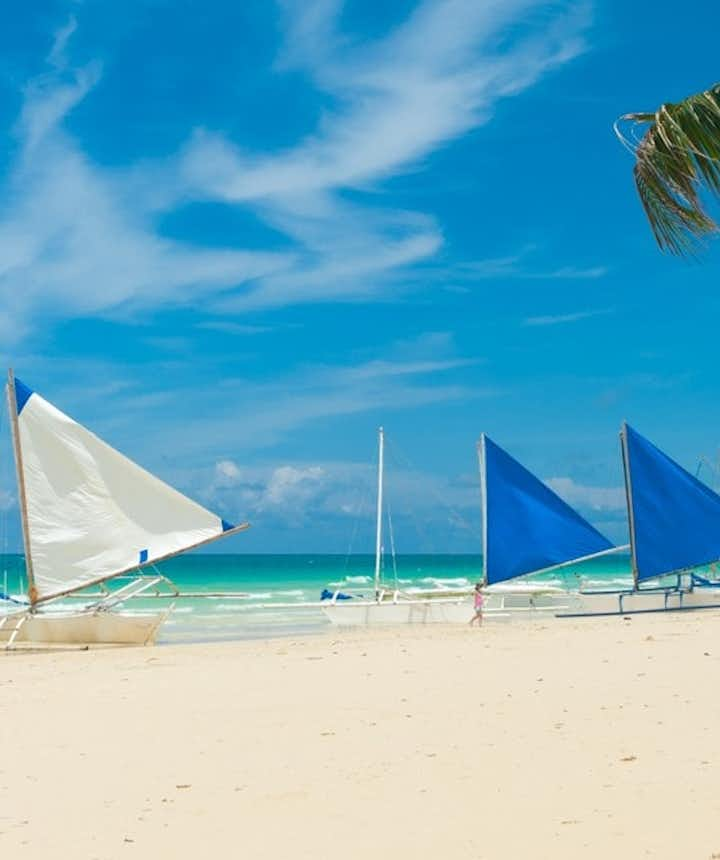
Where to Go in the Philippines 2024 | Best Tourist Spots

15. Calle Crisologo, Vigan
14. nacpan beach, el nido, 13. tubbataha reef, palawan, 12. mayon volcano, albay, bicol, 11. intramuros and fort santiago, manila, 10. taal volcano and lake, tagaytay, and batangas, 9. kawasan falls, cebu, 8. kayangan lake, coron, palawan, 7. rizal park, manila, 6. banaue rice terraces, ifugao.
- 5. Cebu’s Beaches and Diving Spots
4. Cloud 9, Siargao
3. puerto princesa underground river, palawan, 2. chocolate hills, bohol, 1. white beach, boracay.
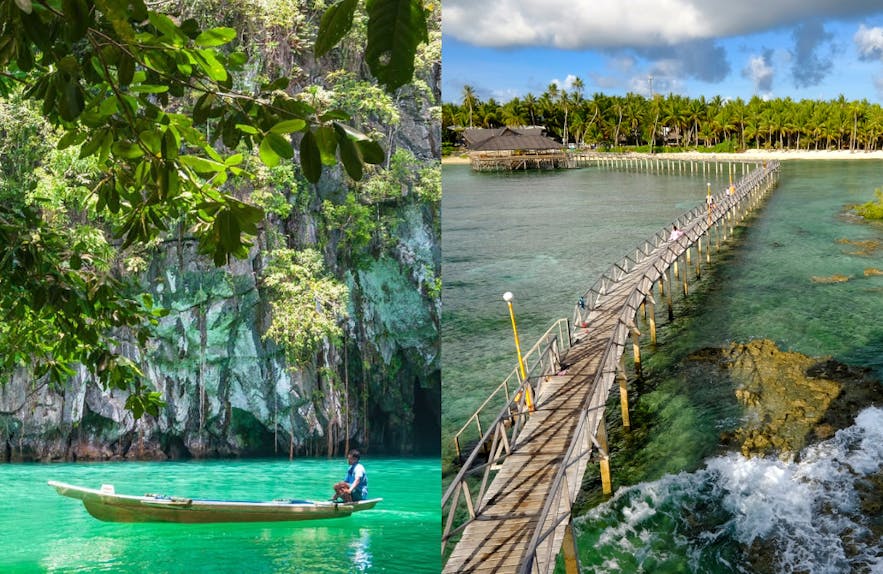
If tropical islands, beautiful landscapes, and unending adventures are on your bucket list for a holiday trip, then you have found a gem of a destination with the Philippines.
The Philippines has over 7,000 islands and is the perfect getaway to experience a mix of nature, culture, and fun. The geographical features of the Philippines ensure that there are natural attractions wherever you go. Whether you're headed to Luzon tourist spots , Visayas tourist spots , or Mindanao tourist spots , expect beautiful sights, unique attractions, friendly locals, and memorable experiences.
The best beaches in the Philippines , idyllic islands in turquoise waters, the world’s most perfect cone volcano , the second smallest primate, world-class surfing spots, and centuries-old Spanish fortresses—these are but some of the attractions awaiting you on your Philippine holiday.
- Explore a wide selection of island hopping in the Philippines and other Philippine tours for your trip
- Read our guide on getting around the Philippines
- See the requirements to rent a car in the Philippines
With all the destinations and experiences the Philippines offers, creating an itinerary may be daunting, especially for first-time visitors.
To help out, we have listed down the best places to visit in the Philippines.
See our popular Best Philippines Itinerary Tour Packages
5-day nature & islands adventure package to puerto princesa and el nido palawan, 4-day fascinating culture & nature tour package to cebu & bohol with accommodations & transfers, scenic 1-week beaches & nature vacation package to cebu, puerto princesa & el nido palawan.
Read on to find out which top tourist destinations in the Philippines you should not miss on this trip of a lifetime!
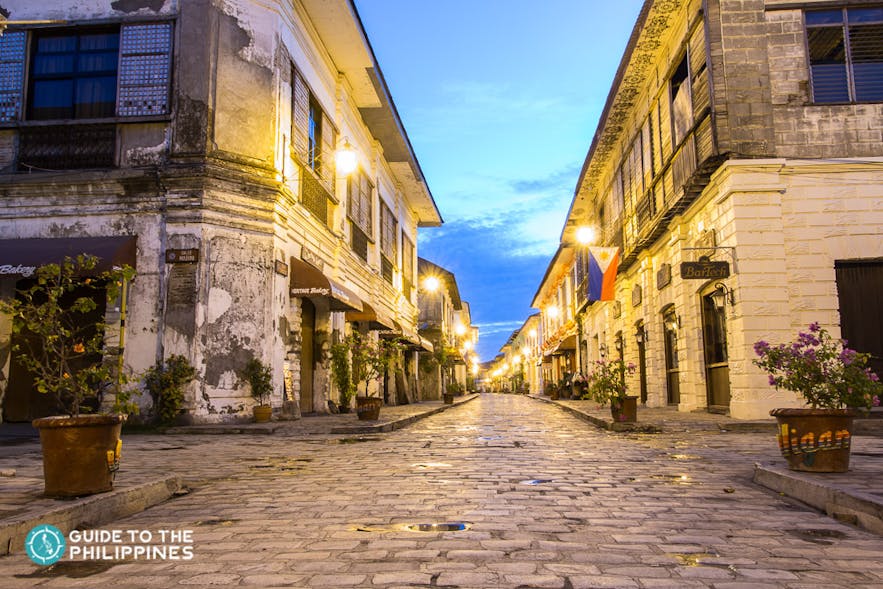
Travel back in time as you stroll along the streets of Calle Crisologo in Vigan as part of your Ilocos itinerary . This 16th-century town, a UNESCO World Heritage Site and a popular tourist spot in the Philippines, quietly boasts old-world charm and Spanish colonial architecture and is the top attraction in Vigan, Ilocos tours and one of the top historical landmarks in the Philippines .
The town famous for its Calle Crisologo tour has successfully managed to preserve the historic district where you can still find calesas (horse-drawn carriages). Sample the famous and delicious Ilocos empanada and walk along cobbled streets lined with souvenir shops selling pottery and Abel Iloko weaves. These are among the many things to see and do when in Vigan .
- Check out our list of the best hotels in Vigan and the top Vigan tours
The best time to visit for Calle Crisologo tours is during the first week of May when the town celebrates the Vigan Festival of the Arts, one of the festivals in the Philippines .
See our popular Vigan Tours and Activities
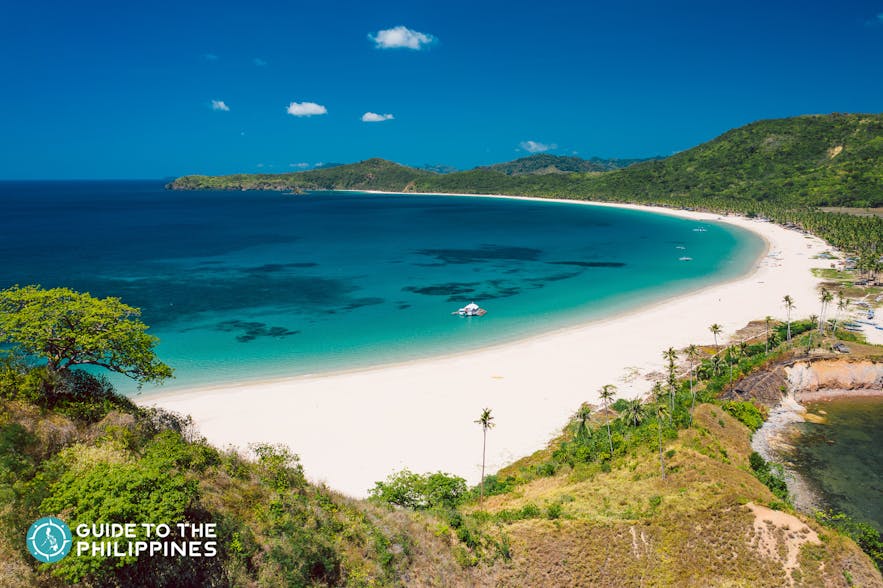
El Nido in Palawan is most famous for its paradise-like islands and lagoons, but a 45-minute ride from its main town takes you to another idyllic destination: Nacpan Beach.
Island hopping escapades in El Nido , including a visit to El Nido Big Lagoon and other top Palawan beaches should not be missed. But after a jam-packed day of visiting coves, white-sand beaches in El Nido , limestone cliffs, and other El Nido Palawan tourist spots , a trip to Nacpan Beach is highly recommended.
The main attraction is its 4-kilometer shoreline with golden sand and endless palm trees lining up, perfect for just bumming around. Calitang Beach sits on the other side, and the two beaches form what is now popularly known as the Twin Beaches of El Nido.
- Browse our list of the best hotels and resorts in El Nido and El Nido tour packages
Visitors are not advised to swim far away from shore in Nacpan as currents tend to become strong and rough with little warning.
If you're looking for budget-friendly accommodations in El Nido, check out our collection of El Nido hostels .
See our popular El Nido Tours and Activities
Private el nido lio airport transfer to/from any hotel in el nido town palawan, palawan el nido shared island hopping tour a with lunch & transfers | secret lagoon, shimizu island, private puerto princesa airport to or from el nido town transfer service.
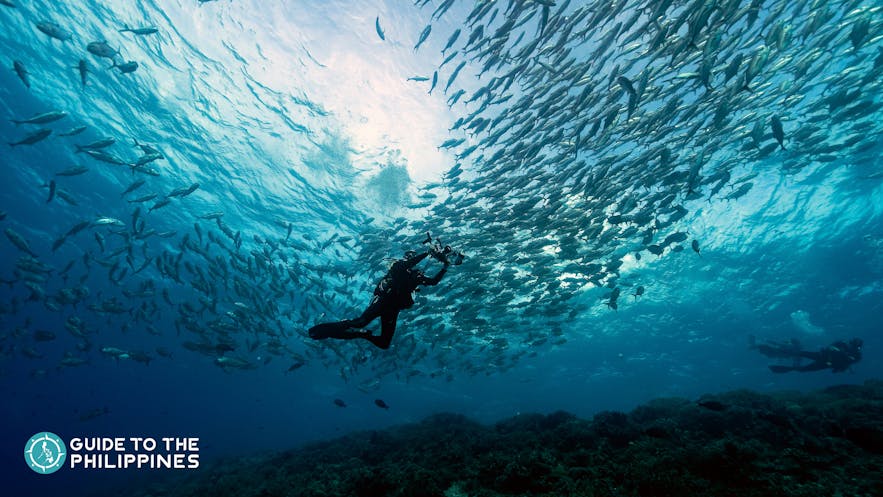
Tubbataha Reef is regarded as one of the top diving spots in the Philippines , and, perhaps, the world. Located at the heart of the Sulu Sea, it is considered a center of marine biodiversity and a haven not just for divers but marine conservationists as well. The only way to get to this marine sanctuary is through a liveaboard vessel from Puerto Princesa, Palawan.
The access may be challenging, but it is probably what is keeping the Tubbataha Reefs Natural Park teeming with some of the most unique underwater life in the world. It is listed as a UNESCO World Heritage Site and was nominated as part of the “New Seven Wonders of the Natural World.”
Among the species that call Tubbataha home are reef sharks, manta rays, Napoleon wrasses, and more than half of all the world's coral species. One of its islets is also a breeding site for birds and marine turtles.
Tubbataha reef diving requires months or even years of planning, but experiencing the staggering wealth underneath is more than worth it.
See our popular Philippine Scuba Diving Packages & Courses
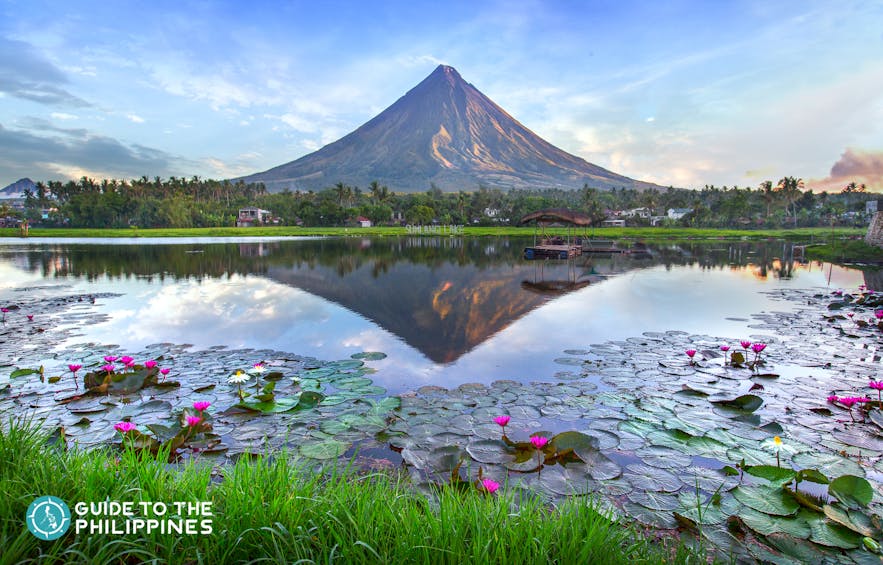
As soon as your flight lands at the airport in Bicol International Airport of Albay province, the world’s most perfect volcanic cone and the most active volcano in the Philippines greets you with its majesty. Mayon Volcano is one of the most beautiful places to visit in the Philippines and is a top attraction in any Bicol tour .
Its sheer beauty (the name Mayon comes from the Bicolano word ‘magayon,’ which means beautiful) hides a violent core, with past eruptions that flattened several towns.
- Read our article on travel insurance in the Philippines
One of the top natural landmarks in the Philippines and one of the most-visited tourist spots in Albay , it is already a wonderful experience seeing the volcano from afar. But if you are an adrenaline junkie, you can soak up all its beauty while gliding through a zipline in Lignon Hill or going on a Mayon Volcano tour via a Mayon ATV ride in Bicol. Visit the Cagsawa Ruins for another unique and historic viewing point of the Mayon Volcano.
As a bonus, from Legazpi, you can take a side trip to Donsol, where you can enjoy swimming with whale sharks in their natural habitat.
See our popular Mayon Volcano Tours
Mayon volcano legazpi atv ride black lava wall trail with guide & transfers, albay best views of mayon sightseeing & culture tour with snacks & transfers from legazpi, mayon volcano legazpi atv ride with 3-hour hike in farmer's trail with lunch, guide & transfers.

Take a stroll through history lane within the walled city of Intramuros in Manila , one of the top landmarks in the Philippines. This 64-hectare Spanish fortress was erected by Miguel Lopez de Legazpi and was destroyed by the end of World War II.
- Book Manila hotels or serviced apartments in Metro Manila for your trip
- Read our article on the best buffets in Manila
Another Intramuros attraction is Fort Santiago, a citadel that served as headquarters for armies and foreign powers. It is a historically significant site where the national hero, Dr. Jose Rizal, was imprisoned before his execution.
You can learn more about its history when you go on trips to Fort Santiago . You can also go on a guided bamboo bike tour or ride a horse-drawn carriage to explore Intramuros' historic walls.
Cap off your trip with a meal or drink at some of the finest Filipino restaurants inside Intramuros. One popular establishment is Barbara’s, where you can enjoy traditional Filipino cuisine buffet-style while being treated to a cultural show.
See our popular Intramuros Tours
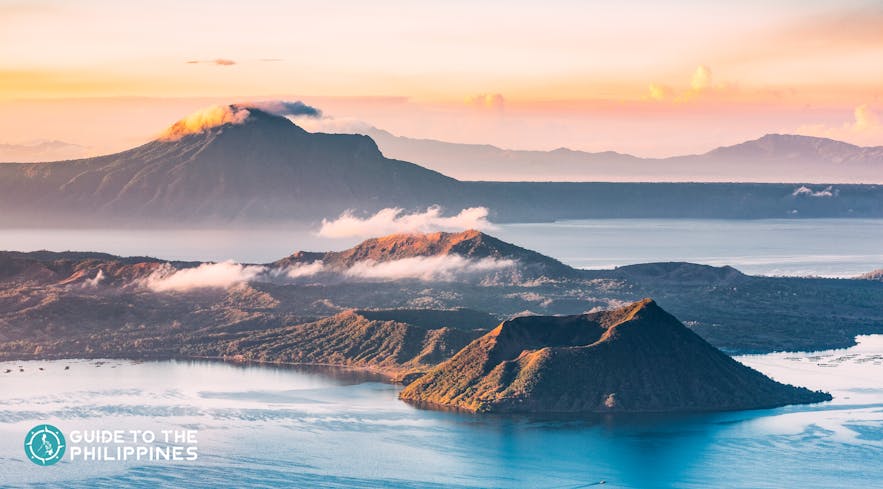
Locals and foreign visitors from Manila often take a quick escape from the megacity and make their way south to Tagaytay , a relaxing town famous for its cool weather, magnificent views, and many tourist spots . It's popular for being one of the best kid-friendly places near Manila .
The best Tagaytay hotels have a view that faces Taal Volcano, one of the world’s smallest active volcanoes. The volcano sits on an island within a lake within an island.
Since hikes to the crater are no longer allowed, head to Tagaytay restaurants , Tagaytay cafes , or Tagaytay hotels with a view of Taal. While in Tagaytay and Batangas, heat up your trip with a delectable bowl of Bulalo, a clear broth with beef shanks, bone marrow, and corn.
- Check out our list of the best Tagaytay hotels with Taal Volcano views
- Experience a Tagaytay Taal Lake boat ride
- Book a Tagaytay City tour from Manila
- Check out our list of the best farm resorts near Manila , best beach resorts near Manila , and the top affordable resorts near Manila
- Browse our list of resorts in Batangas
See our popular Tagaytay Tours and Activities
Tagaytay palace in the sky taal view & farms shared day tour with lunch & transfers from manila, tagaytay city sightseeing shared day tour with transfers from manila | picnic grove, twin lakes, coffee farm tour at amadeo cavite near manila & tagaytay with live brewing & tasting sampler.
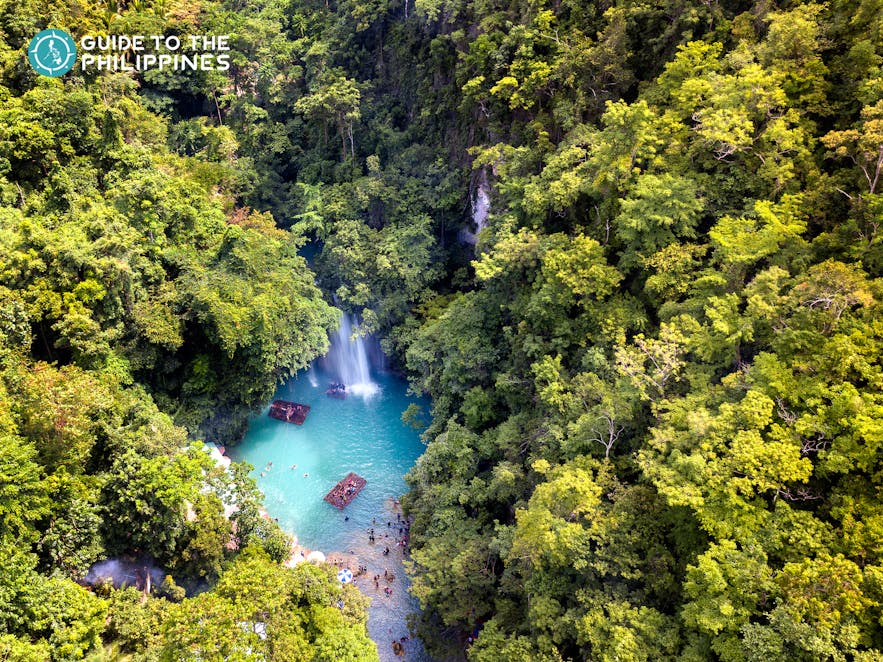
If you like jumping into or swimming in cool cascading waters, Kawasan Falls in Cebu hits the sweet spot. It is a multi-layered waterfall in the town of Badian and is best known for its turquoise waters.
With a height of 40 meters, the first cascade is where most visitors stay, swim, and enjoy a natural water massage on board a bamboo raft. A 10-minute trek takes you up to the quieter second cascade.
- Find and book the best Cebu hotels
- Check out other top Cebu tours you can try
Kawasan Falls is also the endpoint of the popular adventure activity, Kawasan Falls canyoneering . This tour starts in Kanlaob River in the town of Alegria. You'll make your way to Kawasan, swimming along streams, rappelling through natural rock walls, and finally jumping off mini-waterfalls.
Nearby is the town of Moalboal , famous for its sardine run experience , where you swim with millions of sardines just offshore.
See our popular Kawasan Falls Tours
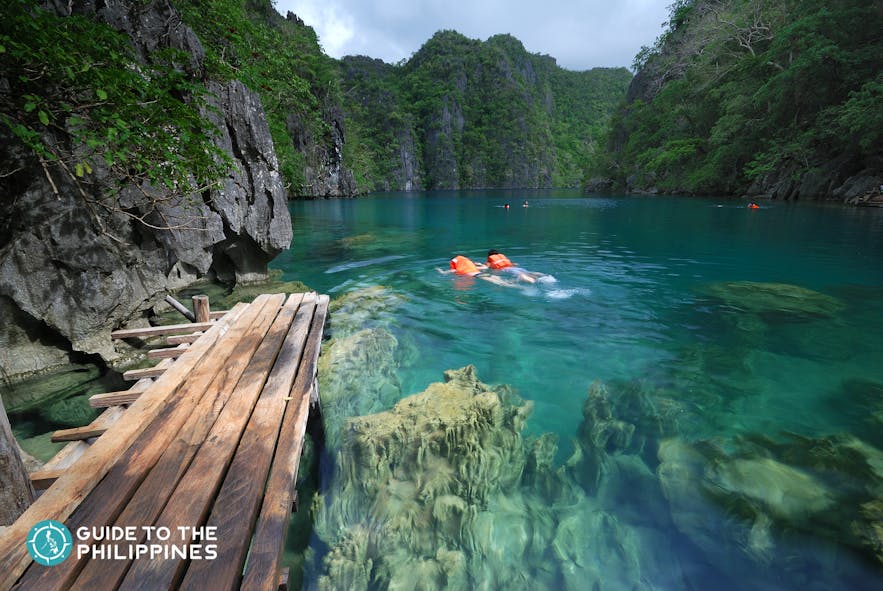
Undoubtedly one of the most photographed and iconic destinations in the Philippines is Kayangan Lake in Coron , Palawan. Going on a Kayangan Lake Coron tour will allow you to see its lagoon that is a dreamy mix of blues and greens glistening on a bright, sunny day. It should definitely be on your Coron Palawan itinerary .
- Check out our Coron tour packages and other things to see and do in Coron
- Read our guide on diving in Coron
- Browse our list of the best hotels and resorts in Coron
Kayangan Lake tours will take you to the jagged limestone cliffs and islets surrounding the lake. All these add up to a dramatic landscape, best seen from a 10-minute climb up a hill. Curiously, this view is not of the actual Kayangan Lake but the area where the tour boats park, but it is still breathtaking nonetheless.
As spectacular as the views are above ground, the real gem is hidden underneath the lake’s glass-like waters. Rock formations and schools of fish abound, making the area a favorite snorkeling and free-diving spot for visitors and one of the most popular Coron Palawan tourist spots .
The island destination is also famous for island-hopping in Coron and C oron wreck diving , among many other must-try Coron tours . It's also a romantic destination and is a popular location for vacation packages for couples .
See our popular Coron Tours and Activities
Coron island hopping tour to kayangan lake & barracuda lake | palawan super ultimate package, private busuanga airport to or from any hotel in coron town van transfer service, shared coron busuanga airport to or from coron palawan town proper transfer service.

Many travelers skip Manila and make their way to the Philippines' other islands, but a day or two in the country’s capital to go on Manila tours is still highly recommended, especially for those looking for the best places in the Philippines for a family vacation .
- Check out our list of the best private resorts near Manila
This 60-hectare urban park is where you will see the Rizal Monument, marking the execution site of the country’s national hero, Dr. Jose Rizal. Manila Bay’s breeze keeps the Philippine flag waving from a 46-meter flagpole fronting his monument.
The park also features manicured gardens, ponds, and a wide water fountain that lights up and dances to Filipino tunes at sunset. The park area is also home to a network of National Museums that you can visit .
- Cebu to Manila flights
- Davao to Manila flights
- Tacloban to Manila flights
- Iloilo to Manila flights
- Bohol to Manila flights
- Bacolod to Manila flights
- Legazpi to Manila flights
See our popular Manila Tours & Activities
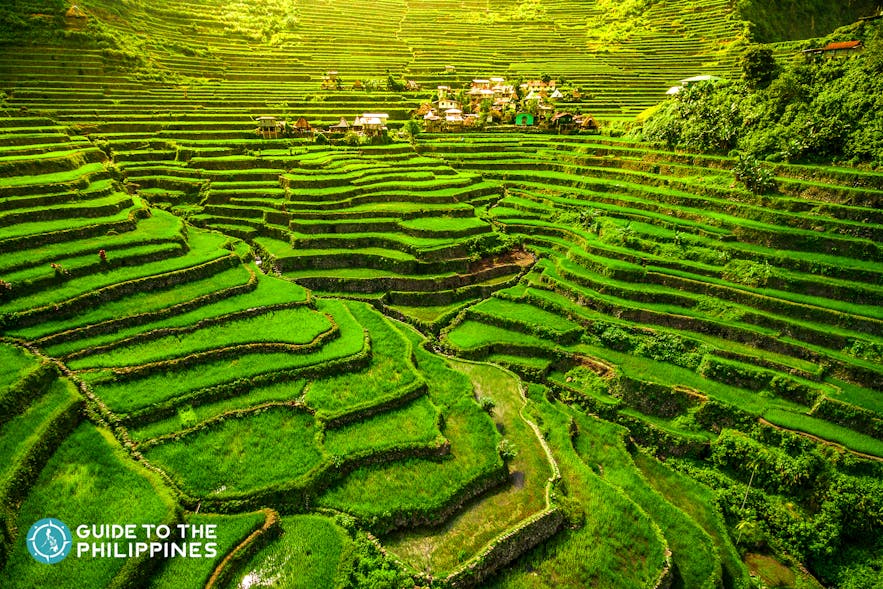
Hand-chiseled some 2,000 years ago, the Banaue Rice Terraces in Banaue of Ifugao, North Luzon , is a remarkable destination and is truly one of the most beautiful places in the Philippines and regarded as one of the Philippines' iconic landmarks.
Sit in a colorful jeepney as it cruises along winding roads in Banaue, and views of dramatic mud-walled rice terraces leave you in awe.
The Ifugao people were highly skilled in carving both wood and mountainsides. The Banaue Rice Terraces is listed as a UNESCO World Heritage Site . It offers spectacular views of emerald hues during the rice-growing seasons of April-May and October-November.
- Check out our list of things to do in Baguio and our Baguio tour packages
- See Baguio hotels that you can book for your trip
Banaue and its many natural attractions may pack a lot of tourists so you can make your way further to quieter Batad Rice Terraces and take a quick dip at its mighty Tappiya waterfalls. You can also explore nearby Baguio City or pick fresh strawberries in La Trinidad, Benguet .

See our popular North Luzon Tour Packages
5. cebu’s beaches and diving spots.

Cebu has been declared part of UNESCO’s Network of Creative Cities, but its main treasure lies deep down. The island draws over two million foreign travelers every year, who are greeted by rich waters teeming with abundant marine life. There are also many Cebu hotels that you can book for your trip.
Diving in Cebu is also a great experience as the island boasts many beautiful Cebu diving spots , featuring underwater caves, shallow shipwrecks, and marine sanctuaries.
- Browse our list of the best beachfront resorts in Cebu and the top Cebu tourist spots
- Check out our Cebu tour packages with airfare and our Mactan Island tours
- Explore other islands in the Visayas region. Check out our Bacolod-Iloilo-Guimaras itinerary
- See other Cebu tours you can add to your itinerary
Cebu island hopping tours are popular, thanks to the beaches of Cebu , Mactan , Camotes, and Bantayan Island . Moalboal island hopping tours are also available for those who want to explore more of Cebu. Off the northernmost tip of Cebu, tiny Malapascua Island packs many surprises, including diving with thresher sharks. Apart from diving in Malapascua , you can also go on a sardine run tour . For a hassle-free experience, book Malapascua diving packages .
See our popular Cebu Diving Courses and Packages
Fun 5-day cebu discover scuba diving package at club serena resort with airfare from manila, cebu bantayan island 3-hour refresher dive course with divemaster assistance, gear & boat transfers, cebu bantayan island 3-hour discover scuba diving with divemaster assistance, gear & boat transfers.
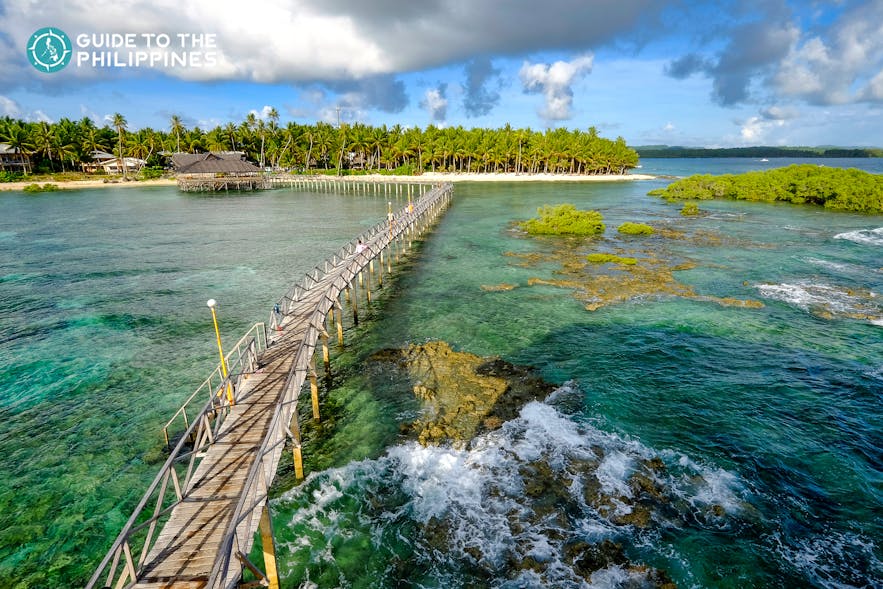
Siargao ’s rise as a top tourist destination in the Philippines is nothing short of meteoric. Once a sleepy island in Surigao del Norte, it has become one of the favorite destinations and playgrounds for travelers, and it is primarily because of one activity: surfing.
It is now known as the Philippines' surfing capital , and some even regard it as the surfing mecca of Asia.
- See our list of Siargao private tours
- Read our article on the best resorts in Siargao
- Check out other rainy season activities in the Philippines
- Find other Siargao experiences and Siargao tour packages
Surfers are drawn to Cloud 9, the most famous surfing spot in the entire country and a must in any visitor's Siargao itinerary . From November until April, all is well with Cloud 9’s thick tubes, making it a perfect place to get stoked (note: it is recommended for advanced surfers only).
But you do not need to go surfing in Siargao to enjoy this island destination as there are also other Siargao tourist spots to visit, like rock pools, waterfalls, and the nearby Sohoton Lagoon, where you can swim with thousands of non-sting jellyfish. You can go island hopping in Siargao to visit some of its natural attractions, including Sugba Lagoon , Naked Island , Daku Island , and Guyam Island .
See our popular Siargao Tours and Activities
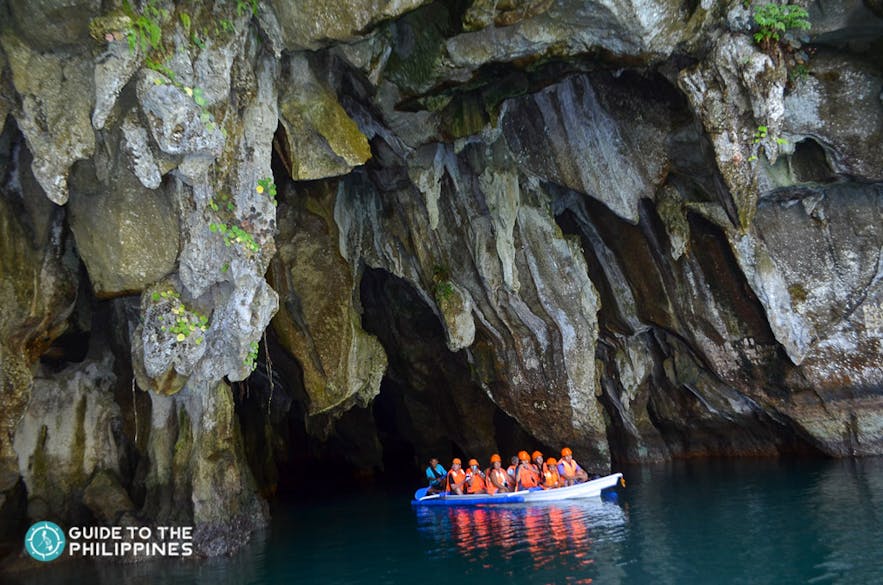
The gateway to the Philippines’ Last Frontier, Palawan , is its capital Puerto Princesa . It is here that you can find the world’s longest navigable underground river and a UNESCO World Heritage Site , the Puerto Princesa Underground River or the Puerto Princesa Subterranean River National Park. To explore this world-famous attraction and one of the best Philippine caves , book a Puerto Princesa underground river tour.
Paddleboats of the Puerto Princesa underground river tours cruise through scenic limestone cliffs as they make their way through the accessible area (1.5 km) of the underground river cave.
- Find the best Puerto Princesa hotels for your trip
- See other things to do in Puerto Princesa
- Check out other Puerto Princesa activities that you can do
- Read our article on Port Barton resorts
The park is also teeming with wildlife like crab-eating monkeys, monitor lizards, and bats. Island hopping escapades in Honda Bay and a visit to the Crocodile Farm are also highly recommended among the many things to do in Puerto Princesa .
See our popular Puerto Princesa Underground River Tours
Shared puerto princesa underground river tour in palawan with lunch & hotel transfers, shared palawan puerto princesa underground river tour with lunch & transfers, private puerto princesa palawan underground river tour & buenavista view deck with lunch.
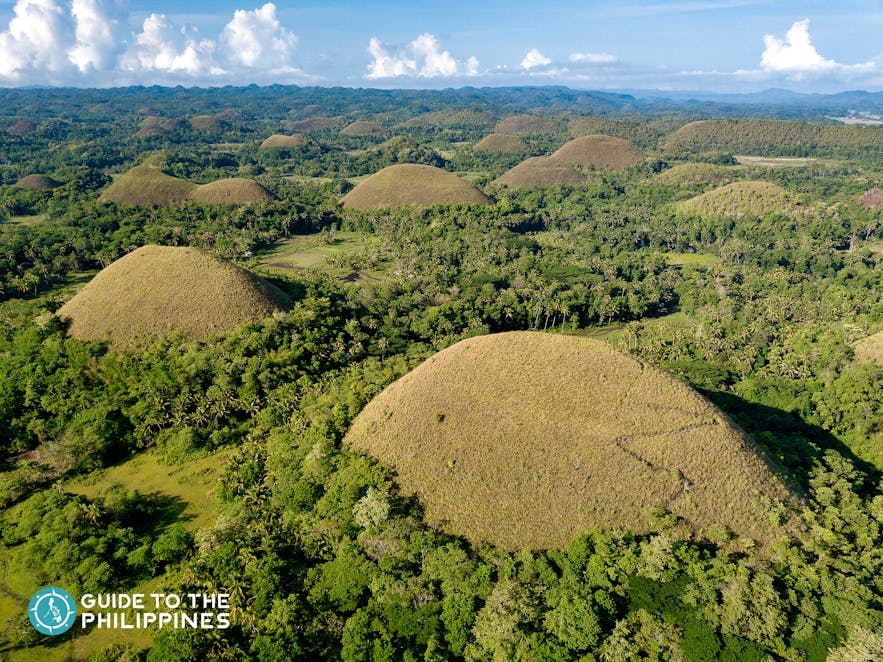
Included in the UNESCO World Heritage Natural Monuments list, the Chocolate Hills of Bohol are a geomorphic wonder and truly a sight to behold. It is one of the amazing tourist spots in the Philippines to offer a unique landscape, with its 1,268 cone-shaped hills that turn chocolatey brown during the dry season, hence its name.
The limestone hills in this iconic Philippine landmark vary in size but almost look similar in shape and range from 30 to 120 meters in height. It’s a must-add to any itinerary for Bohol trips .
Make your way to the town of Carmen, where the Chocolate Hills Main Viewpoint can be found. You can also see the hills via Chocolate Hills tours or Bohol countryside tours . Aside from the Chocolate Hills, there is also a treasure chest of natural wonders and other fun things to do in Bohol , including a relaxing Loboc river cruise and exploring Balicasag Island, a popular Bohol diving spot . You can also go on Panglao Island tours , and Philippine Tarsier Sanctuary visits , where you can see the world’s second-smallest primate. At night you can visit Abatan River and see some of the rarest fireflies in the Philippines .
- Read our article on the best resorts in Bohol , including Bohol beachfront resorts
- Check out our Bohol tour packages
- Book Panglao resorts in Bohol for your trip
- See our Cebu-Bohol tour packages
- Secure your Philippines ferry ticket booking
See our popular Chocolate Hills Tours
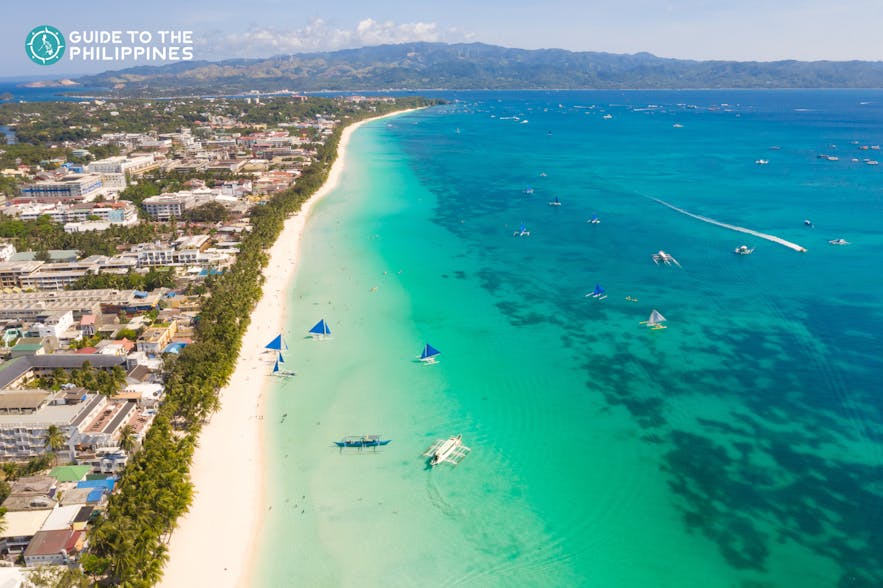
Long hailed as one of the best white sand beaches in the Philippines and the entire world, Boracay ’s claim to fame is its 4-kilometer stretch of pure white, powdery sand called White Beach .
Cliche as it sounds, White Beach is truly postcard-perfect, with tall coconut trees lining it and crystal-clear calm waters rounding up its unmatched beauty, making it the top attraction in Boracay tours and the best tourist destination in the Philippines.
Those who want to indulge during their holiday can also do so, as Boracay is home to some of the best 5-star hotels in the Philippines , as well as several honeymoon resorts and some of the best beach resorts in the Philippines . You can also have a workation here
Its prominence in global publications has drawn in an influx of tourists over the last decades, and there is no shortage of hotels , restaurants , and Boracay bars on the entire island.
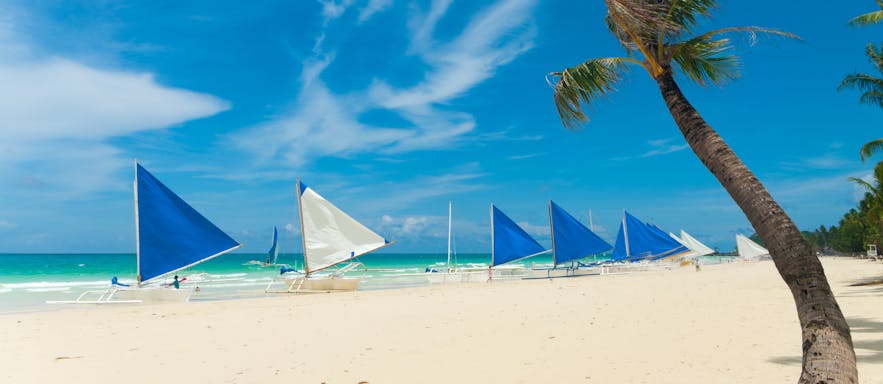
- Check out our lists of the best beachfront resorts in Boracay Island and hotels in Boracay for family
- Browse our Boracay tour packages and Malay hotels
- Read our article on the best golf courses in the Philippines , including one in Boracay
There are plenty of things to do in Boracay , and you can add other spots to your Boracay itinerary , including Puka Beach and Diniwid Beach, both of which offer a quiet respite and some of the best relaxing vibes during the daytime. Other things you can do in Boracay include White Beach tours and activities like Boracay banana boat riding, Boracay jetskiing , paddleboarding, paraw sailing in Boracay, snorkeling in Boracay, helmet diving in Boracay , and parasailing in Boracay .
See our popular Boracay Tours and Activities
Boracay island hopping shared tour with lunch & snorkeling package, boracay island hopping package private tour with lunch, snorkeling gear & kawa hot bath, boracay helmet diving aquanaut activity with underwater photos & videos.
Plan Your Ultimate Escape to the Philippines
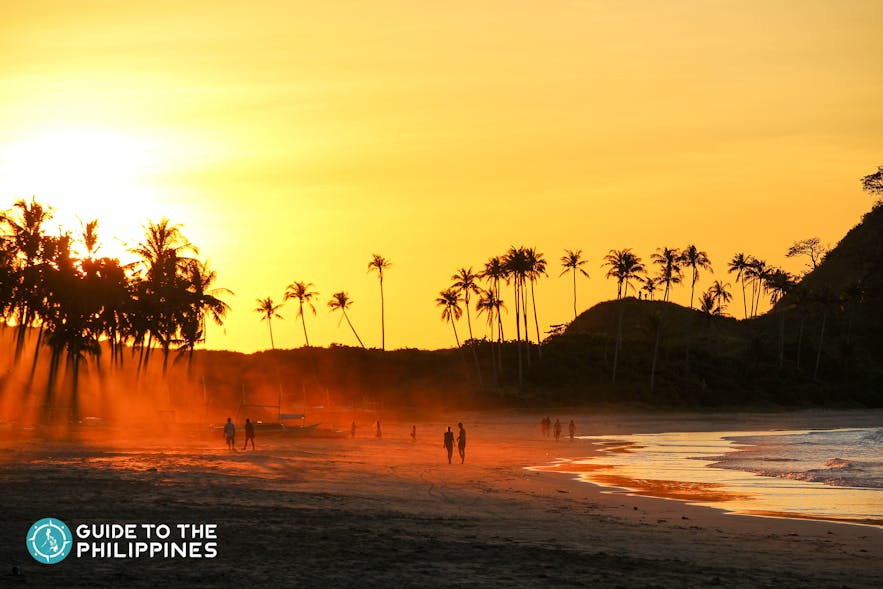
It is impossible to visit all the best tourist spots in the Philippines in one go unless you have all the time in the world. But carefully planning out your Philippines itinerary will surely take you to some of the most unforgettable landscapes and fun-filled adventures you will ever see and experience. If you want a pampered experience, book a stay at one of the luxury resorts in the Philippines or the best wellness resorts in the Philippines , or try glamping in the Philippines .
- Cheap flights to Manila
- Dubai to Manila flights
- Singapore to Manila flights
- LAX to Manila flights
- Read our guide on airports in the Philippines
Aside from its spectacular views, the Philippines is also home to one of the most hospitable, warm, and free-spirited people you will ever meet. Before you finalize your online trip booking or your Philippines holiday packages , read more of our Philippines travel guides to help you plan the ultimate escape and learn the reasons why you should visit the Philippines .
See our popular Top Tours in the Philippines
Popular articles.

Best Palawan Guide: Top Tours, Where to Stay, How to Get Around
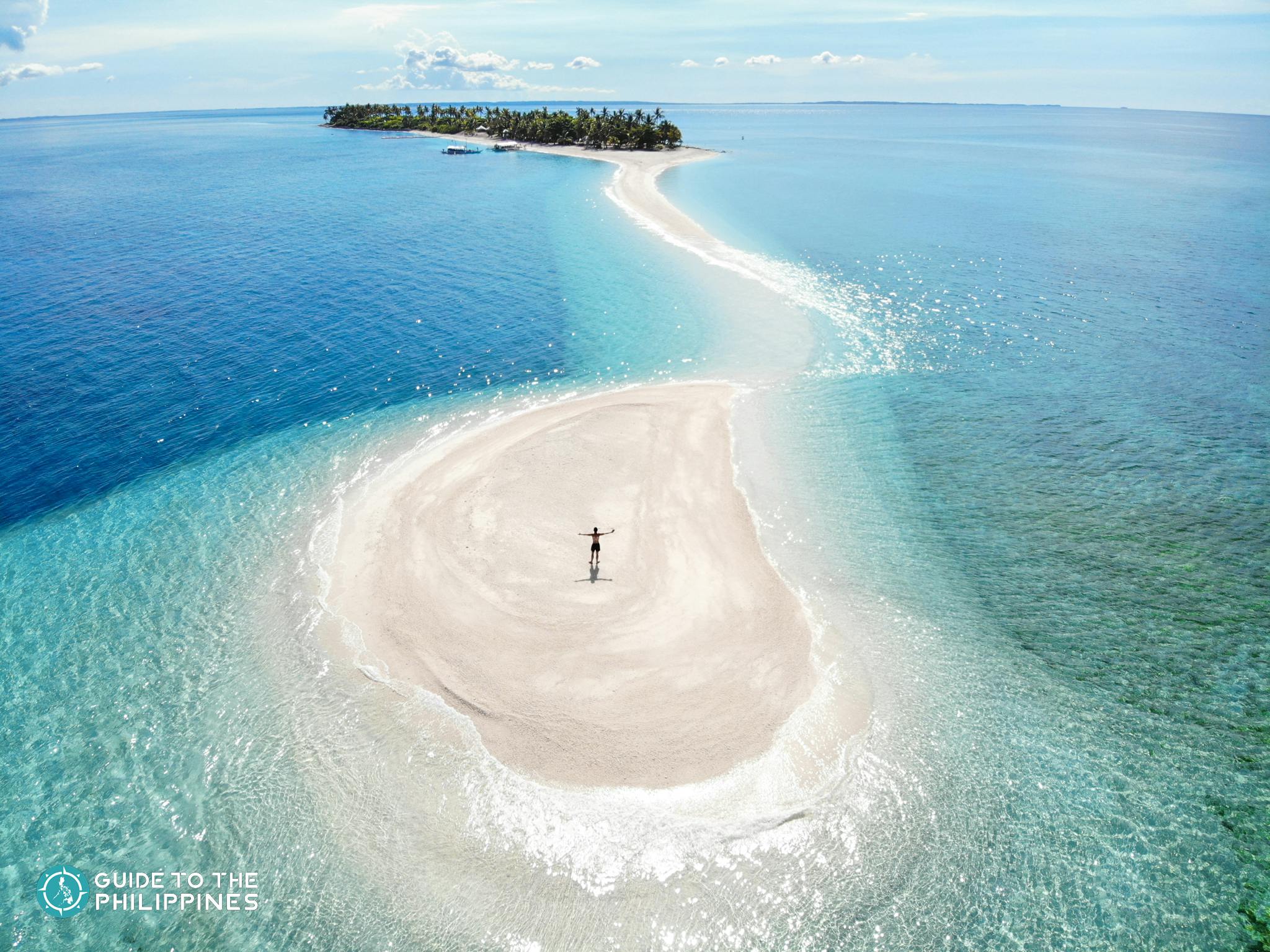
20 Most Beautiful Sandbars in the Philippines: White Sand, Longest, Vanishing
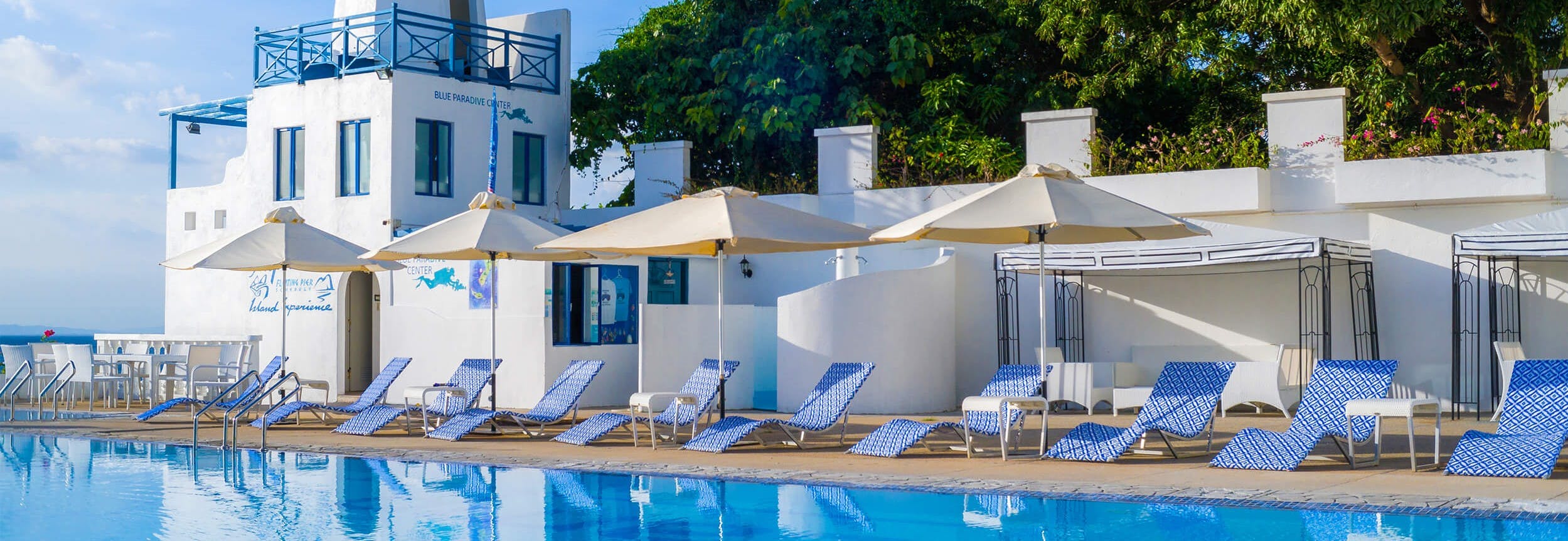
11 Best Santorini-Like Resorts in the Philippines: Near Manila, Cebu, Palawan, Vigan
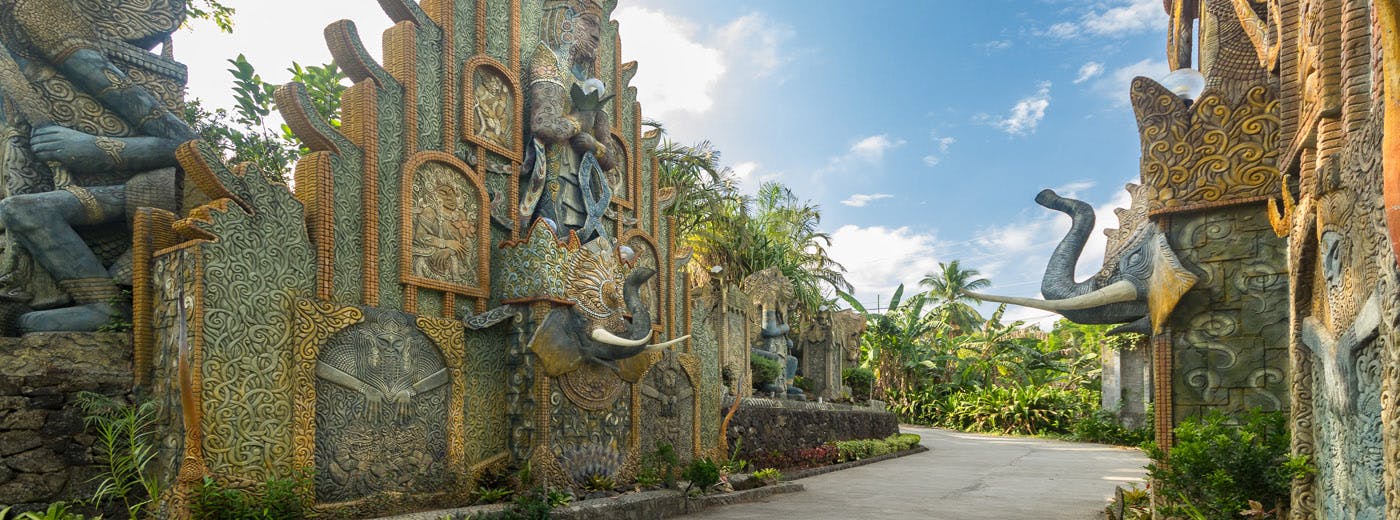
15 Best Tropical Bali-Like Resorts in the Philippines: Near Manila, Siargao, Cebu, Bohol
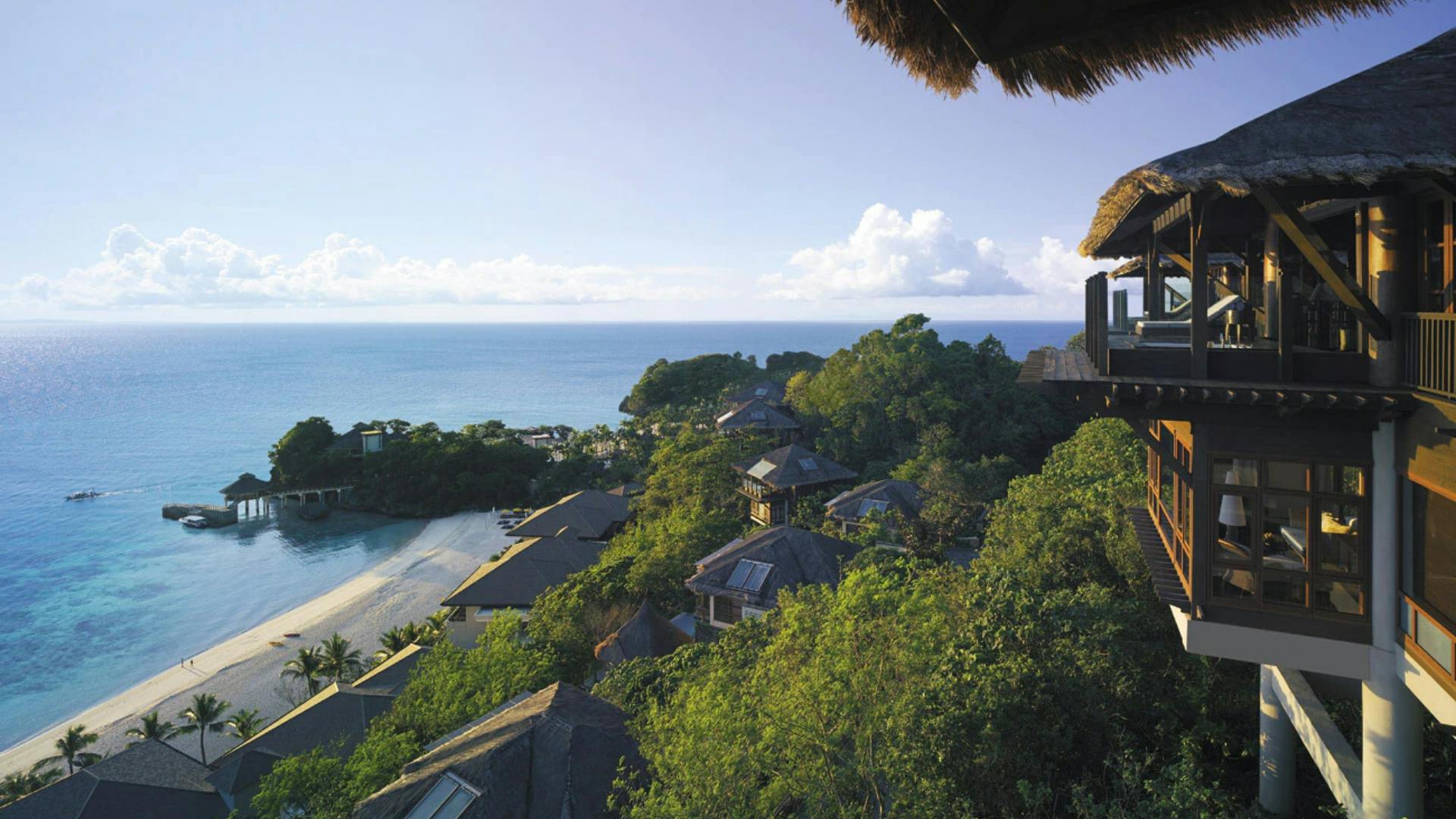
10 Best Treehouse Resorts in the Philippines for a Scenic Getaway at Mountains, Beaches & Rivers
Other interesting articles.

Must-Try Tasting Menu in Manila & Nearby: Degustation Restaurants
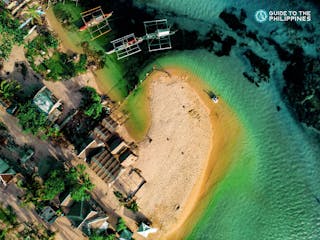
Top Eastern Samar & Borongan City Tourist Spots: Surfing, Diving, Beaches
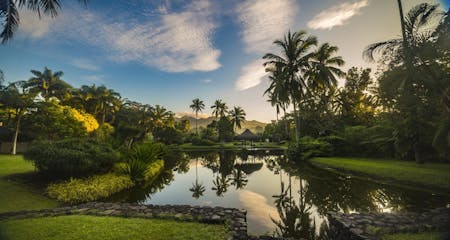
The Farm at San Benito Batangas Resort: Wellness Treatments, Activities, Where to Stay

Download the Philippines’ biggest travel marketplace to your phone to manage your entire trip in one place
Scan this QR code with your phone camera and press the link that appears to add the Philippines’ biggest travel marketplace into your pocket. Enter your phone number or email address to receive an SMS or email with the download link.
Top things to do in the Philippines
Discover all the adventures you can experience in the Philippines
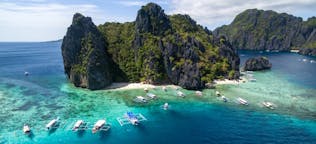
Philippines Tour Packages
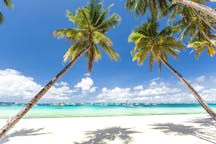
Boracay Island
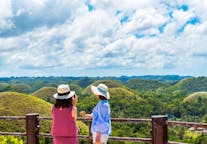
Bohol Island
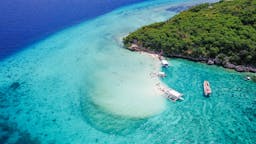
Cebu Island
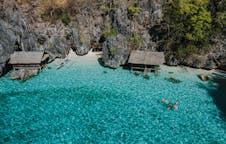
Coron Palawan
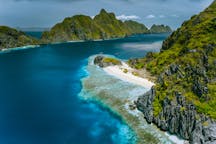
El Nido Palawan
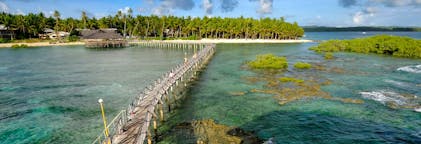
Siargao Island
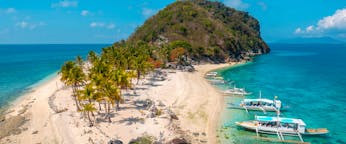
Iloilo City and Nearby

Tourism in the Philippines
Development of the tourism sector in the philippines from 1995 to 2021.

Revenues from tourism

All data for the Philippines in detail

The colorful tourism slogans: More Fun, Wow, and Love the Philippines
Before “Love the Philippines,” there were “WOW Philippines,” “It’s More Fun in the Philippines,” Pilipinas Kay Ganda,” and many more colorful slogans that all aimed to attract more tourists while projecting in just a few words what the country offers to the traveler.
Tourism slogans are used to represent what a country is all about – its energy, culture, and natural wonders. From white sand beaches and pristine dive spots, to rice terraces and cultural heritage sights, the country continues to attract tourists through the use of slogans.
Love the Philippines
In June, 2023, the Department of Tourism (DOT) unveiled a new tourism slogan – “Love the Philippines.”

Love the Philippines (Photo from DOT Facebook page)
“’Love the Philippines’ is a recognition of our natural assets, our long and storied history, our rich culture and diversity,” said Tourism Secretary Christina Frasco during DOT’s 50th anniversary celebration at Manila Hotel.
It’s More Fun in the Philippines
Before “Love the Philippines” was “It’s More Fun in the Philippines” campaign which was launched in 2012. That was one of the country’s most popular and recognizable slogans as it branded the country as a perfect destination for tourists looking for the best beaches and adventures, according to DOT.

The slogan’s directness enabled it to be used as the country’s primary slogan for over a decade, with multiple spin-offs through the years, such as “More Fun Awaits” in 2018, and “Experience the Philippines” in 2016 that highlights Filipino family values.
Gathering a few international awards, the slogan was used until the first half of 2023.
The “Pilipinas Kay Ganda (Philippines, So Beautiful)” campaign from 2010 was short-lived as the campaign’s logo, colors, and even the font design was widely criticized for being similar to the style of tourism campaign of Poland, according to news reports.
WOW Philippines
Launched in 2002, the “WOW Philippines” campaign and its sub-tagline “More Than the Usual” was regarded as a highly successful attempt to rebrand the country as a haven of white-sand beaches and unique attractions contrary to conflicts and political instability the country was facing at the time.
The slogan was used until 2010.
The word “WOW” from the slogan was also utilized to refer to what the Philippines has to offer, from “Wealth of Wonders,” “Wild Over Water,” “Wacko Over Wildlife,” and “Warm Over Winter,” among many others.
Its logo used the colors red and blue with unique elements reflecting Philippine culture, such as a festival mask, jeepney, coconut tree, diver, and a boat.
Spin-offs from the campaign aimed to boost domestic travel were produced such as the “Pilipinas, Tara Na!” that even had a music video featuring popular Filipino artists and musicians.
Other slogans
The country’s tourism slogans each carried a distinct charm. Here’s a few more: “Fiesta Island Philippines,” “Philippines: Where Asia Wears A Smile,” “Rediscovery Philippines,” and “Consider the Philippines.”
Slogans aim to capture attention and curiosity of people. ( Pancho Parian )

Agritourism in the Philippines: Forging New Heights as an Agritourism Destination
by Leslie | Oct 14, 2020 | Blog | 1 comment
Given the country’s fertile soil, tropical climate, abundant natural resources, rich farming culture and genuine hospitality of Filipinos, the Philippines is very well-positioned for agritourism.
Agriculture has always been part of Filipino culture. This is who we are – a country with abundant natural resources, inhabited by warm hospitable people who know how to till the land. Acknowledging its importance and proudly sharing it with the world only intensifies our great love for the Philippines.

A local farmer planting rice at Cadapdapan Rice Terraces in Anda, Bohol
Philippines: One of the Top 8 Agritourism Destinations in the World
For a country that excels in both industries such as agriculture and tourism, there is no doubt of our potential to become an “agritourism destination”. In fact, the Philippines was named as one of the Top 8 Agritourism Destinations in the World in 2018. Also joining the list are countries such as Taiwan, Hawaii, Tuscany, Grenada, Mallorca, California, and Brazil.
What makes the Philippines stand out are factors such as multiple agritourism sites, huge plantations scattered across its vast archipelago, exotic tropical fruits and our English-speaking population.

Tropical fruits that are abundantly grown in the Philippines | Source: Shutterstock | Photo by: Anna Pustinnykova| Shutterstock ID: 586666994
Being part of the Top 8 list helps propel our initiatives to escalate this niche. Our inclination to agritourism can help create better ways to ensure that the tourism industry is made more sustainable.
DOT’s Direction: Agritourism in the Philippines
The Department of Tourism (DOT) along with the Department of Agriculture (DA) are driven to bring agritourism in the Philippines into new heights.
It might be interesting to note that, our current DOT Secretary Puyat also served as the undersecretary of the Department of Agriculture (DA) for 12 years – this creates a strong foundation making her the rightful person to maneuver us towards agritourism. She said, “Our tourism industry in the Philippines has been promoting the inclusive development of the countryside, supporting our farmers, Indigenous Peoples, women, and other marginalized groups through sustainable programs that uplift and empower.” | Source: Department of Tourism
Agritourism: Agriculture Tourism Defined
Agritourism came from the two words “ agriculture ” and “ tourism ”.
Agri-tourism (also referred to as “farm tourism” ), as defined by DOT, is a form of tourism activity conducted in a rural farm area which may include tending to farm animals, planting, harvesting and processing of farm products. It covers attractions, activities, services and amenities as well as other resources of the area to promote an appreciation of the local culture, heritage and traditions through personal contact with the local people. | Source: Bureau of Agricultural Research
Agritourism, therefore, puts emphasis on showcasing nature and the good harvest. It usually takes place in rural or less developed areas where agriculture is the main source of income of the local community. It allows the local community to share and invite people to come, see, participate and appreciate the agricultural landscape and cultural heritage of the place.

The endless land of pineapple plantation in Bukidnon

Agri-Tourism is the best option for farmers to prosper now a days. So how our Govt. Can help us develop this big opportunity. We have a farm suited for the idea.
Philippines’ Leading Tour Operator Nominee

Recent Posts
- Experience the Breathtaking Beauty of Alicia Panoramic View in Bohol
- Journey to Sustainability: Kapwa Travel’s Path to Becoming a Travelife Partner
- Savoring Cebu: Unveiling the Top 10 Restaurants and Bars for Epicurean Adventures
- Palawan’s Paradise: A Tale of Beauty from Coron to El Nido
- A Beginner’s Journey into the Underwater World: My First Scuba Diving Experience in the Philippines
Recent Comments
- bong on Whale Shark Philippines | Why Choose Donsol Over Oslob
- whoiscall on Devie’s Top 10 Hidden Gems in the Philippines
- Jm on Christmas in the Philippines: 10 Unique Filipino Christmas Traditions
- Anik sarma on Rice Cooker Recipes: Easy Quarantine Cooking
- Ian on Rice Cooker Recipes: Easy Quarantine Cooking

What is Department of Tourism? A Comprehensive Overview

- Share on Facebook
- Share on LinkedIn
- Share on Pinterest
- Share on WhatsApp
The Department of Tourism (DOT) functions as the executive department of the Philippine government, with a critical responsibility for regulating the nation’s tourism industry.
Its primary objective is to promote the Philippines as an appealing and captivating tourist destination on the global stage.
Serving as the primary planning, implementing, and regulatory government agency , the Department of Tourism (DOT) is specifically entrusted with the development and promotion of the Philippine tourism industry, encompassing both domestic and international initiatives.
DOT Job Opportunities:
Discover rewarding career opportunities within the Department of Tourism. Explore diverse roles that contribute to the growth and promotion of the Philippine tourism industry.
Check out the current job openings listed below or explore more opportunities across various government agencies.
Note: Click on the job title to access detailed job descriptions and find instructions on how to apply. Your journey to a fulfilling career in tourism awaits!
Department of Tourism History:

In 1950, the private initiative known as the Philippine Tourist & Travel Association was established with the aim of promoting the Philippines as a key travel destination.
In 1956, the Board of Travel and Tourist Industry was formed by Congress. Following the Integrated Reorganization Plan in 1972, enacted through Presidential Decree No. 2, the Department of Trade and Tourism was founded, reorganizing the existing Department of Commerce and Industry.
As part of this reorganization, the Philippine Tourism Commission was established under the unified Trade and Tourism Department to oversee the development of the tourism industry for economic benefit.
In 1973, President Ferdinand Marcos elevated the status of tourism by creating a separate cabinet-level Department of Tourism (DOT), dividing it from the Department of Trade and Tourism.
Within the newly formed Department of Tourism, the Philippine Tourism Authority (PTA) and the Philippine Convention Bureau (PCB) were established.
The Department of Tourism was later renamed the Ministry of Tourism in line with the government’s shift to a new form of governance according to the 1973 Constitution.
In 1986, under Executive Order Nos. 120 and 120-A signed by President Corazon Aquino, the Department of Tourism underwent reorganization.
The Convention Bureau was rebranded as the Philippine Convention and Visitors Corporation, and the Intramuros Administration, previously under the defunct Ministry of Human Settlements, was attached.
The culmination of the country’s centennial celebration of independence from the Spanish Empire in 1898 saw the Department of Tourism playing a significant role in 1998.
Initiating a successful tourism promotion project, WOW Philippines, in 2003 under Secretary Richard J. Gordon marked a milestone for the Department of Tourism.
The most recent advancements in the Philippine tourism industry occurred with the passage of Republic Act No. 9593, known as the ‘Tourism Act of 2009.
“The Department of Tourism (DOT) shall be the primary government agency charged with the responsibility to encourage, promote, and develop tourism as a major socio-economic activity to generate foreign currency and employment and to spread the benefits of tourism to both the private and public sector.”
“To develop a globally competitive, environmentally sustainable and socially responsible tourism industry that promotes inclusive growth through employment generation and equitable distribution of income thereby contributing to building a foundation for a high trusted society.”
Organization Structure of the Department of Tourism (DOT)
The Department of Tourism (DOT) plays a pivotal role in shaping and promoting the Philippine tourism landscape.
The department is headed by the Secretary of Tourism (Philippines), overseeing a hierarchical structure with key leadership positions.
The leadership team includes four undersecretaries and assistant secretaries, each entrusted with specific portfolios.
Undersecretaries:
1. Undersecretary for Administration and Finance
2. Undersecretary for Public Affairs, Communications & Special Projects
3. Undersecretary for Tourism Development Planning
4. Undersecretary for Tourism Promotions
5. Undersecretary for Tourism Regulation Coordination & Resource Generations
Assistant Secretaries:
1. Assistant Secretary for Administration and Special Concerns
2. Assistant Secretary for Public Affairs, Communications and Special Projects
3. Assistant Secretary for Product and Market Development
4. Assistant Secretary for Tourism Regulation Coordination & Resource Generation for Metro Manila Cluster
5. Assistant Secretary for Tourism Regulation Coordination & Resource Generation for Luzon and Visayas
Bureaus and Offices of the Department of Tourism (DOT):
The Department of Tourism (DOT) operates seamlessly through a well-structured framework comprising various bureaus and offices.
Each entity within the department plays a unique and crucial role in fulfilling its mission to promote and develop the Philippine tourism industry.
Below is an overview of the specialized Bureaus and Offices that collectively contribute to the dynamic operations of the Department of Tourism.
- Bureau of Domestic Tourism Promotions and Information
- Bureau of International Tourism Promotions
- Office of Product Development
- Office of Tourism Coordination
- Office of Tourism Development Planning
- Office of Tourism Information
- Office of Tourism Standards
Agencies of the Department of Tourism (DOT)
Meet the members of the “Department of Tourism Family” – a group of agencies attached to the Department of Tourism (DOT) that work hand in hand to enhance and promote Philippine tourism.
Each agency has a unique role in contributing to the overall success of the Department of Tourism mission.
- Tourism Promotions Board (TPB)
- Intramuros Administration (IA)
- National Parks Development Committee (NPDC)
- Tourism Infrastructure and Enterprise Zone Authority (TIEZA), formerly Philippine Tourism Authority (PTA)
- Duty-Free Philippines Corporation (DFPC)
- Nayong Pilipino Foundation (NPF)
- Philippine Retirement Authority (PRA)
- Philippine Commission on Sports Scuba Diving (PCSSD)
These agencies make up the “DOT Family,” working together under the supervision of the Secretary to coordinate programs and policies for the betterment of Philippine tourism.
Conclusion:
In conclusion, the Department of Tourism (DOT) stands as the driving force behind the promotion and development of the Philippine tourism industry.
With a rich history and a commitment to excellence, the DOT plays a pivotal role in showcasing the beauty and allure of the Philippines on the global stage.
The structured organization, highlighted by the Secretary of Tourism and a dedicated team of undersecretaries and assistant secretaries, ensures effective leadership and strategic planning.
The historical journey, marked by significant milestones such as the creation of the Department of Tourism in 1973 and the impactful WOW Philippines campaign in 2003, reflects the department’s dedication to elevating the tourism sector.
The organizational structure, featuring specialized bureaus and offices, underscores the DOT’s comprehensive approach to promoting and regulating the tourism industry.
Each entity within the department plays a crucial role in achieving the overarching mission, contributing to the dynamic operations that define the Department of Tourism.
As the DOT continues to evolve and adapt to the changing landscape of the tourism industry, it remains a beacon for those seeking fulfilling careers and for travelers eager to experience the unparalleled beauty and hospitality of the Philippines.
The future holds exciting possibilities for the DOT, as it continues to shape the narrative of Philippine tourism on both domestic and international fronts.
Frequently Asked Questions (FAQs)
- What is the Department of Tourism (DOT)?
The Department of Tourism (DOT) is the executive department of the Philippine government responsible for regulating and promoting the nation’s tourism industry.
Its primary goal is to showcase the Philippines as an attractive and captivating tourist destination globally.
- What are the main functions of the DOT?
The DOT serves as the primary planning, implementing, and regulatory agency for the development and promotion of the Philippine tourism industry, encompassing both domestic and international initiatives.
- How can I explore job opportunities within the Department of Tourism?
Discover fulfilling career opportunities within the DOT by checking the current job openings listed on above.
Explore diverse roles contributing to the growth and promotion of the Philippine tourism industry.
- What is the history of the Department of Tourism?
The DOT’s roots trace back to 1950 with the establishment of the Philippine Tourist & Travel Association.
Over the years, it underwent several reorganizations, leading to its current status as a vital department focused on tourism development.
- What is the mission of the DOT?
The mission of the DOT is to encourage, promote, and develop tourism as a major socio-economic activity, generating foreign currency and employment while spreading the benefits of tourism to both the private and public sectors.
- What is the vision of the DOT?
The vision of the DOT is to develop a globally competitive, environmentally sustainable, and socially responsible tourism industry that promotes inclusive growth through employment generation and equitable distribution of income.
- Can you explain the organization structure of the DOT?
The DOT is headed by the Secretary of Tourism, supported by undersecretaries and assistant secretaries overseeing specific portfolios.
The department operates through various bureaus and offices, each playing a unique role in promoting and developing Philippine tourism.
- What are the key bureaus and offices within the DOT?
The DOT operates through bureaus such as Domestic Tourism Promotions and Information, International Tourism Promotions, and various offices including Product Development, Tourism Coordination, Tourism Development Planning, Tourism Information, and Tourism Standards.
- Which agencies are part of the “DOT Family”?
The “DOT Family” includes agencies attached to the DOT, such as the Tourism Promotions Board (TPB), Intramuros Administration (IA), National Parks Development Committee (NPDC), Tourism Infrastructure and Enterprise Zone Authority (TIEZA), Duty-Free Philippines Corporation (DFPC), Nayong Pilipino Foundation (NPF), Philippine Retirement Authority (PRA), and Philippine Commission on Sports Scuba Diving (PCSSD).
Each agency plays a unique role in enhancing and promoting Philippine tourism.
- How has the Department of Tourism evolved over the years?
The Department of Tourism has undergone significant evolution since its inception in 1950.
It started as a private initiative, and through legislative changes and reorganizations, it became a separate cabinet-level department focused on promoting and developing the Philippine tourism industry.
Disclaimer:
The Philippine Go does not collect fees and is not a hiring agency, nor is it related to any hiring agency for employment abroad. All information contained here is solely for informational purposes and rightfully belongs to its rightful owner. Attached in the last section of the content are references for further verification, if needed. Read more
- Department of Tourism (Philippines) Wikipedia. (n.d.). Retrieved from [ https://en.wikipedia.org/wiki/Department_of_Tourism_(Philippines) ]
Department of Tourism (DOT): What You Need to Know
The Department of Tourism is an agency under the national government of the Republic of the Philippines, responsible for creating and maintaining a favorable environment for the growth of tourism in the country. The DOT seeks to attract tourists to visit the Philippines and to ensure their safety while in the country. This aims to improve economic, social, and cultural value of tourism amongst Filipinos. In this respect, there had been significant improvements in the Philippine tourism industry over the last decade or so.
Also Read: How to Register in One Health Pass Philippines Online – Philippine Travel Pass
As the Department of Tourism is responsible for the country’s development in the tourism industry, its goal is to promote growth and increase opportunities in tourism, contributing to job generation and poverty alleviation in rural areas. However, there’s so much more to this department than what is typically known to mot Filipinos. In this guide, we will take a look at the services of the department and how its programs affect Filipinos and the country’s economy, in general. Keep reading to learn more.
Table of Contents
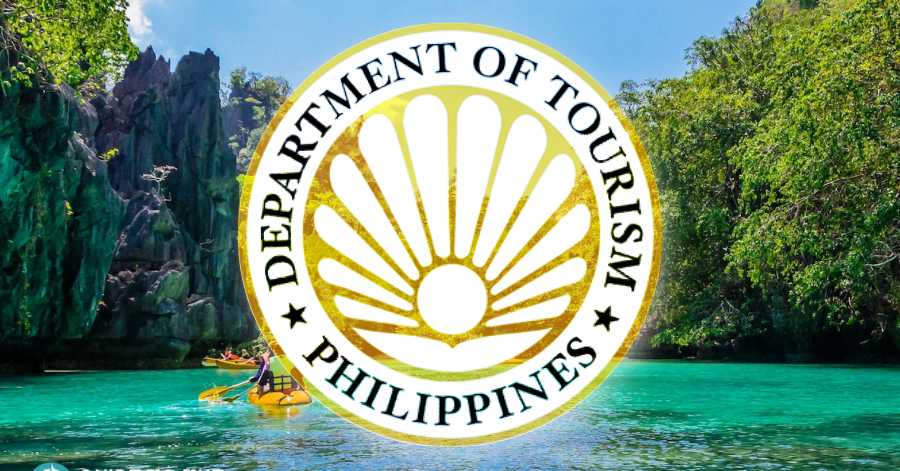
What is the Meaning of DOT?
DOT stands for the Department of Tourism in the Philippines.
What is the Purpose of DOT?
The Department of Tourism (DOT) is the primary planning, implementing, and regulatory government agency tasked to develop and promote the Philippine tourism industry, both domestic and international.
The agency is also tasked to manage, operate, and maintain all government-owned tourism facilities. It is the sole owner of all Philippine tourism-related trademarks, as well as its logo and slogan “It’s more fun in the Philippines.” The DOT is headed by a Secretary who reports directly to the President of the Philippines.
The DOT is mandated to formulate tourism plans and programs to promote, develop and regulate the country’s tourism industry as a major socio-economic activity that generates foreign currency and local employment, and to spread the benefits of tourism to a wider segment of the population with the support, assistance, and cooperation of both the private and public sectors.
The DOT is also responsible for promoting the Philippines as a tourist destination, and to this end has created several tourism campaigns that have become well-known around the world. These include “It’s more fun in the Philippines;” “Pilipinas Kay Ganda;” “Sights, Sounds and Flavors of the Philippines;” and “Traveling with Children”.
The DOT envisions “to position the Philippines as a premier tourist destination in Asia”. This vision aims to make travel an integral part of Filipino life through sustainable tourism development that will create new jobs for Filipinos while conserving heritage sites and protecting cultural identities.
In its commitment to serve its purpose, the department is working with the following agencies:
Duty-Free Philippines Corporation: a government-owned and controlled corporation which operates the country’s airports and seaports. The company is engaged in the sale of duty-free goods to foreign nationals who are transiting or on a stopover in any of its facilities. It also operates retail stores at Ninoy Aquino International Airport (NAIA) Terminal 1, NAIA Terminal 2, NAIA Terminal 3, Clark Intl. Airport and Mactan-Cebu Intl. Airport.
Intramuros Administration: the agency responsible for the administration, promotion, and development of Intramuros as one of the country’s tourist destinations.
National Museum : the government agency mandated to preserve, develop, and promote Philippine history and culture through its collection of artefacts, books, documents, and other materials related to Filipino heritage.
National Parks Development Committee: the agency responsible for the administration, development, promotion and protection of all national parks and other protected areas in the country. The committee is also tasked with promoting ecotourism activities that are consistent with preserving the natural resources found in these areas.
Nayong Pilipino Foundation: the government agency mandated to manage and develop the country’s tourism infrastructure through its Nayong Pilipino Parks, a network of theme parks showcasing Philippine culture and heritage. The foundation was formed in 2002 as a subsidiary of the DOTC.
Philippine Commission on Sports Scuba Diving: the government agency tasked with promoting and protecting the interests of recreational divers in the Philippines. The PCSSD is also responsible for regulating scuba diving activities in all Philippine waters and for ensuring that divers are properly trained and equipped before engaging in these activities.
Philippine Retirement Authority: the government agency tasked with managing the country’s pension and retirement funds. The PRSA was created by virtue of Executive Order No. 386, which was issued by former President Fidel Ramos in 1996.
Tourism Infrastructure and Enterprise Zone Authority (TIEZA): the agency that oversees the development of tourism infrastructure and enterprise zones in the Philippines. TIEZA is tasked with promoting sustainable tourism, managing public-private partnerships, developing private property for tourism purposes, and providing assistance to investors interested in setting up new businesses in the country.
Tourism Promotions Board Philippines: the entity that promotes tourism in the Philippines. The Tourism Promotions Board of the Philippines is a government agency under the Department of Tourism. It was created through Executive Order No. 546, which was signed by former President Fidel Ramos on June 21, 1995.
Brief History
The Philippine Travel & Tourism Association was established in 1950 to promote the country as a major travel destination. In 1956, the Board of Travel & Tourist Industry was established by Congress as a law following the Integrated Reorganization Plan of 1972.
The following year, the Department of Commerce and Industry was merged with the Trade and Tourism Department to form a new agency known as the Philippine Tourism Commission. The objective of the commission is to oversee the development of the tourism industry in the country.
In 1973, President Ferdinand Marcos established a new Department of Tourism, which was composed of two separate agencies. One of these was the Philippine Tourism Authority, while the other was the Philippine Convention Bureau. The new agency was then renamed the Ministry of Tourism. The structure of the department was changed following the implementation of the 1973 Constitution, which provided for the division of government.
In 1986, President Corazon Aquino signed Executive Order 120 and 120A, which reorganized the Department of Tourism. The Convention Bureau was then renamed the Philippine Convention & Visitors Corporation. The Intramuros Administration was also included in the department. In 1998, the Tourism Department was instrumental in celebrating the country’s independence from Spain.
In 2003, the Department of Tourism launched the World Wide Opportunities for Philippines (WOW Philippines) project, which was under the leadership of Senator Richard Gordon.
The passage of Republic Act 9593 in 2009 was regarded as the most significant event in the tourism industry of the Philippines.
Functions and Responsibilities of DOT
The Department of Tourism is responsible for promoting tourism in the Philippines. It does this by developing and managing tourist spots, as well as promoting them through advertising campaigns. The department also regulates the industry to ensure that all businesses are operating within the law.
Office of the Secretary
The Office of the Secretary is responsible for providing leadership and direction to the Department of Tourism. It is also responsible for developing policies and programs, reviewing the effectiveness of the Master Plan, and advising the President on all matters related to the tourism industry.
Tourism Promotions Sector
The Department of Tourism’s tourism promotion sector is responsible for promoting the Philippines as a preferred tourist destination. It is also responsible for developing and implementing marketing programs and promotional activities that are geared toward increasing the country’s tourism profile. It also oversees the department’s overseas field offices that are responsible for enhancing the tourism promotion program of the country.
Tourism Services and Regional Offices Sector
The sector is responsible for ensuring that the various services and facilities of tourist establishments are maintained and operated in a manner that is consistent with international standards. This includes setting uniform standards for the quality of service and ensuring that the establishments are following proper safety and environmental practices.
This division is also responsible for overseeing the implementation of the department’s policies and programs, as well as maintaining the effectiveness of the department’s regional offices.
Planning, Product Development and Coordination
The division is responsible for developing and implementing the department’s Master Plan, as well as its various component programs. It is also responsible for monitoring the implementation of the plan and developing new investment opportunities that will benefit the tourism industry.
Internal Services Sector
The division’s various sections provide effective and efficient services to the Department of Tourism, which ensures that its operations are conducted in a legal and ethical manner. These include human resources management, information technology services, general services administration, and budgetary management.
The Department of Tourism is responsible for the following:
-To formulate and implement plans and policies on tourism development in coordination with other government agencies involved in tourism promotion.
-To provide direction, supervision and control over the performance of all tourism-related activities by local government units (LGUs) within their respective territorial jurisdiction.
-To formulate and implement policies on the development and promotion of international tourism.
-To exercise supervision over the Philippine Tourism Authority (PTA), including its local offices.
-To coordinate with other government agencies concerned with tourism development in order to ensure that their policies will not be inconsistent or conflicting.
Laws enacted by the DOT
-Republic Act No. 9183 (Tourism Act of 2004), which provides for the establishment of a National Tourism Promotion Board and a Tourism Infrastructure and Enterprise Zone Authority;
-Republic Act No. 7916 (Tourist Attractions Development Act of 1995) is aimed at promoting tourist attractions development in the country through its provision on incentives to investors;
-Republic Act No. 7593 (An act providing for the establishment of an inter-island linkage system);
-Republic Act No. 7591 (An act establishing the Philippine Tourism Authority); and
-Senate Bill No. 1526 (Tourism Development Fund Act of 2009).
List of Programs and Services of DOT
The Department of Tourism (DOT) is the government agency responsible for promoting and developing the Philippine tourism industry. It is headed by a Secretary of Tourism appointed by the President of the Philippines.
The DOT has several programs and services, namely:
International Inbound Marketing Program
International Inbound Marketing Program is a service that promotes Philippine tourism to foreign markets. It aims to attract more international tourists to visit the country and spend their money here. This program also helps in promoting local tourism products, services, and events overseas so they can be known by international travelers.
Inbound Marketing Support Services
The Inbound Marketing Support Services is a program that helps develop marketing strategies for the Philippine tourism industry. It also assists local government units (LGUs) and private companies in developing their tourism products, services, and events.
The program also supports the development of a brand identity for Philippine tourism. It aims to establish the country as a prime destination for international visitors by ensuring enough travel-related products and services are available in the market.
Outbound Marketing Program
The Outbound Marketing Program aims to promote Philippine tourism in key markets abroad. It also provides support services for local travel agencies and tour operators. The program helps set up trade shows, road shows, and other events that allow local tourism stakeholders to showcase their products or services to international visitors.
Marketing Research and Intelligence Division
The Marketing Research and Intelligence Division (MRID) is the central marketing research unit of the Department of Tourism. It provides business intelligence to help guide the Department’s marketing strategies and plans. The division conducts market surveys, researches trends in tourism demand, and analyzes data on visitor arrivals by country of origin.
Information Technology Center, Inc.
The Information Technology Center, Inc. (ITC) is the IT arm of the Department of Tourism. It provides information technology services to multiple government agencies, including the DTI and other departments under the DOTr, such as CICT and CAAP. The division also handles e-commerce systems for both domestic and international travelers.
Tourism Promotions Board
The Tourism Promotions Board (TPB) is the government agency responsible for promoting tourism in the Philippines. It implements various projects and programs that aim to boost tourism arrivals and generate more revenue from the industry. The TPB also manages advertising campaigns, such as “It’s More Fun in the Philippines”, which aims to increase awareness of Philippine destinations among international travelers.
Undersecretary for Tourism Program Management Office
The Undersecretary for Tourism Program Management Office (TPMO) is an agency under the Department of Tourism that oversees the implementation of various programs and projects. The TPMO also monitors the activities of other government agencies involved in tourism, such as CAAP, TPB, and DOT. Its main functions include creating tourism development policies and monitoring other agencies’ implementation.
World Trade Center Manila
The World Trade Center Manila (WTCM) is a business-centered building located along Pasay Road in Makati, Philippines. It is one of the most prominent landmarks in Metro Manila and is currently the country’s fourth tallest building. The building houses several shops, restaurants and offices that cater mainly to foreign companies doing business in the Philippines.
– SERVICES –
Check Payables : The agency’s payables or obligations to its creditors can be made through the issuance of modified disbursement system checks or government checks. These checks are usually issued after the approval of related documents.
Collection of Payments for Accreditation and Training/Fees/Bid Documents : All payments for the various services and activities of the Department of Tourism, including the accreditation and training, must be made in cash or check. These can be made through the following procedures: Order of Payment from the Accounting Division or the Accreditation Office.
Endorsement for Special Investor’s Resident Visa : -The service of the DOT endorsement saves you time and money because it gets you a resident visa without having to go back to your home country. You will be able to travel in and out of the Philippines with no problem as long as your visa is valid.
Endorsement of Tourism Development Project to the Board of Investments : The DOT endorsement of a tourism development project to the BoI is an essential step in getting a visa for your foreign investor. The BoI will help you decide which projects are eligible for investment by foreigners and how much money can be invested. If approved, you will get a certificate of investment eligibility that shows that the project has been approved. This document must be submitted with all other documents when applying for your visa at the Philippine embassy or consulate in your home country.
Endorsement for Tourism Road Infrastructure Program (TRIP) Proposal : The DOT also has a Tourism Road Infrastructure Program (TRIP), which is designed to improve the country’s tourism infrastructure through the construction of roads, bridges and flyovers. If you have a TRIP proposal and need an endorsement from the DOT for funding purposes, you will have to submit your proposal in person at any DOT office or send it via mail. The application form can be downloaded from the DOT website.
External Communications Handling : If you are a foreign company that wishes to set up an office in the Philippines, you will have to register with the SEC as an External Communications Handling (ECHC) agent. This is a requirement under Republic Act No. 1067 or the Securities Regulation Code of 2000. Once registered, your company will be able to provide services in relation to foreign investment into the country and communications between investors and their local partners.
Freedom of Information (FOI) Requests : If you are a foreign company, you may have to deal with Freedom of Information (FOI) requests. These are requests for documents that can be made by anyone who is interested in obtaining information about the government’s activities and policies. The government can reject these requests if they relate to “classified” matters or if providing the requested information would pose a security risk.
DOT Internship Application : Students who are interested in working as an intern with the Department of Tourism can apply online or by walk-in applications. To be eligible, you must be a Filipino citizen, have finished at least one year of college education, and speak English fluently. The application process involves submitting your resume and cover letter outlining why you would like to work with the DOT.
Issuance of Certificate of Tax Withheld : To get a Certificate of Tax Withheld, you need to submit an application form and pay the required fees. The DOT will then issue a certificate for you within three working days. This document is proof that your taxes have been withheld from your payment.
LDDAP/ADA Payables : To get LDDAP/ADA payables, you have to register with the DOT and apply for a license. After that, you will receive a list of documents needed to complete your application. You will then submit these documents and pay the required fees in order to get a license from the department.
Maintenance of Databank of Property Offerings : You need to maintain the databank of property offerings, which will be updated as soon as a new listing is added or an existing one is changed. You are also responsible for ensuring that all information in this database is accurate and up-to-date.
Media Coverage Requests : The Department of Tourism has a procedure for providing media and communication support to its various offices. These include its regional offices and other tourism-related agencies.
Payment through Checks : The agency’s obligations or payments to its creditors can be made through the use of a modified disbursement system, which is also known as government checks. These checks are issued after the approval of various documents.
Processing of Application for Vacant Position : The HR process for the recruitment of internal and external candidates for vacant positions is carried out according to the requirements of the ORAOHRA. As of 2017, the deadline for filling up positions has been set at nine months.
Readily Available Photos, Videos, and/or Reports Requests : The Department of Tourism’s media and communications department is responsible for providing a variety of media and communication services to its various offices.
Statistics Technical Assistance : The procedure for approval of requests for statistical data related to tourism is established by the Department of Tourism. It allows employees and other individuals to request such data.
Technical Assistance to Local Government Unit for Tourism Development Projects : The procedure for approval of a local government’s request for assistance in developing tourism infrastructure is outlined in this document.
Video: Department of Tourism-Philippines INFOMERCIAL
Here is an infomercial discussing the overview and Governance Performance Task of the Department of Tourism.
The Department of Tourism is responsible for promoting the Philippines as a tourist destination and for overseeing the country’s tourism industry. The department is headed by a Secretary of Tourism, who is a member of the Cabinet.
The department is tasked with developing and implementing policies and programs to improve the competitiveness of the Philippines as a tourist destination. It is also responsible for promoting the country’s tourism industry, and for regulating the tourism sector.
The department has several key units, including the Tourism Promotions Board, the Tourism Infrastructure and Enterprise Zone Authority, and the Philippine Tourism Authority. These units work together to promote the Philippines as a tourist destination and to develop and implement policies and programs to improve the country’s tourism industry.
Frequently Asked Questions
1. what is the role of the department of tourism in the hospitality industry.
The responsibilities of field offices include overseeing the activities of their staff members and providing them with the necessary information to make informed decisions. They are also responsible for the classification and approval of hotels and restaurants.
2. Who are the officers of the Philippine Department of Tourism?
The Department of Tourism is headed by Secretary Bernadette Romulo Puyat. Her deputies are Assistant Secretary for Policy and Planning Benito Bengzon Jr. and Assistant Secretary for External Affairs Rene Tingzon.
3. What are the functions of the DOT?
The DOT’s main functions are to promote and develop the country’s tourism industry; formulate policies and programs that will attract tourists; coordinate with other government agencies, local governments and private entities in order to implement these policies; conduct research on tourism-related issues, and provide information about the Philippines’ attractions to foreign tourists.
4. What are some achievements of the DOT?
The DOT has successfully attracted more foreign tourists to the Philippines. In 2017, the country welcomed almost 10 million visitors—a record high since it began recording tourist arrivals in 1952. The DOT also launched several projects that support the Philippine tourism industry, such as the “It’s More Fun in the Philippines” campaign in 2012 and its website, VisitPhilippines.com; the creation of the Tourism Infrastructure and Enterprise Zone Authority (TIEZA) in order to help develop tourism-related infrastructure; and the establishment of the Department of Tourism Academy (DOT Academy) to train local government officials, travel agents, and other stakeholders.
5. What are the roles and responsibilities of a tour guide?
Tour guides are responsible for providing travelers with information about the places they visit. They should also be able to manage groups and individuals, act as an intermediary between clients and local authorities (such as police officers), and make sure their clients have a memorable experience.
6. What steps should I take to become a licensed tour guide?
You should first make sure that you’re eligible for a tour guide license. You can apply for one at the Tourism Academy (DOT Academy) or the Department of Tourism (DOT).
7. Do I need a license to be a tour guide?
Yes. You will need to apply for a license from the Tourism Academy (DOT Academy) or Department of Tourism (DOT). What are the requirements for becoming a licensed tour guide? First, you must be at least 18 years old. Next, you should have completed a course on tourism in an accredited school or university. You should also pass the licensure exam and submit your application form with all necessary documents (including proof of citizenship).
8. Where can I apply for accreditation as a Tour Guide, Tour Escort or Tour Conductor in PH?
You can apply for accreditation at the Department of Tourism (DOT) or the Tourism Academy (DOT Academy).
9. How is my Tour Guide license printed and issued by the DOT?
Your license will be printed in a booklet form, which you can use as proof of your accreditation. The license is valid for one year from the date of issue and can be renewed upon submission of additional requirements.
10. Is there an expiration date on my Tour Guide license?
Yes. Your license will be valid for one year from the date of issue and can be renewed upon submission of additional requirements.
The Department of Tourism (DOT) is the government agency responsible for promoting tourism in the Philippines. It is under the Office of the President and led by Secretary Bernadette Romulo-Puyat. The DOT, which was established in 1959, promotes tourism through various programs and projects, including tourism promotions and marketing strategies, international trade fairs, grants to domestic and foreign travel agencies, airline companies and hotel chains, as well as airport improvements.
One of the biggest challenges facing the DOT is to increase international arrivals. In 2016, about 5 million tourists visited the Philippines; however, this number has yet been reached again since then due to political instability and other issues such as traffic congestion in Manila and increasing crime rates.
The DOT is also tasked with managing travel warnings issued by other countries against traveling to certain areas due to safety concerns or natural disasters. For example, travelers were advised against visiting Boracay Island after it was closed down due to environmental degradation caused by excessive tourism activities in 2018.
Filipinos, including OFWs, benefit from the work of the DOT by receiving more travel advice and tips from the agency’s website and social media accounts. This ensures that travelers are aware of the potential dangers and risks associated with traveling to certain places. The DOT also works closely with the Department of Foreign Affairs (DFA) to ensure that Filipinos abroad are protected from exploitation and abuse.
READ NEXT: PH Hailed as World’s Top Diving Destination, Intramuros Named Top Tourist Attraction
Contact Information
Address : IPO Building, The, 351 Sen. Gil J. Puyat Ave, Makati, 1200 Metro Manila Telephone Number : 0284595200 Website : http://www.tourism.gov.ph/ Facebook Page : https://beta.tourism.gov.ph/
Google Map Location :
Leave a Comment Cancel reply
You must be logged in to post a comment.
Philippine Tourism Authority
The Philippine Tourism Authority ( Filipino : Pangasiwaang Pilipino sa Turismo ), abbreviated as PTA , is an agency of the Philippine government under the Department of Tourism responsible for implementing policies and programs of the department pertaining to the development, promotion, and supervision of tourism projects in the Philippines .
Republic Act No. 9593 or “The Tourism Act of 2009” declares a national policy for tourism as an engine of investment, employment, growth and national development, and strengthening the Department of Tourism and its attached agencies to effectively and efficiently implement that policy, and appropriating fund thereof.The Act supports the establishment of Tourism Enterprise Zones (TEZs) which will contribute to the accelerated creation of employment opportunities by encouraging and supporting investments in the development and operation of these zones.
These TEZs will be the centers of tourism development in the country and are created with the objective of providing the necessary vehicle to coordinate actions of the public and private sectors to address development barriers, attract and focus investment on specific geographical areas and upgrade product and service quality.
The Tourism Infrastructure and Enterprise Zone Authority or TIEZA (formerly Philippine Tourism Authority), an attached agency to the Department of Tourism, is mandated to designate, regulate and supervise the TEZs established under this Act, as well as develop, manage and supervise tourism infrastructure projects in the country. It shall supervise and regulate the cultural, economic and environmentally sustainable development of TEZs toward the primary objective of encouraging investments therein.
The TIEZA is governed and its powers exercised by a Board of Directors (TIEZA Board) composed of The Department Secretary, The TIEZA Chief Operating Officer, The Tourism Promotion Board Chief Operating Officer, the Department of Public Work and Highways Secretary, the Department of Environmental and Natural Resources Secretary, the Department of Internal and Local Government Secretary, and five (5) representative directors that will be recommended by the Tourism Congress.
It is mandated by the DOT as:
•To designate, regulate, and supervise tourism enterprise zones established under R.A. 9593
•To develop, manage and supervise tourism infrastructure projects nationwide
•To provide technical and financial assistance to qualified tourism projects, investors and proponents (both government and private)
•To generate revenues to fund both national and corporate developmental needs and/or undertakings
•To exercise PTA functions under P.D. 564
The TIEZA is envisioned to be the recognized leader and authority in tourism development at par with international standards, responsive to cultural, environmental and social concerns that will generate investments, foreign exchange and employment to mold an enhanced sense of national pride for all Filipinos.
Committed to support the establishment of cultural, economic and environmentally sustainable TEZs; to attract investments on tourism development undertakings through effective management of TEZs, effective service delivery, and to continue to pioneer, develop and improve tourism destination through a more expansive private sector participation and aggressive pursuit of tourism infrastructure development.
TIEZA has been committed to its corporate thrusts for CY 11. Those are:
•Establish the necessary groundwork for the smooth transition of PTA into TIEZA based on the approved reorganization plan and in accordance with the organization’s new mandates as provided for in R.A. 9593;
•Promote local and foreign investments in tourism through the Tourism Enterprise Zones; and pursue projects and programs to make the Philippines as one of the top tourist destinations in the Asia-Pacific region;
•Harness and develop potential tourist destinations to spur socio-economic development, particularly in less developed regions, through tourism-related infrastructure projects;
•Encourage the local government units and the private sector participation in the formulation and implementation of tourism sustainable projects and programs;
•Intensify efforts to project TIEZA image as an effective developer of tourism destinations;
•Strengthen the organization’s information and communication technology systems for operational efficiency; and
•Further enhance the organization’s human resources through special trainings and scholarship programs.
As the infrastructure arm of DOT, TIEZA has been managing and operating several establishment. Among those operational are:
- Banaue Hotel and Youth Hostel
- Hilaga Northern Philippines
- Club Intramuros Golf Course
- Rizal Lights and Sounds Museum
- Balicasag Island Dive Resort
- Gardens of Malasag Mountain Resort
- Zamboanga Golf Course and Beach Park
To date, TIEZA is headed by Mark Tadeo Lapid , a former Pampanga governor and son of Senator Manuel Lapid . The ex-solon took his oath before then DOT Secretary Joseph Ace H. Durano on June 6, 2008 as Acting General Manager with former local elections running-mate and son of a business mogul in their native Pampanga, Paul Tristan Laus as his Chief-of-Staff. To provide assistance in handling documentary works, Abigail Falguera was hired as Lapid's Secretary who resigned in June 2011 for personal reasons after rendering nearly 3 years of government servic
On November 2010, Lapid sworn into office as Chief Executive Officer of TIEZA with the Laus as his Technical Assistant and Falguera as Secretary. Lawyer Joy M. Bulauitan, former Deputy General Manager for Administration has been named Assistant Chief Operating Officer for Tourism Enterprise Zones.
- Department of Tourism (Philippines)
External links
- TIEZA homepage
Navigation menu
Personal tools.
- Request account
- View source
- View history
- Recent changes
- Random page
- Infogalactic News
- Buy an account
- What links here
- Related changes
- Special pages
- Printable version
- Permanent link
- Page information
- Cite this page
- This page was last modified on 27 January 2015, at 08:53.
- Content is available under Creative Commons Attribution-ShareAlike License unless otherwise noted.
- This article's content derived from Wikipedia, the Free Encyclopedia ( See original source ).
- Privacy policy
- About Infogalactic: the planetary knowledge core
- Disclaimers
- Mobile view

IMAGES
COMMENTS
Tourism in the Philippines. Palawan, which includes Coron, is a UNESCO Biosphere Reserve. Tourism is an important sector for the Philippine economy. The travel and tourism industry contributed 6.2% to the country's GDP in 2022; [1] this was lower than the 12.7% recorded in 2019 prior to the COVID-19 lockdowns. [2]
Island and beach destinations in the Philippines, such as Boracay, Palawan, and Cebu , are best enjoyed during the dry season. 2. Friendly and Warm Filipinos. Aside from the Philippines' picturesque spots, the Filipinos' warmth and hospitality is a reason itself for you to visit the country.
The Philippines offers a wide variety of tourism, including eco-tourism, cultural and historical tourism, adventure tourism, food tourism, religious tourism, and health and wellness tourism, each providing unique and immersive experiences. Unique Aspects of Philippine Tourism. Diverse Landscapes. Rich Cultural Heritage.
Best Time to Go to the Philippines. The Philippines has two distinct seasons, wet and dry. The dry season starts from November until June. These months are considered the best time to travel to most destinations in the Philippines. The wet season, on the other hand, is from July to October.
Philippines. Asia. The Philippines is defined by its emerald rice fields, teeming megacities, graffiti-splashed jeepneys, smoldering volcanoes, bug-eyed tarsiers, fuzzy water buffalo and smiling, happy-go-lucky people. Best Time to Visit. 01 / Attractions.
Language and culture Filipino and English are the official languages of the Philippines — but the Philippines is an ethnically diverse country (and was a Spanish colony for 300 years), so more ...
The travel and tourism industry is one of the major contributors to the Philippine economy. In 2019, the industry contributed a record 12.7% of the country's GDP, amounting to PhP 2.48 trillion, a 10.8% increase over 2018. It is one of the largest service industries in the country in terms of gross revenue and foreign exchange earnings.
PHILIPPINES. The Philippines has long been synonymous with the idea of paradise, conjuring postcard-perfect visions of white sands and crystal waters. Varying with the shifting tide, this island country is composed of some 7,100 islets sprawled across the surface of the Western Pacific - most inhabitants occupy just 11 of them.
In light of the current COVID-19 situation, the Philippines has implemented temporary travel restrictions to contain the spread of COVID-19. We urge you to stay home and follow community quarantine protocols. Learn more.
18. Hanging Bridge, Sevilla. 19. Sugba Lagoon, Siargao. Best Time to Visit The Philippines. 1. White Beach, Boracay. White Beach, Boracay. There is no shortage of pristine beaches in the Philippines, but if you are looking for a more active beach scene, one of the best places to visit is White Beach in Boracay.
World Heritage Sites; it's an adventure you've. always wanted to take. Beyond smiles and. casual greetings; it's friendship you. weren't expecting. to make. We're excited to share all these and more to the world.
Manila, Philippines - The Department of Tourism (DOT) and the Tourism Promotions Board (TPB) Philippines launched Travel Philippines, the country's official travel companion, today, 30 October 2020. The app provides users access to the latest travel advisories and safety guidelines in various destinations that have reopened to tourism.
8. Kayangan Lake, Coron, Palawan. Undoubtedly one of the most photographed and iconic destinations in the Philippines is Kayangan Lake in Coron, Palawan. Going on a Kayangan Lake Coron tour will allow you to see its lagoon that is a dreamy mix of blues and greens glistening on a bright, sunny day.
Tourism in the Philippines the Philippines recorded a total of 164,000.00 tourists in 2021, ranking 105th in the world in absolute terms. The fact that larger countries regularly perform better in a comparison of the absolute number of guests is obvious. By putting the tourist numbers in relation to the population of the Philippines, the result ...
In June, 2023, the Department of Tourism (DOT) unveiled a new tourism slogan - "Love the Philippines." Love the Philippines (Photo from DOT Facebook page) "'Love the Philippines' is a recognition of our natural assets, our long and storied history, our rich culture and diversity," said Tourism Secretary Christina Frasco during DOT ...
The PCB has been renamed the Philippine Convention and Visitors Corporation, its functions expanded to include general tourism promotion. The Intramuros Administration and the National Parks Development Committee were also attached to DOT. And in December 1991, the Ngayon Pilipino Foundation became an attached agency of the DOT.
Here are some of the DOT-Accredited Farm Sites in the Philippines: Layog Country Farm - Mountain Province. Terra Verde Eco Farm - Maragondon, Cavite. Amancio's Dairy and Produce Farm - Cordon, Isabela. Tam-An Eco-Tourism Farm - Bayombong, Nueva Vizcaya. The Farmhouse by EDL - Capas, Tarlac. Amadeo Nurture Farmacy - Cavite.
A Philippine Tourism Commission was created under the unified Trade and Tourism Department to oversee the growth of the tourism industry as a source of economic benefit for the country. In 1973, President Ferdinand Marcos created a new cabinet-level Department of Tourism (DOT) by splitting the Department of Trade and Tourism into two separate ...
The Tourism Infrastructure and Enterprise Zone Authority ( TIEZA ), formerly the Philippine Tourism Authority ( Filipino: Pangasiwaang Pilipino sa Turismo ), is an agency of the Philippine national government under the Department of Tourism responsible for implementing policies and programs of the department pertaining to the development ...
Updated: December 6, 2023. The Department of Tourism (DOT) functions as the executive department of the Philippine government, with a critical responsibility for regulating the nation's tourism industry. Its primary objective is to promote the Philippines as an appealing and captivating tourist destination on the global stage.
The Department of Tourism (DOT) is the primary planning, implementing, and regulatory government agency tasked to develop and promote the Philippine tourism industry, both domestic and international. The agency is also tasked to manage, operate, and maintain all government-owned tourism facilities. It is the sole owner of all Philippine tourism ...
Learn about the national policy and legal framework for tourism development in the Philippines from the official source.
The Philippine Tourism Authority ( Filipino: Pangasiwaang Pilipino sa Turismo ), abbreviated as PTA, is an agency of the Philippine government under the Department of Tourism responsible for implementing policies and programs of the department pertaining to the development, promotion, and supervision of tourism projects in the Philippines.